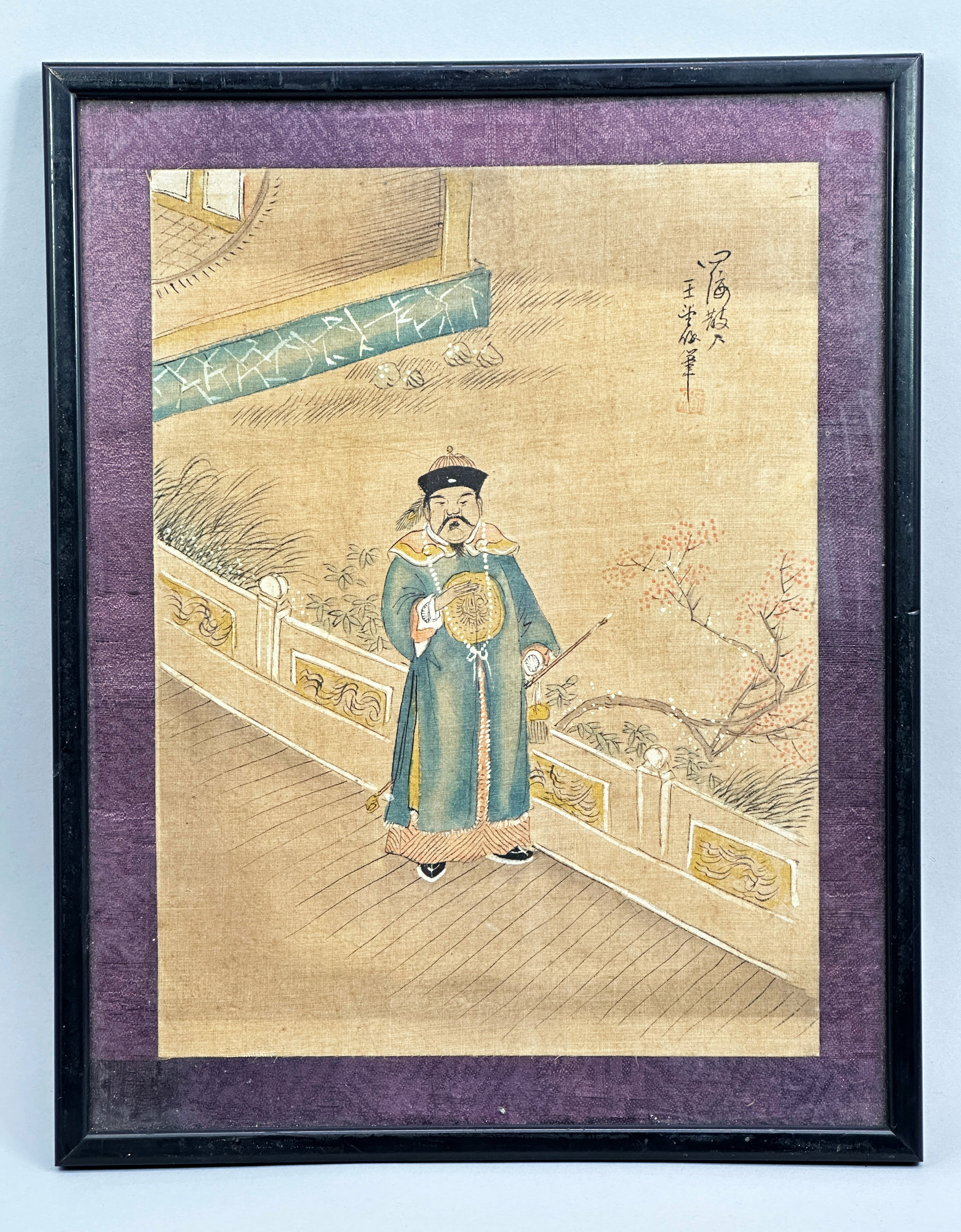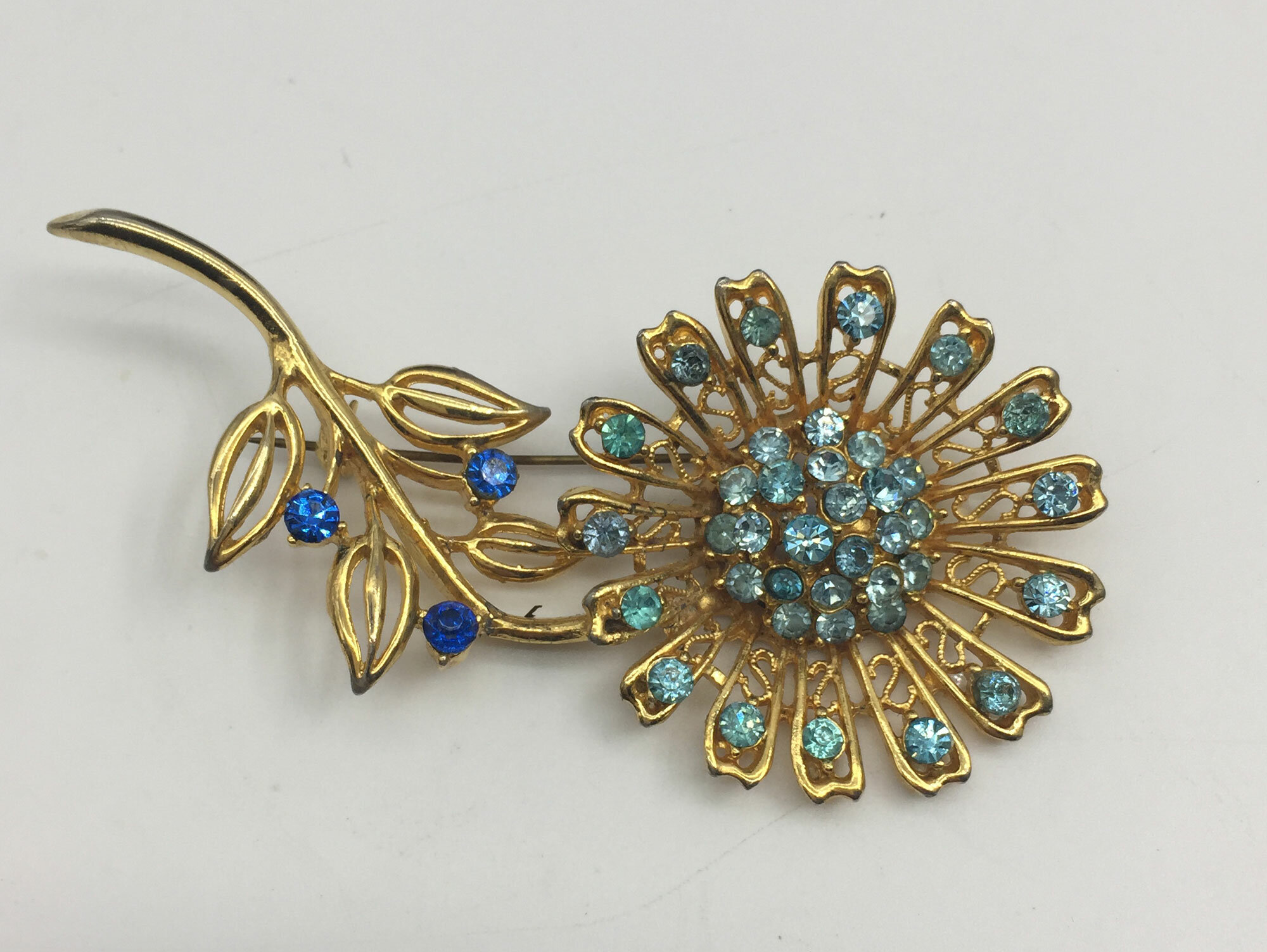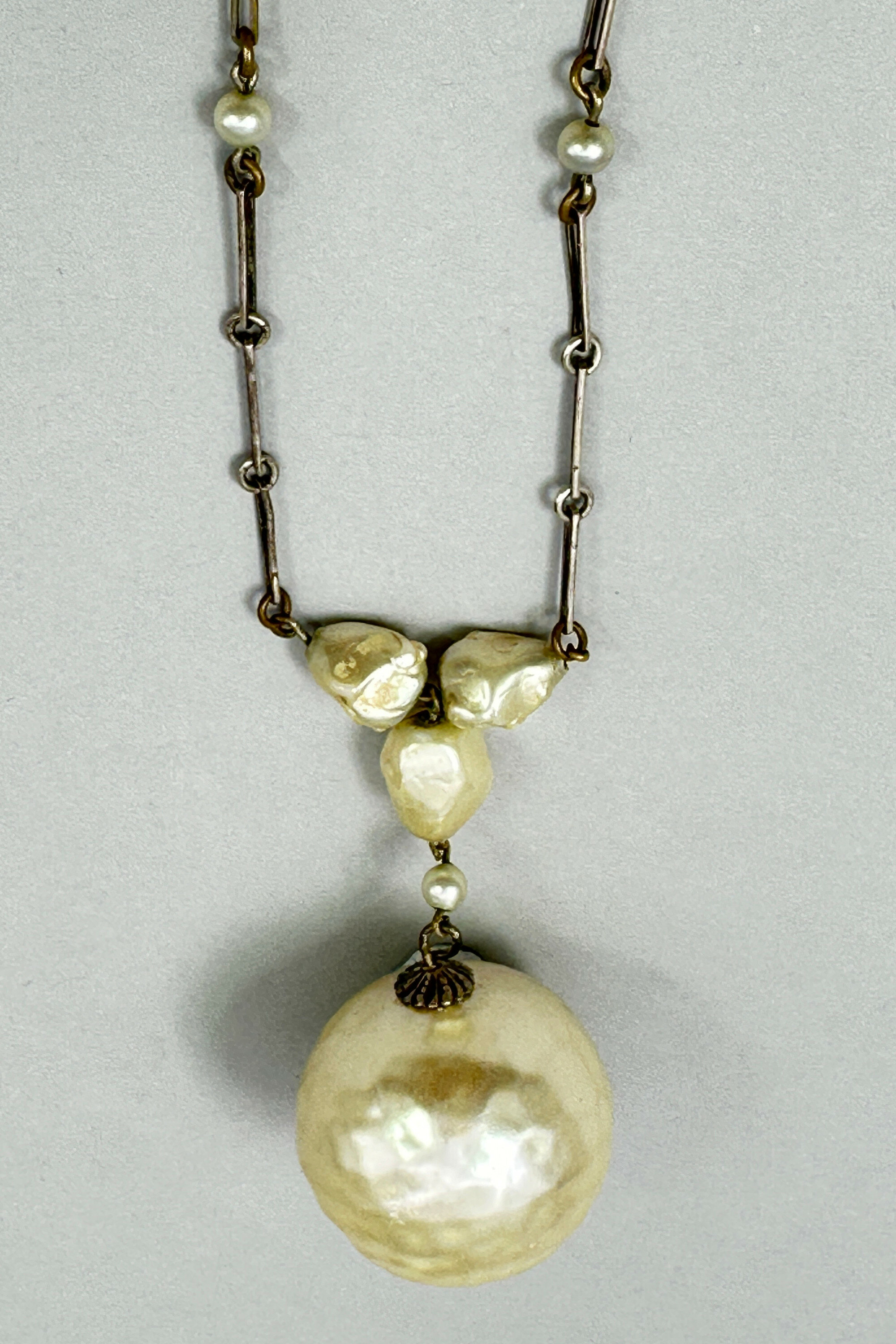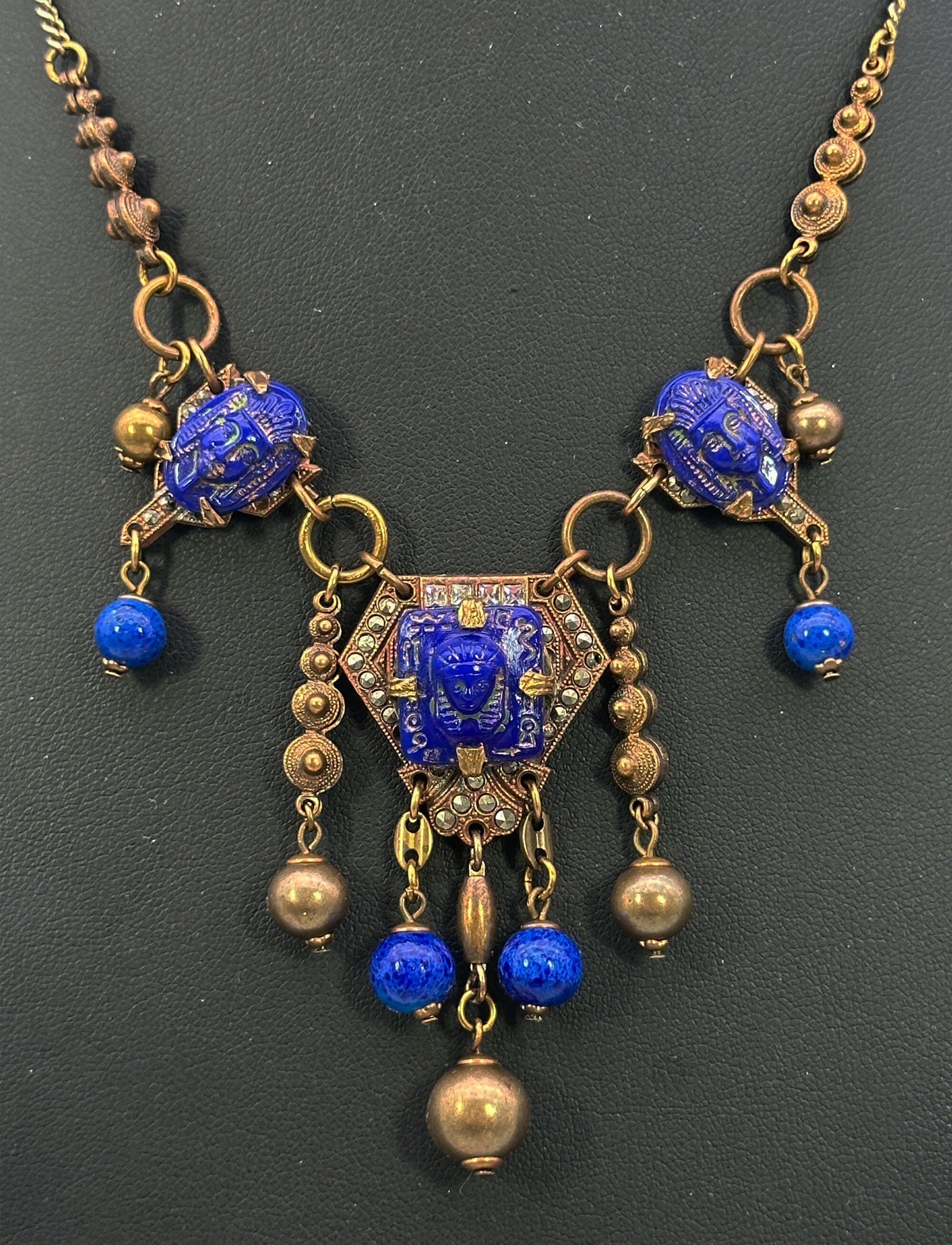
Neiger Brothers necklace with Egyptian Revival glass plaques c1930
Price: £225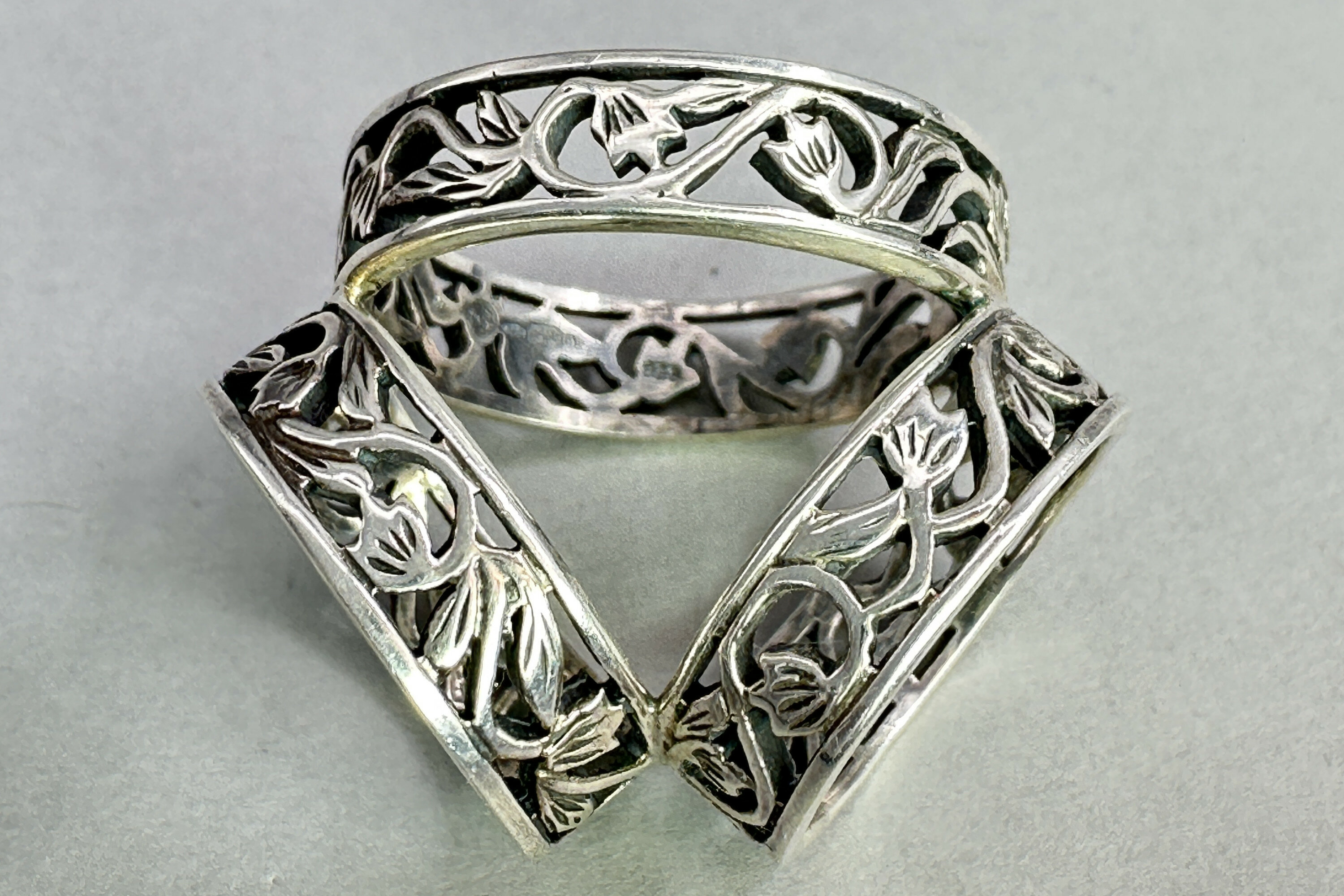
Rennie Mackintosh silver scarf ring with scarf included, c1990
Price: £45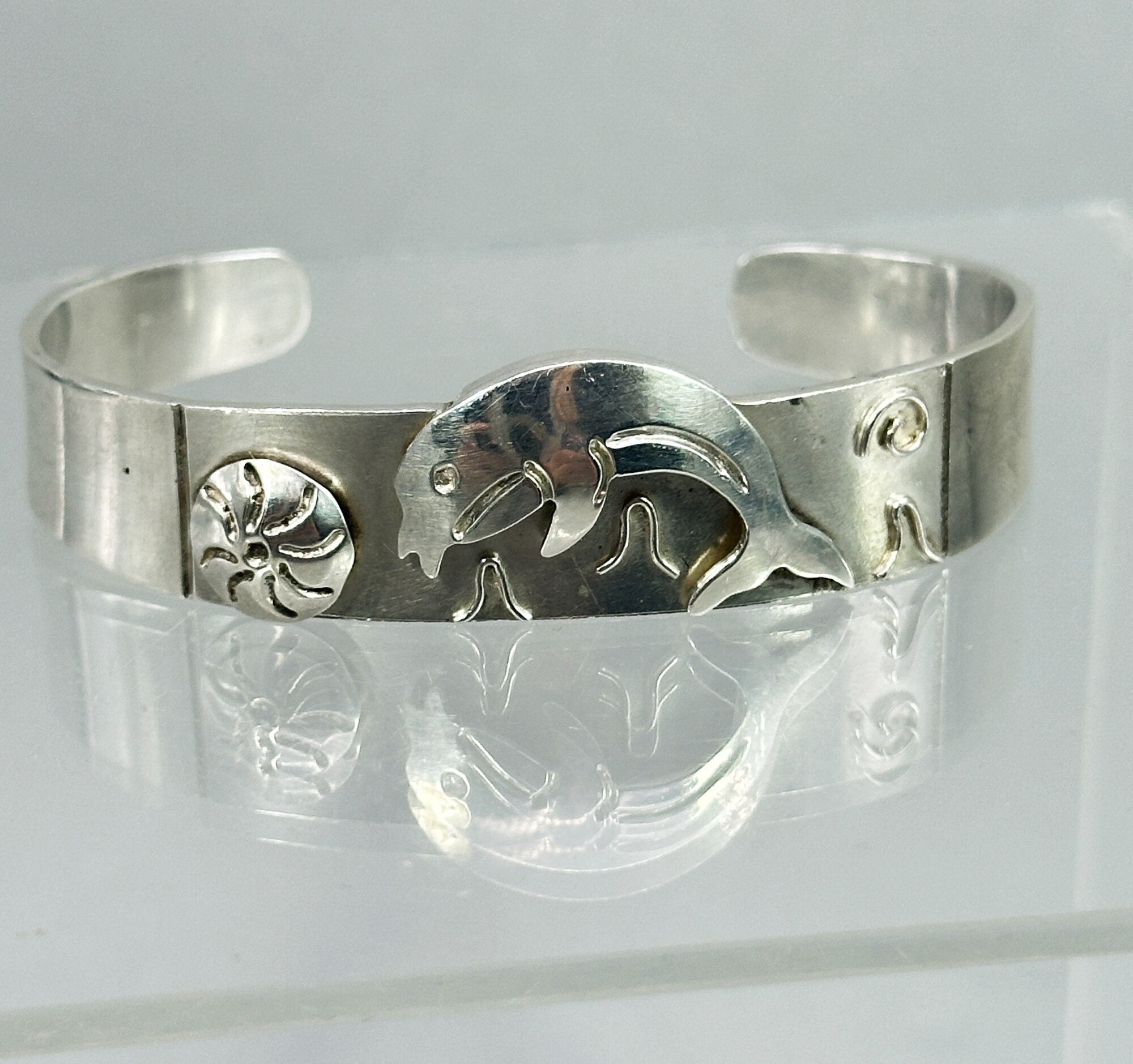
Mexican silver dolphin bangle bracelet c1990
Price: £65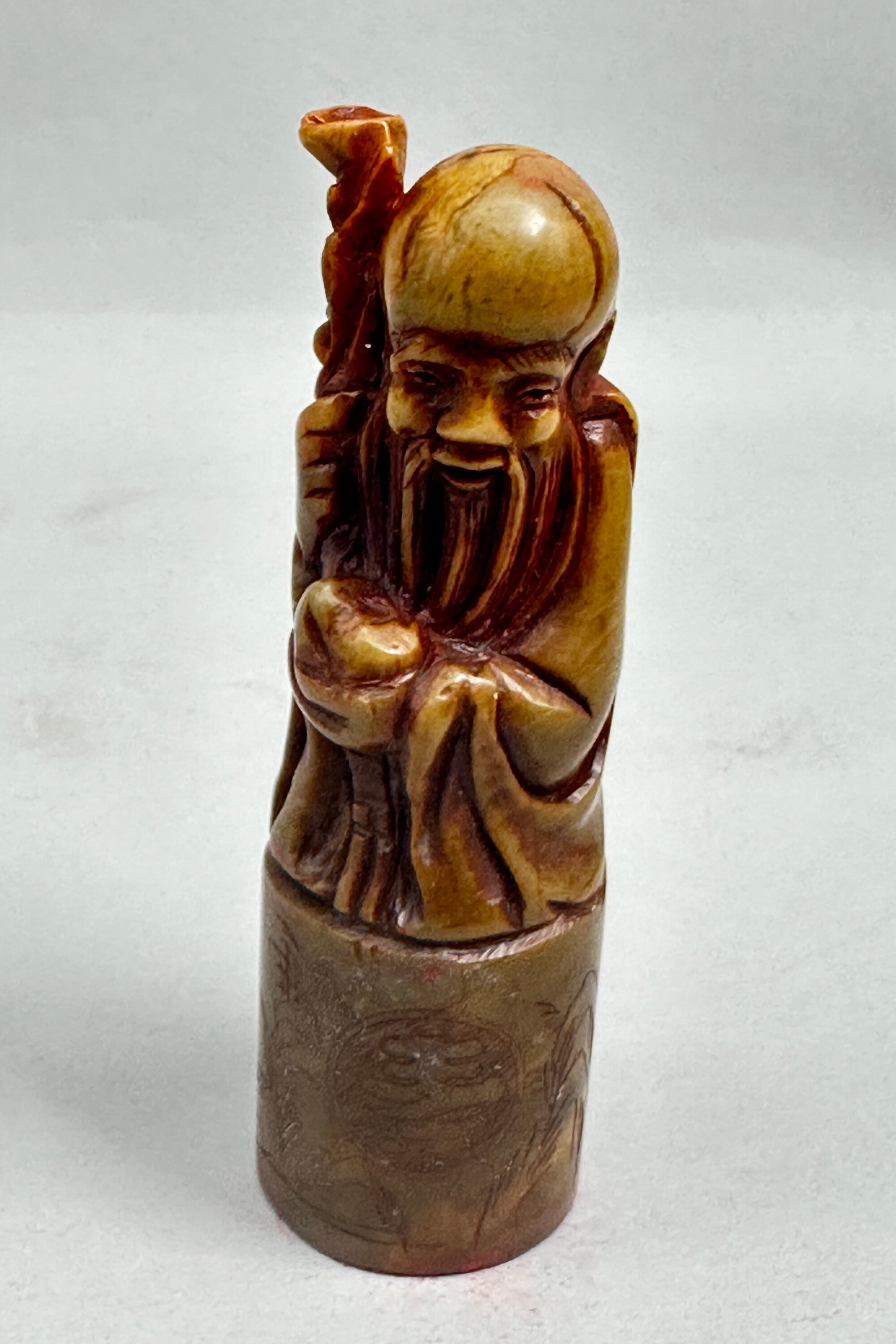
Chinese Soapstone Seal with Shou Lao, C20th
Price: £45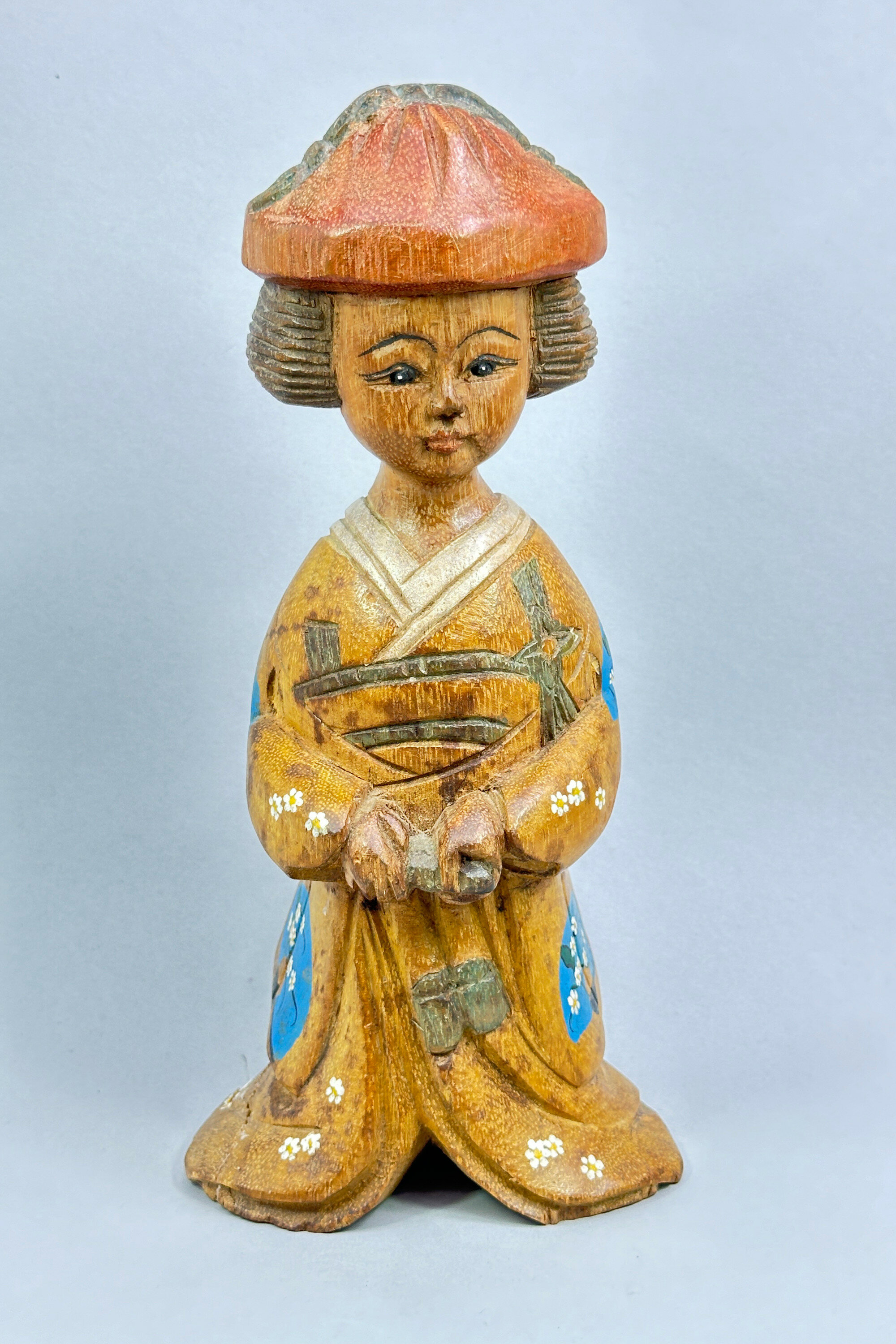
Japanese Carved Wood Figure of a Young girl, Kokeshi doll style, C20th
Price: £45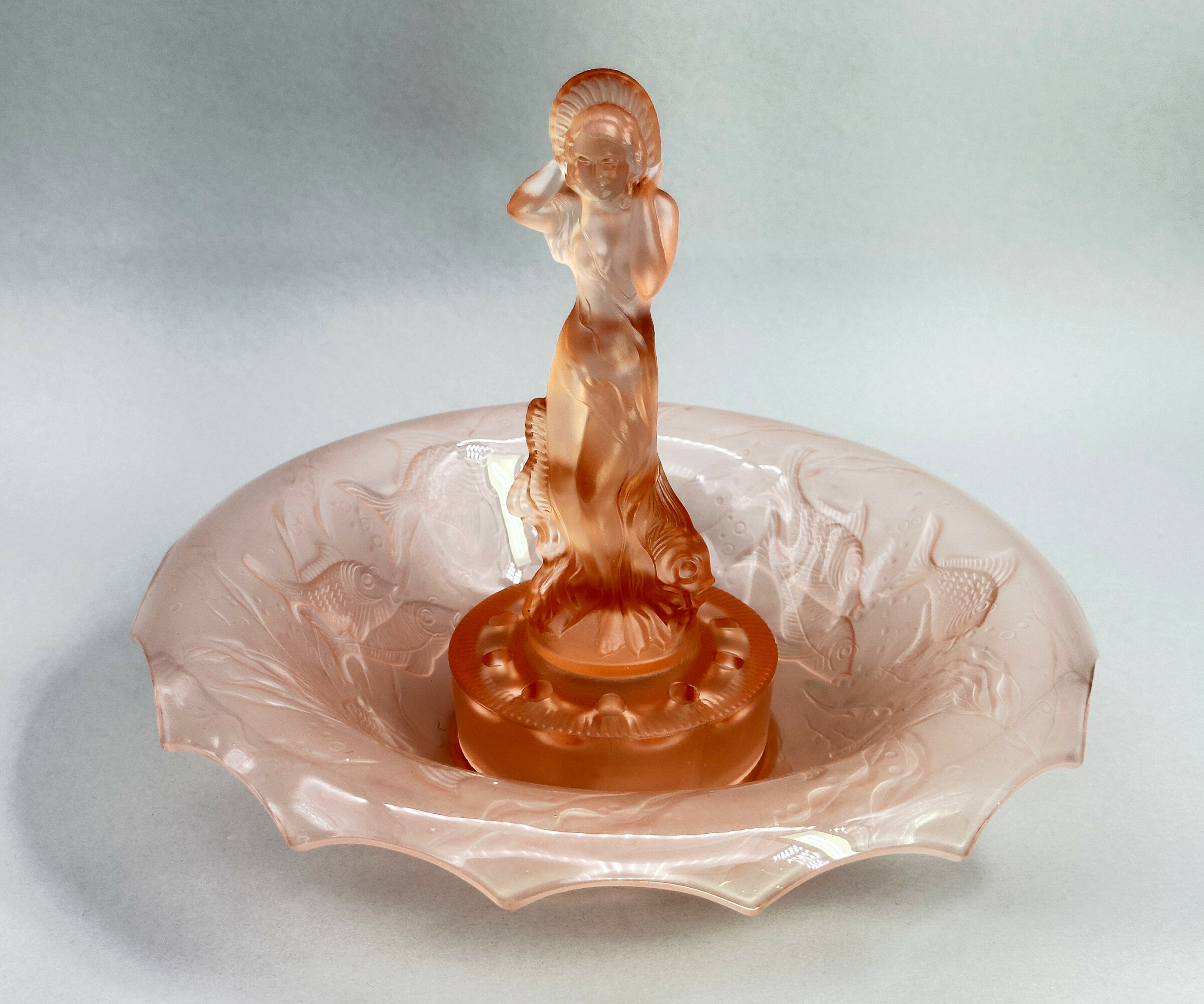
Pink Glass Centrepiece Set, Arabella, Walter and Sohne, 1930s
Price: £55The influence of Art Deco style of this piece is clear and it does indeed date to the 1930s. The model, termed ‘Arabella’ can apparently be seen in the 1934 catalogue of the German glass manufacturers Walther and Sohne, founded by August Walther in 1888 at Ottendorf-Akrilla near Dresden. In the 1930s the firm was famous for its Art Deco designs and also produced a version of ‘cloud glass’ which at one time was held to be exclusive to the English manufacturer Davidson. But some of the English glass makers also drew on their German rival’s work such that Walther and Sohne patented some of their designs in the UK in 1937, presumably to protect their work. This centrepiece set is a classic example of Walther and Sohne’s pre war productions and a distinctive example of Art Deco glassware.

Celluloid Bangle with Tortoiseshell style decoration circa 1930
Price: £20PLEASE NOTE THAT THERE IS FREE UK SHIPPING ON THIS ITEM. For international buyers the shipping cost will be reduced by the UK shipping cost, so don't worry if you are outside the UK, you still receive this benefit!

Art Deco Scottish agate brooch 1930s
Price: £35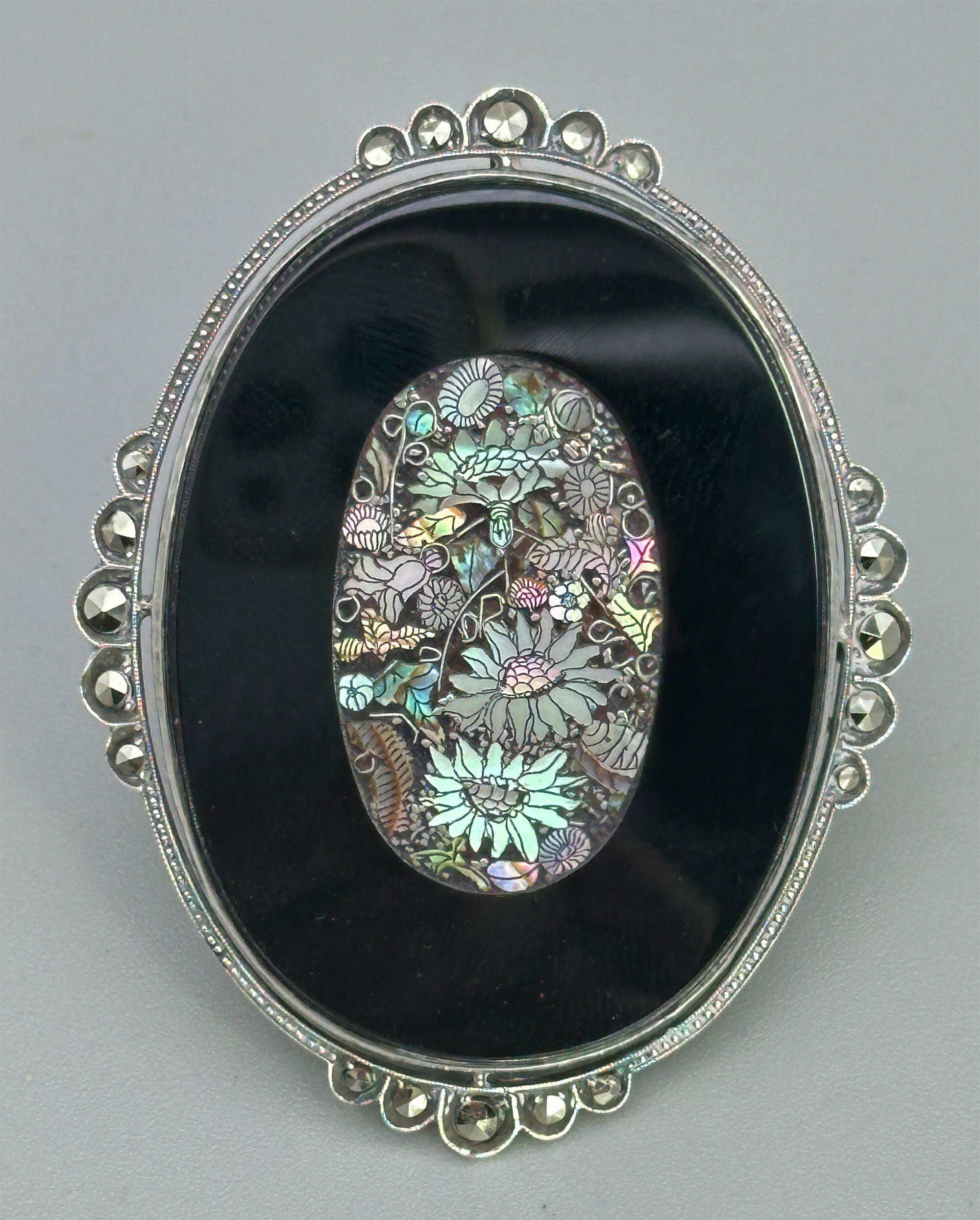
Art Deco brooch with Shibayama style mother of pearl plaque c1920
Price: £225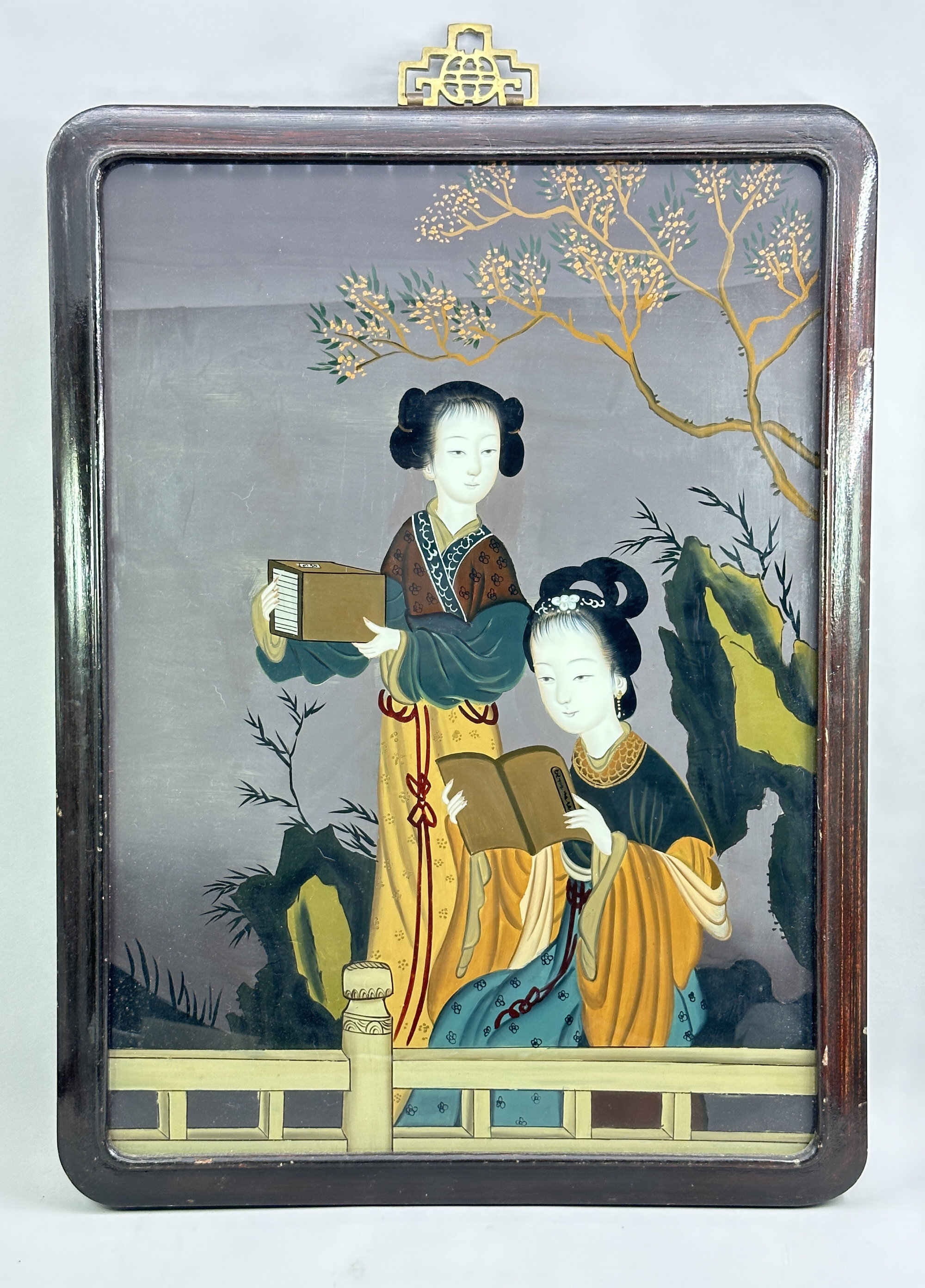
Chinese Reverse Glass Painting of Two Ladies on a Garden Terrace, first half C20th
Price: £240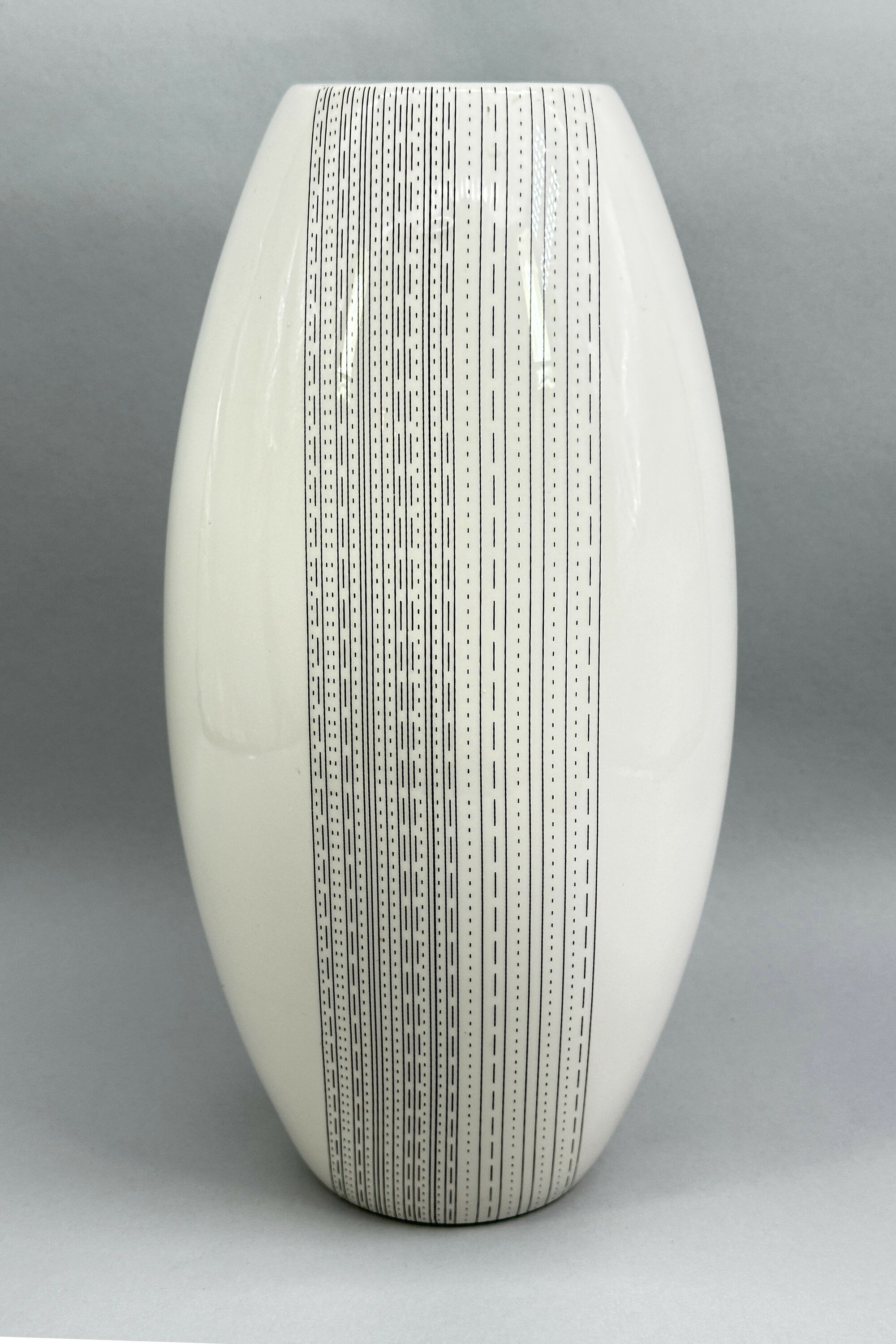
Abstract Design White Glaze Vase, probably British mid C20th
Price: £25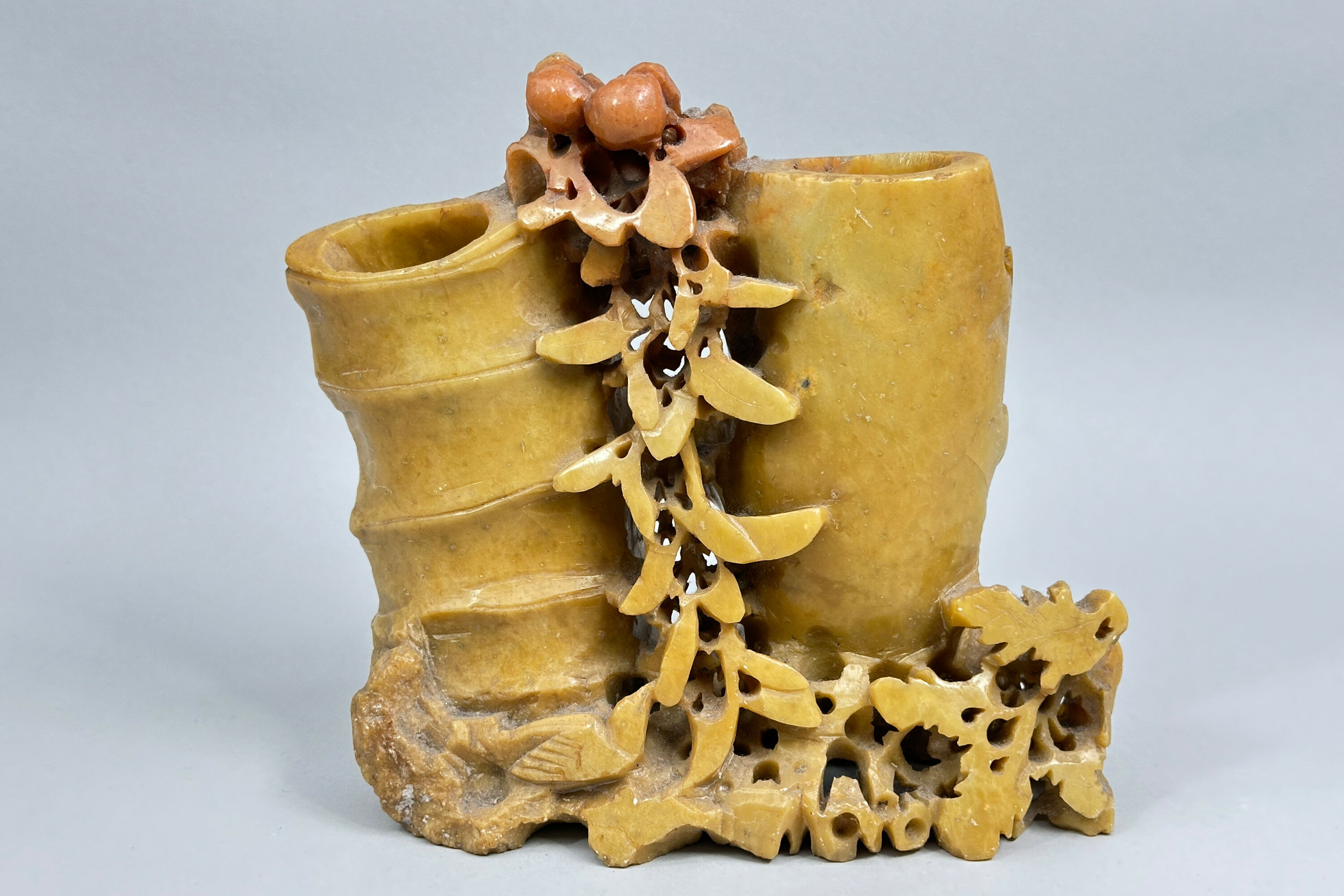
Chinese Soapstone Double Brushwasher, C20th
Price: £45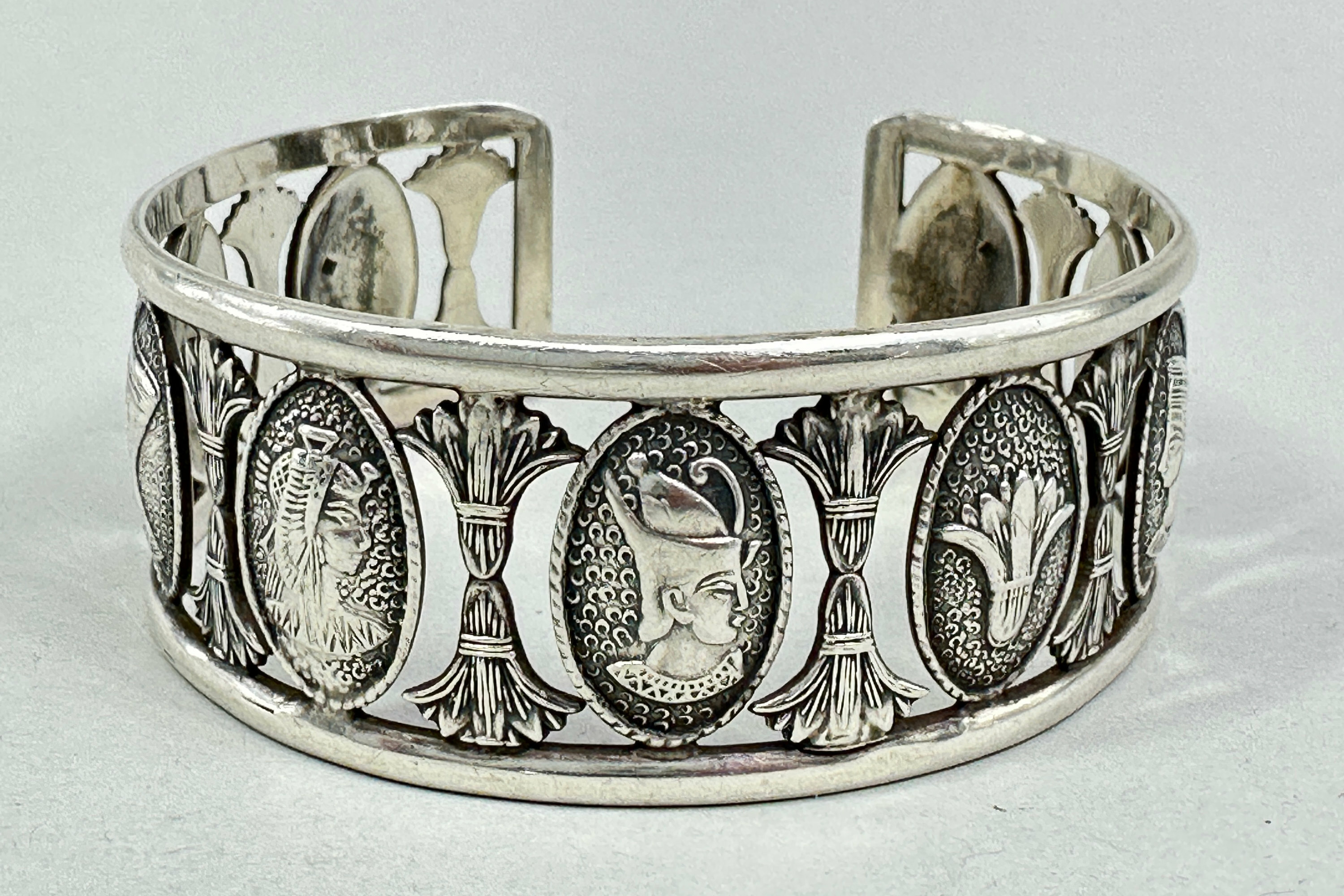
Egyptian silver cuff bangle with portait plaques of Pharoahs
Price: £85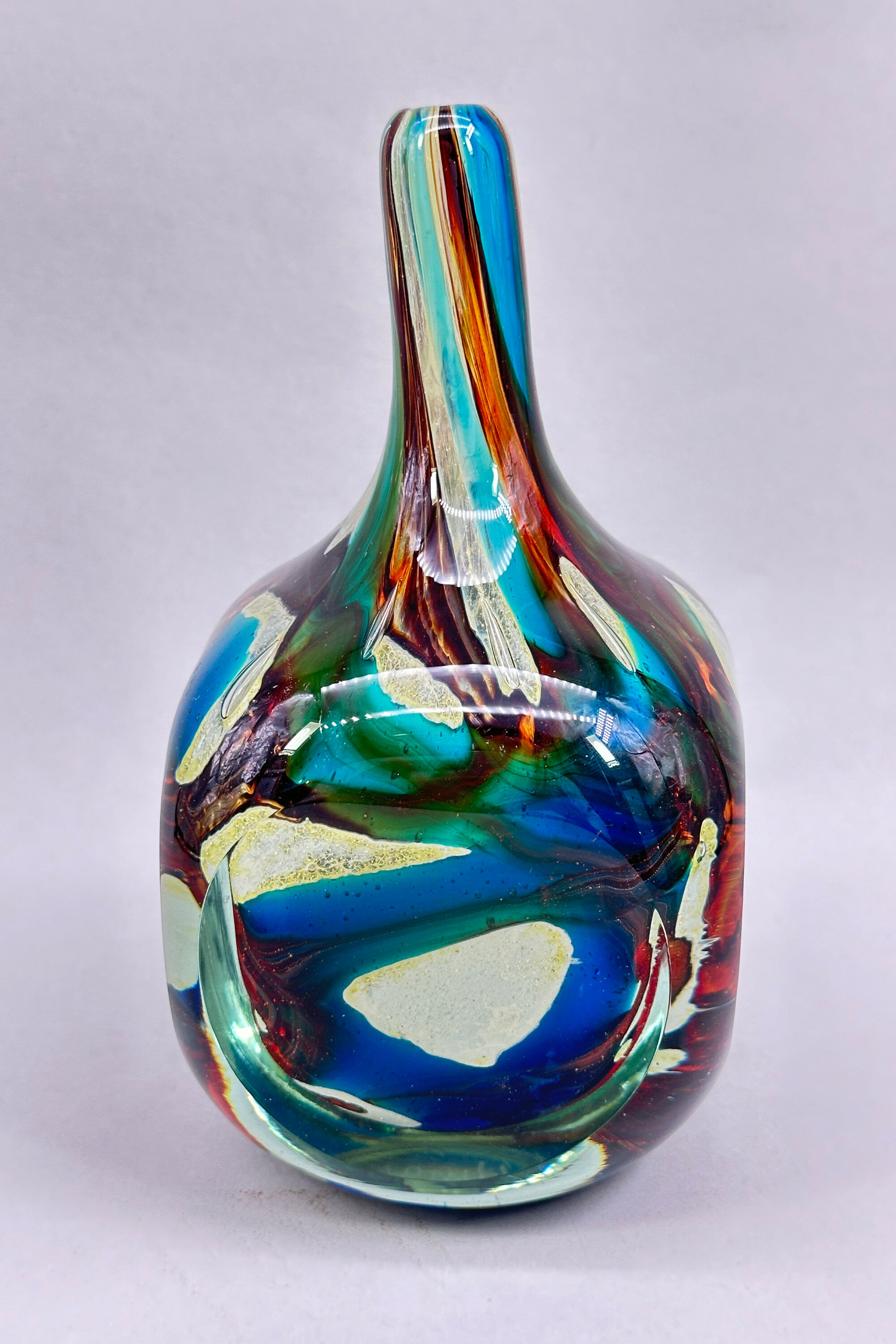
Mdina Art Glass vase, signed and numbered 1979, late C20th
Price: £95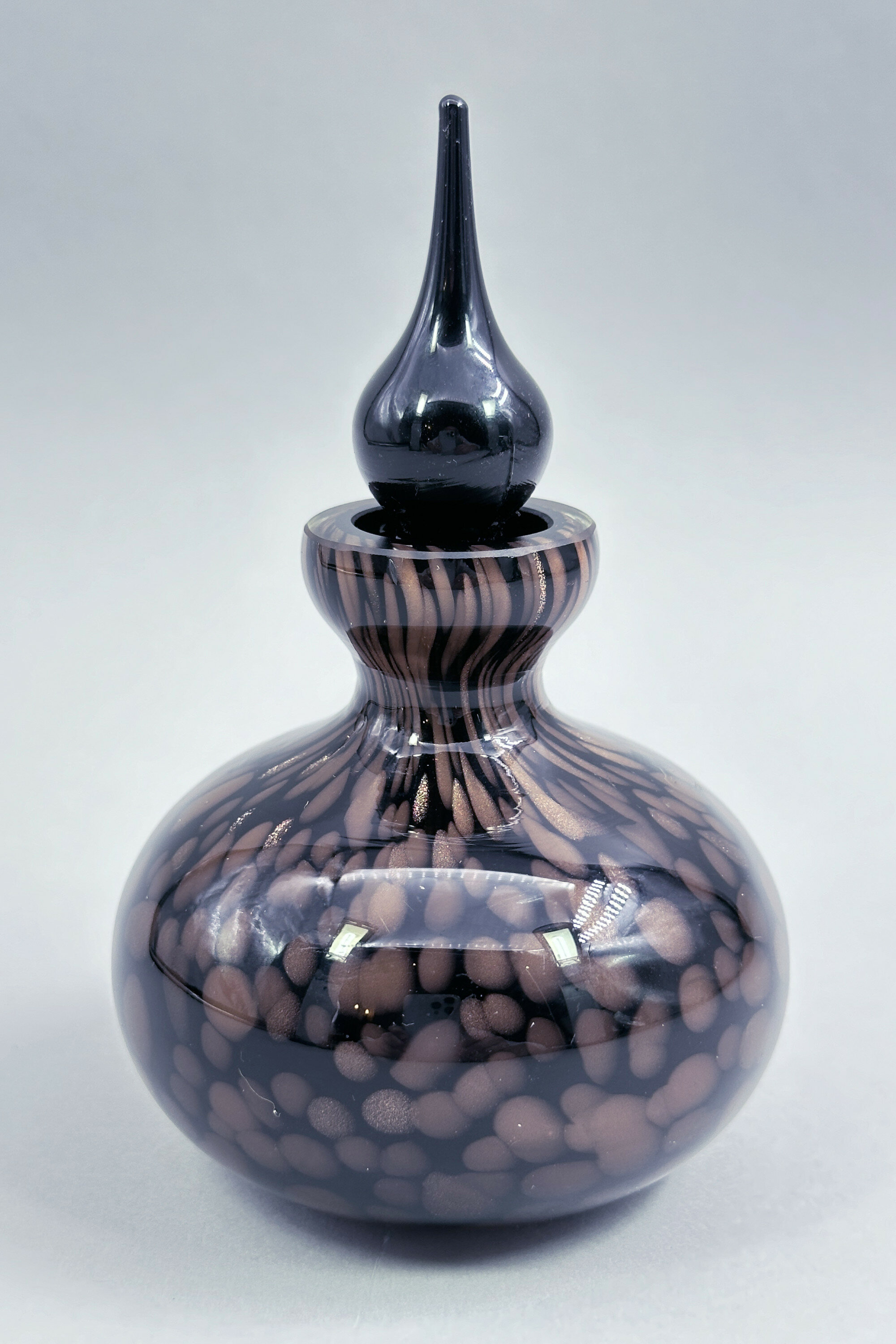
Black and Gold Copper Glitter Art Glass Scent Bottle, probably Murano late C20th
Price: £55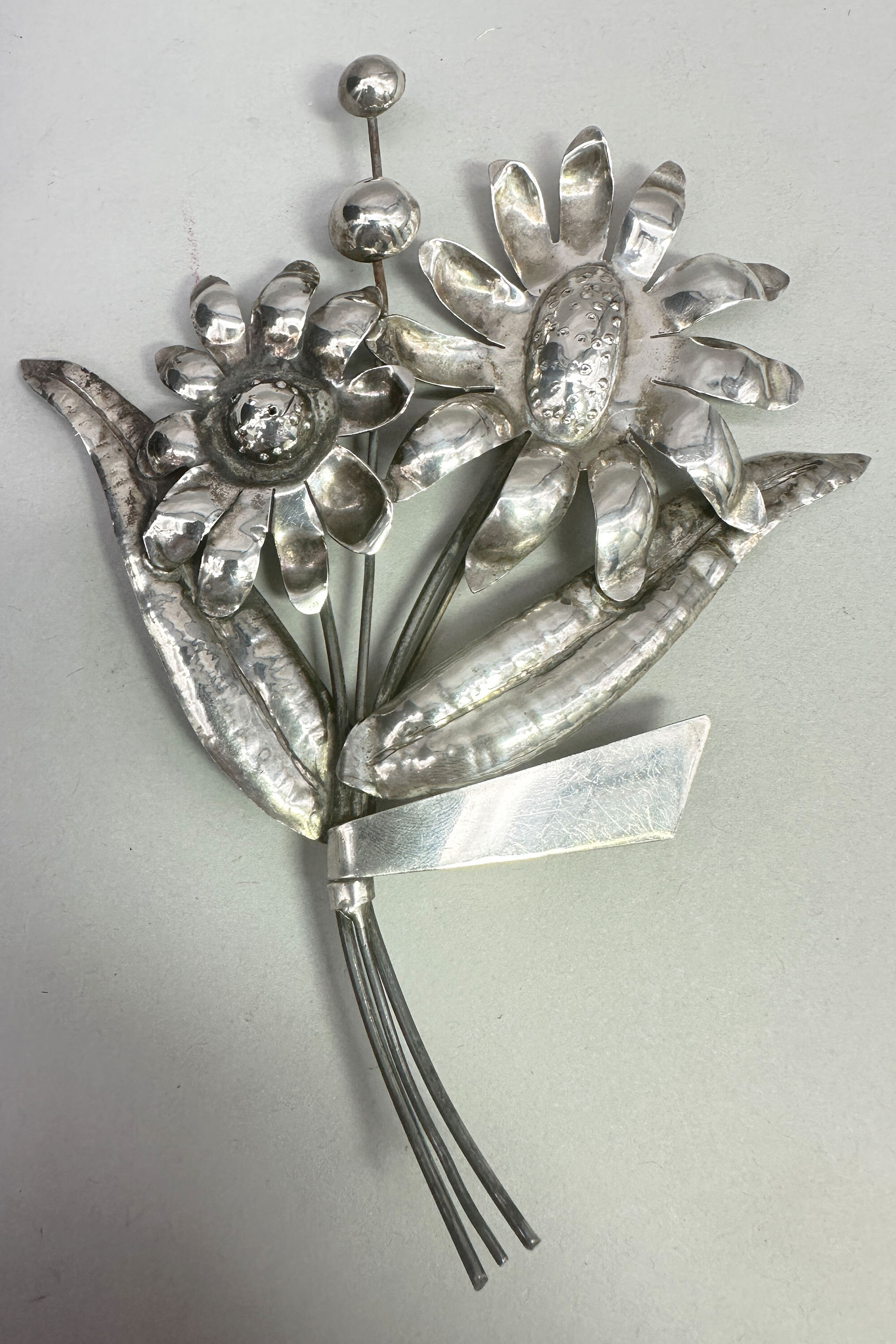
Mexican silver floral brooch 1930s
Price: £40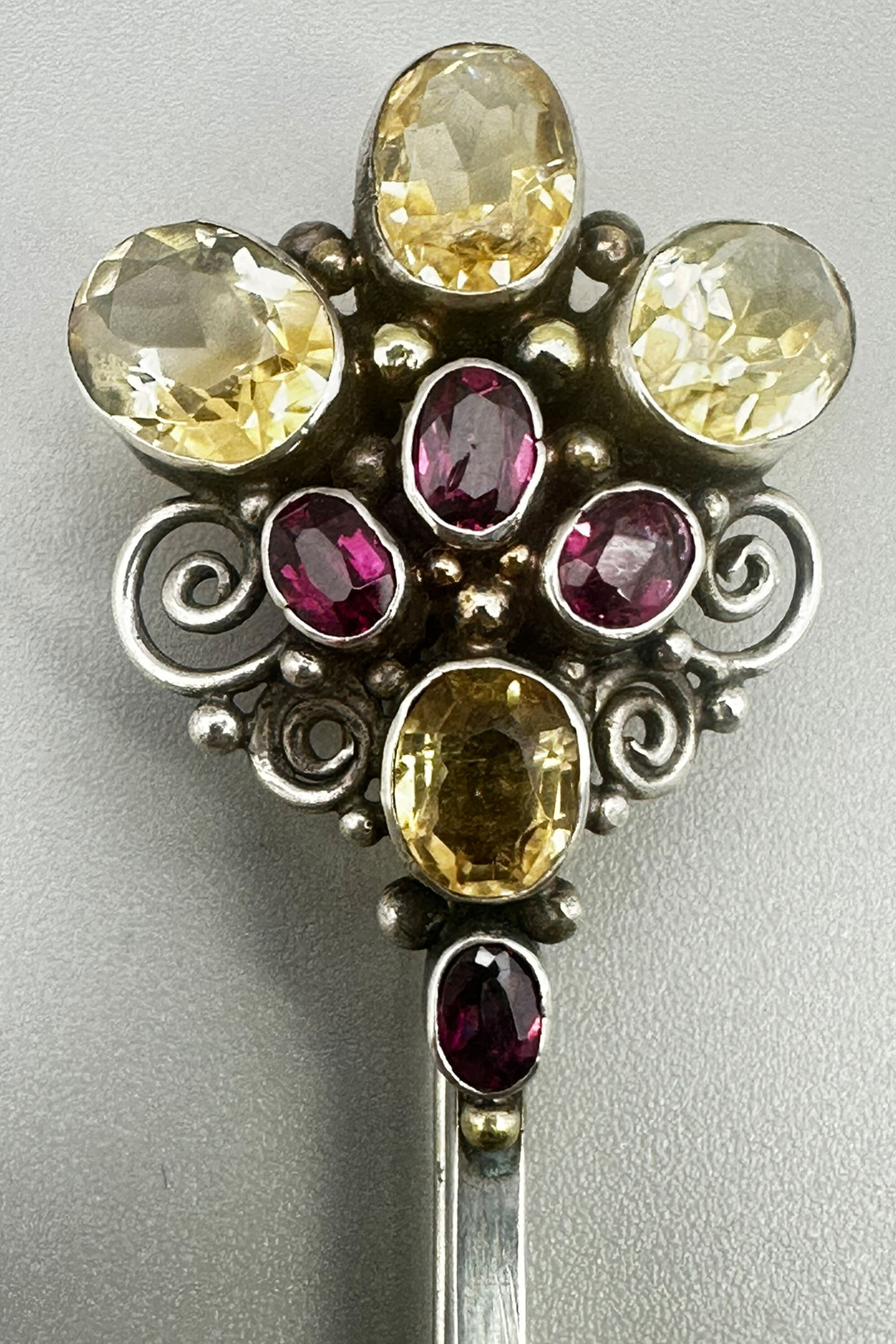
Art Deco citrine and pink sapphire brooch c1920
Price: £175
Round pendant set with turquoise, Mexico, c1970, the chain later.
Price: £65
Ceramic Model of a Fish, Jema Holland, signed, 1950s/1960s
Price: £30The Jema factory in Holland was started by two brothers, Jelis Mager ( born 1912 in Rotterdam, Netherlands) and his brother Johan Willem Mager (born 1919 also in Rotterdam) both living in Maastricht who took over an existing ceramics factory, founded originally by J.Meussen, in 1942 and traded together in a partnership which was dissolved in 1955 when the firm JEMA KERAMISCH ATELIER N.V. (jema ceramic studio; the first JE standing for Jelis and MA standing for Mager) was created under a new agreement between them. Ceramic products of many types were produced with figurines a speciality and the business continued until 1984 when it became insolvent and closed its doors.
Most of the pieces seem to have been marked, usually with an impressed script as here indicating the factory itself and the model number of the piece. For modest decorative items the quality of the manufacture is of a high standard as can be seen in both the modelling and the glazing of this piece. Their animal figurines were immediately approachable and provided modest but amusing items of decoration.

Art Deco Scottish moss agate ring
Price: £35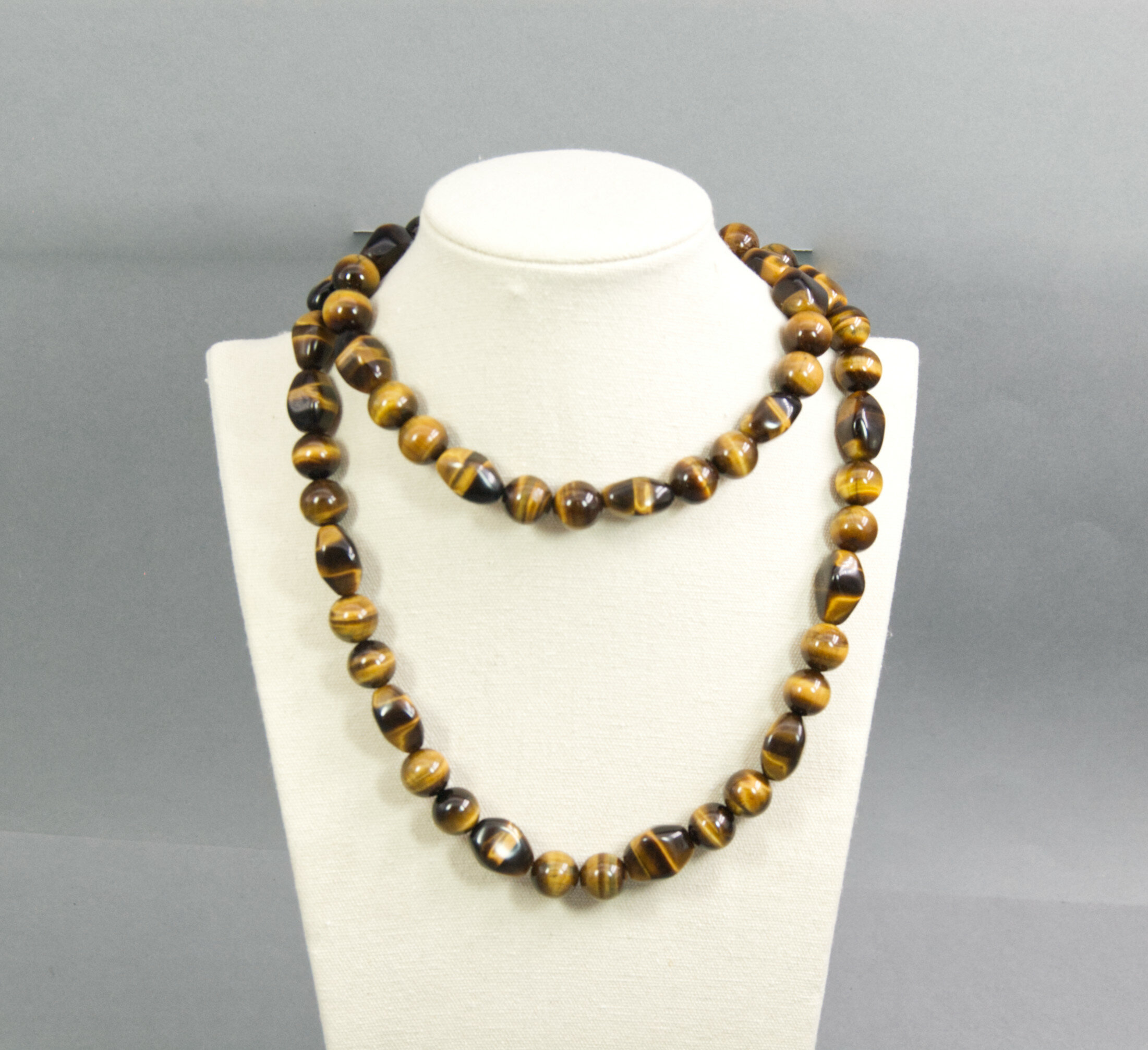
Tigers Eye long necklace 1970s
Price: £25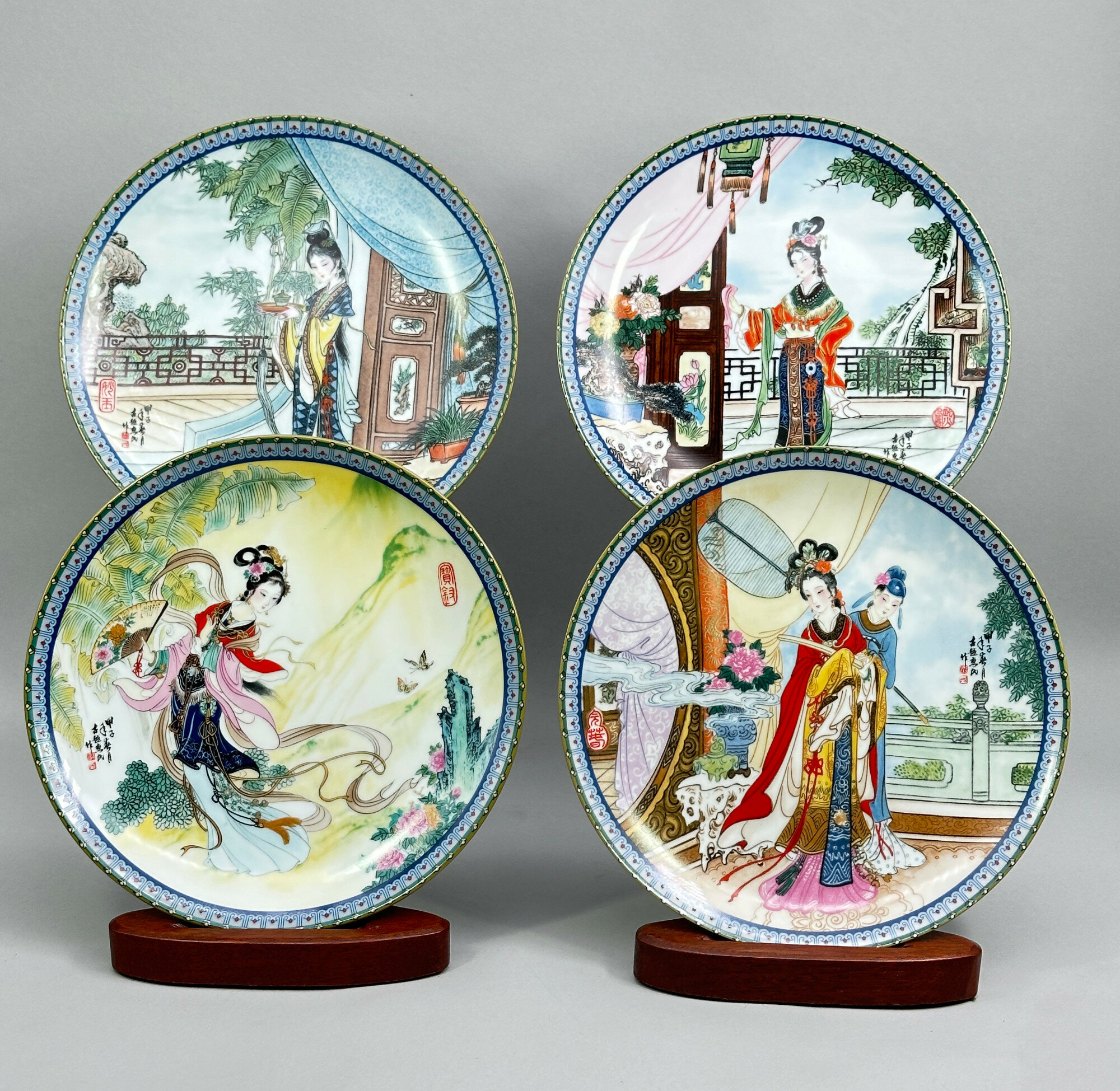
Set of Four Chinese Plates, Beauties of the Red Mansion, Jingdezhen, 1980s
Price: £75Please note that the stands are for display purposes only.
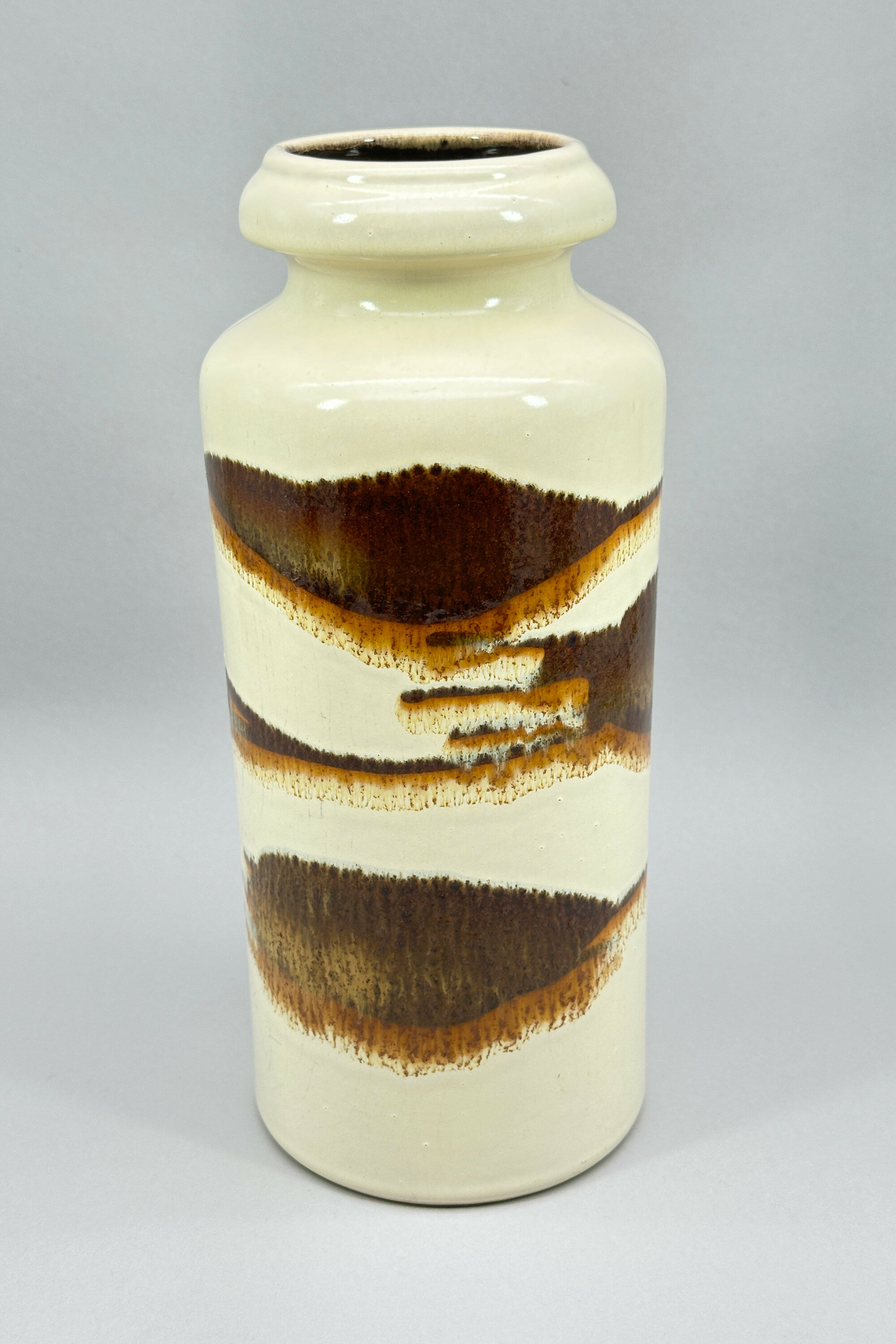
West German Vase with drip glaze decoration, Scheurich, 1960s
Price: £45Although not marked as such, this vase has all the hallmarks of the firm Scheurich Keramik which started production in 1954, rather later than most of its competitors, but soon became the largest producer of commercial art pottery in Germany. Their pieces rarely carried the factory name but usually the model number followed by the height in centimetres with ‘W-Germany’ below, as here. Model ‘517’ can be found in a variety of different glazes but the colourings here with the contrast between browns and cream are particularly successful. Dating is to the 1960s.
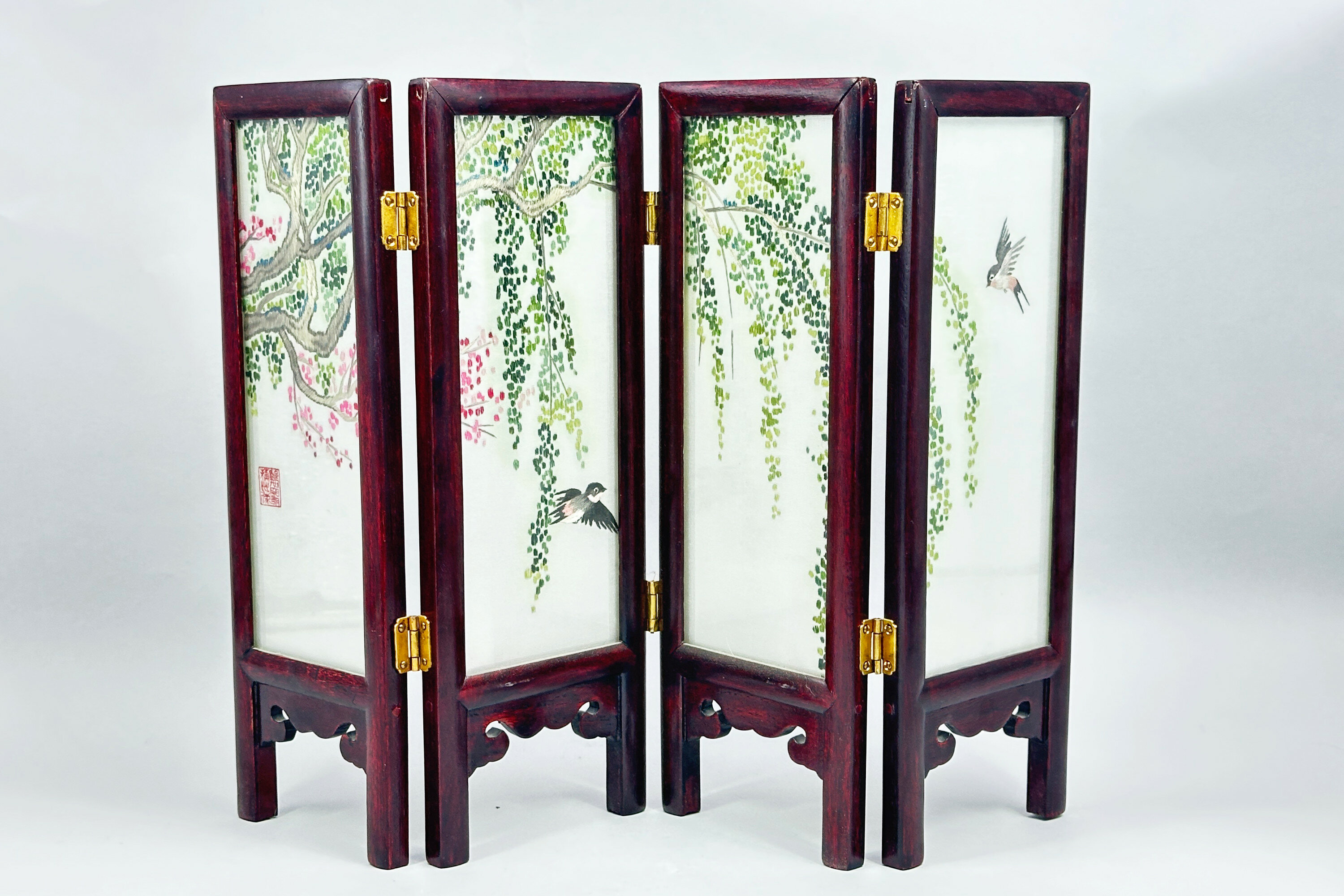
Chinese four panel Table Screen with embroidered silk panels, signed and boxed, C20th
Price: £110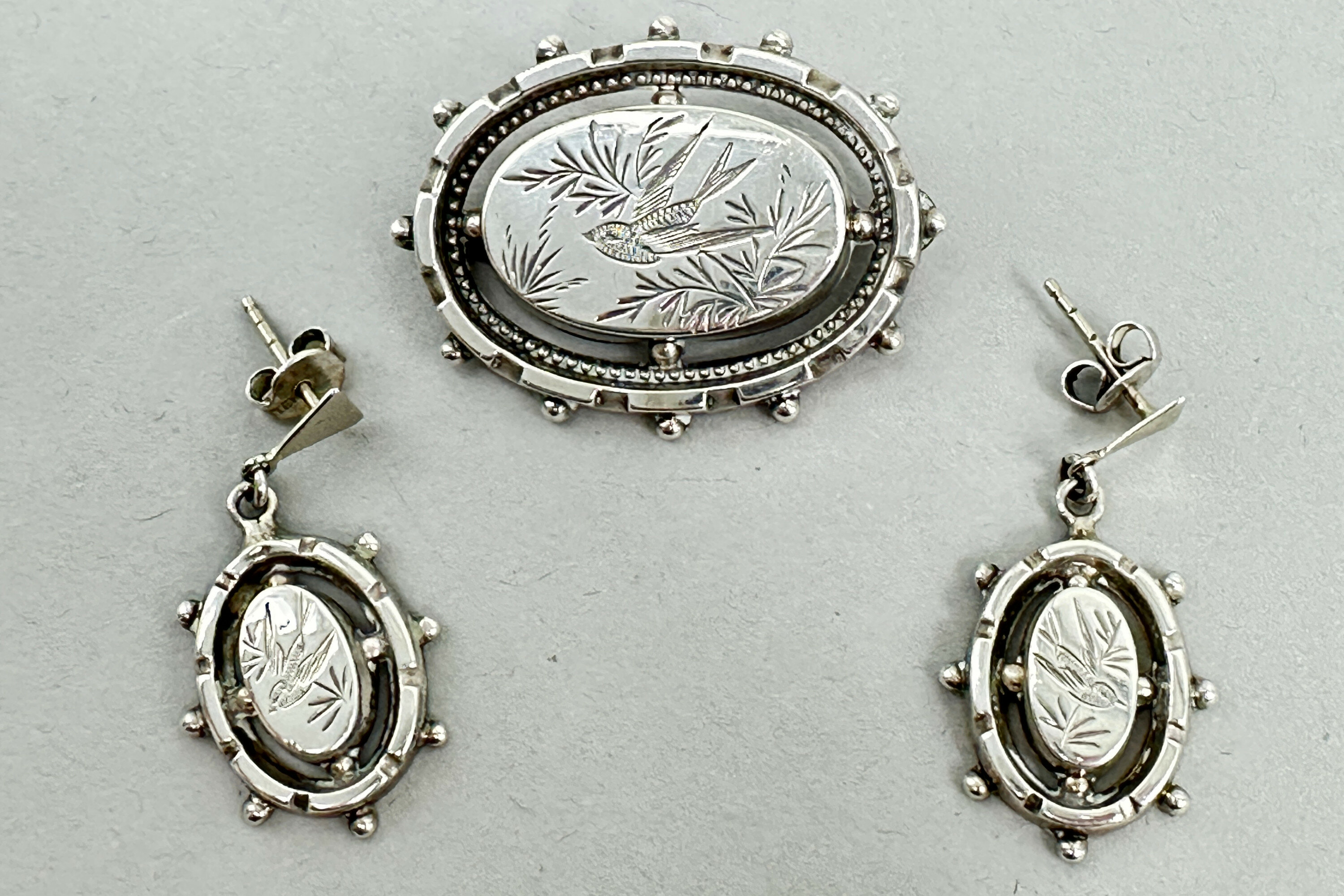
Aesthetic Movement silver brooch and earrings c1890
Price: £125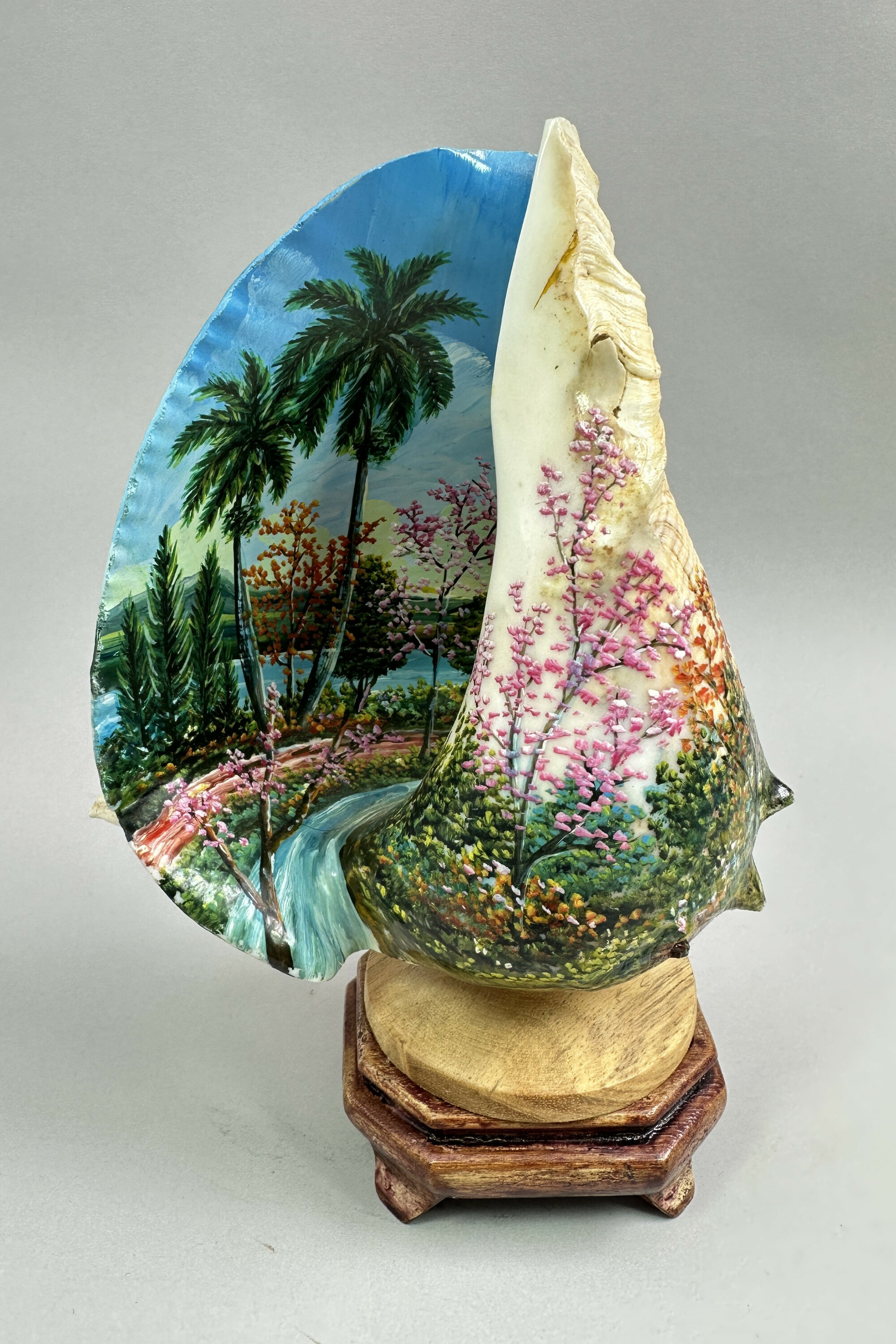
Kitsch Style Conch Shell with painted landscape decoration, C20th
Price: £45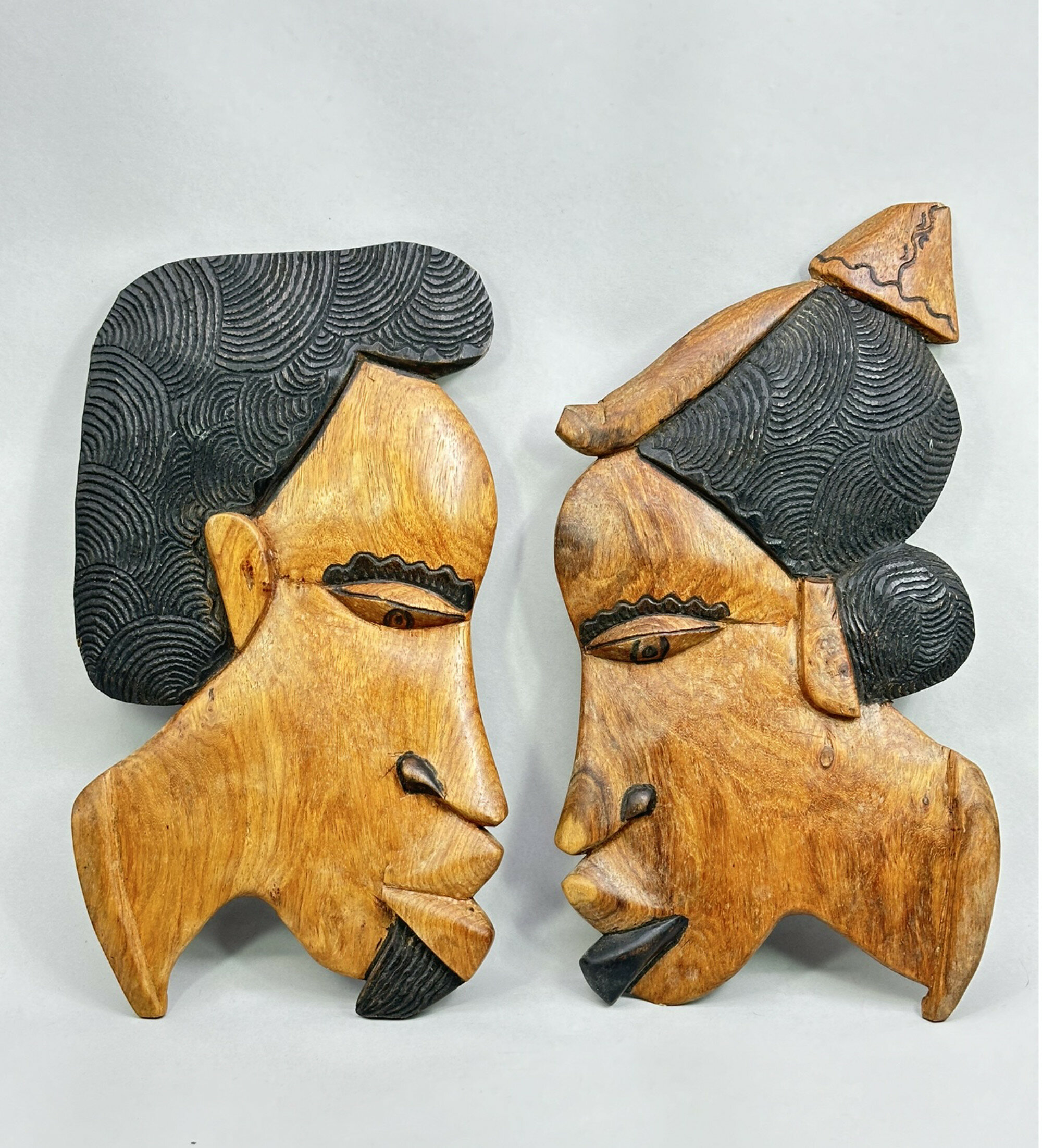
A Pair of African Carved Wood Figure Head Plaques, C20th
Price: £45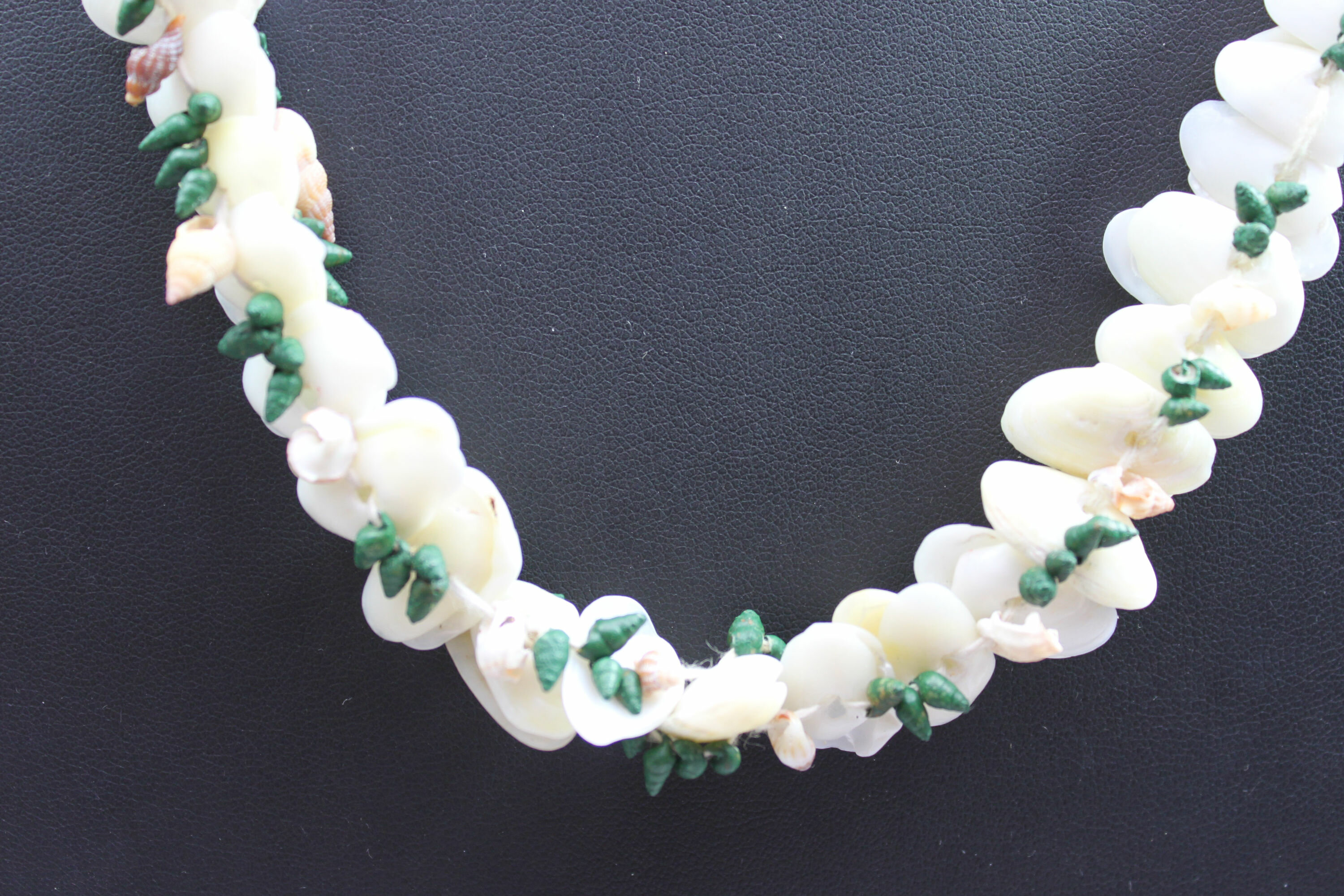
Fun vintage souvenir shell necklace 1960s
Price: £15PLEASE NOTE THAT THERE IS FREE UK SHIPPING ON THIS ITEM. For international buyers the shipping cost will be reduced by the UK shipping cost, so don't worry if you are outside the UK, you still receive this benefit!
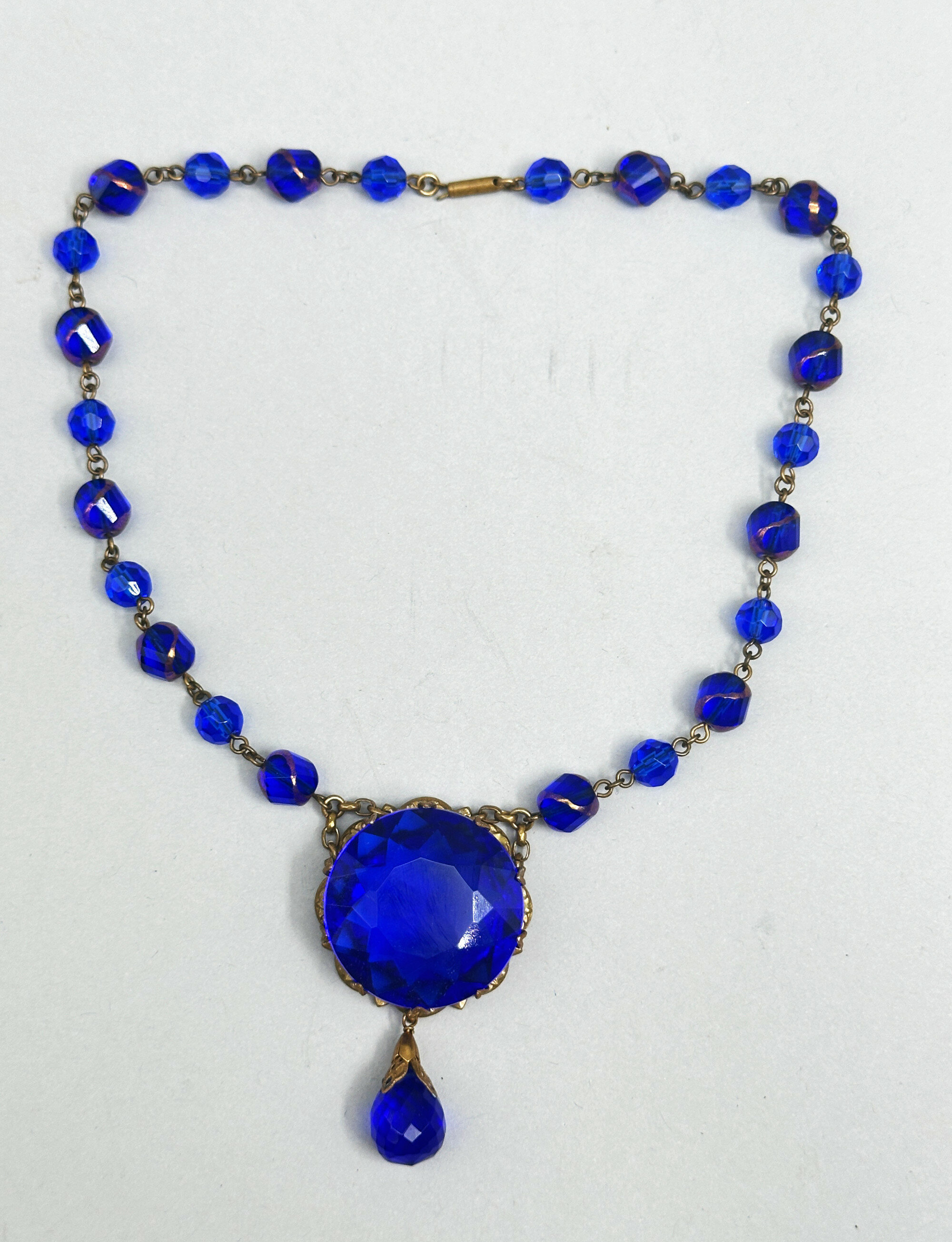
Art Deco necklace with blue paste stones 1930s
Price: £45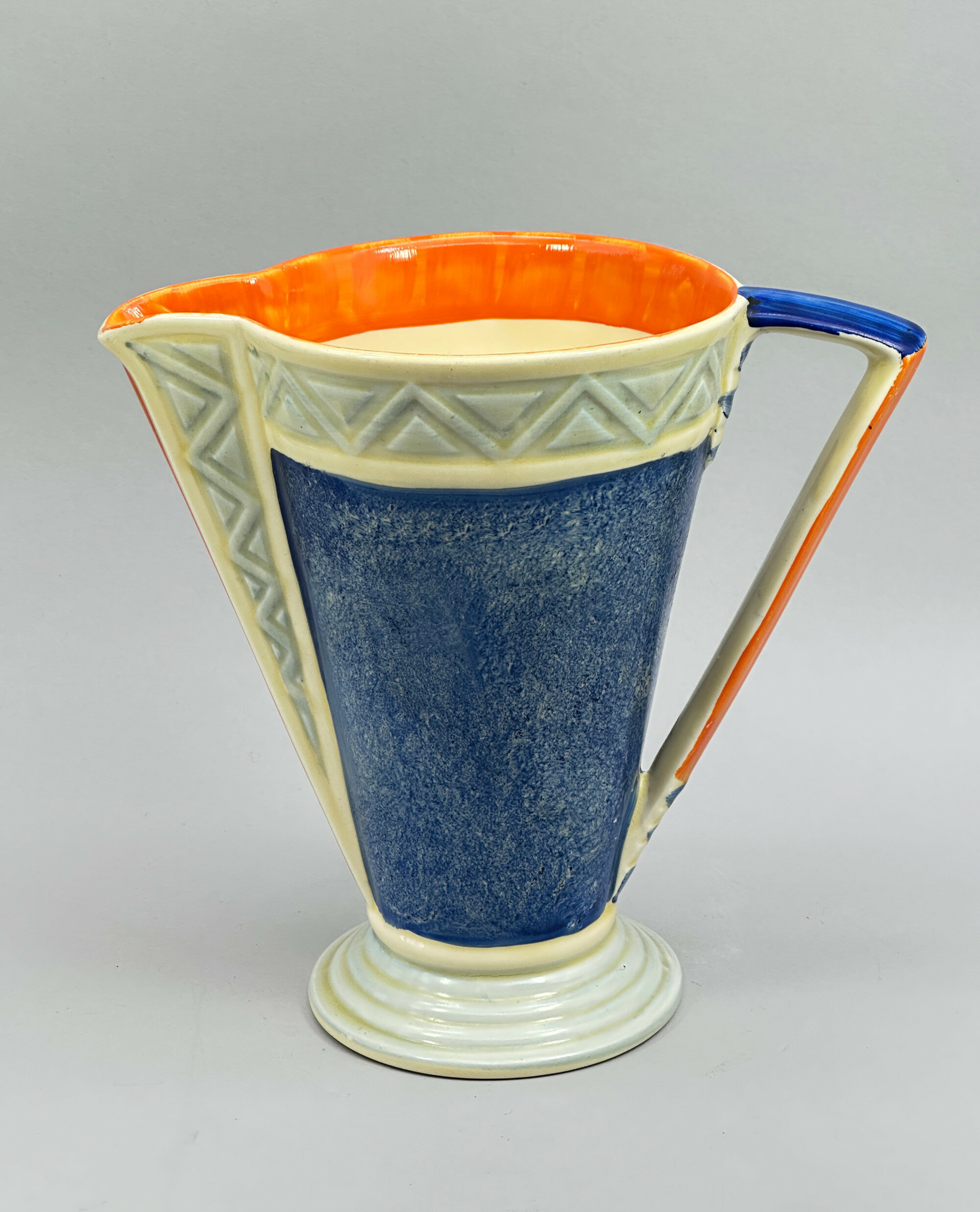
Myott Son & Co Art Deco style Jug, 1930s
Price: £75Myott Son & Co was one of famous the Staffordshire Potteries and traded for over 90 years. Founded in 1898, it began production in Stoke moving to Cobridge four years later. Its output was continuous but in 1949 the firm suffered a disastrous fire which reportedly destroyed the firm's records and pattern books and probably for this reason it relocated to Hanley. In 1969 it was bought by the American firm Interpace, but the Myott name was retained until 1976 when the company merged with Alfred Meakin Ltd, who were based in Tunstall, to form Myott-Meakin Ltd.
Myott now are best known for their Art Deco inspired designs from the 1930s. Following the success of their competitors, most notably the designs of Clarice Cliff, Myott established their own popular following and produced pieces which could rival the output of their celebrated competitors. This jug, with its clean lines and bold colours is an excellent example and like others of the same form bears the pattern umber ‘8498’. Some of their glazes were easily subject to wear and blue was less commonly used so both the condition and the colour range of this jug make it a highly desirable collector’s item.

Striking modernist necklace with large butterscotch amber pendant c1970
Price: £50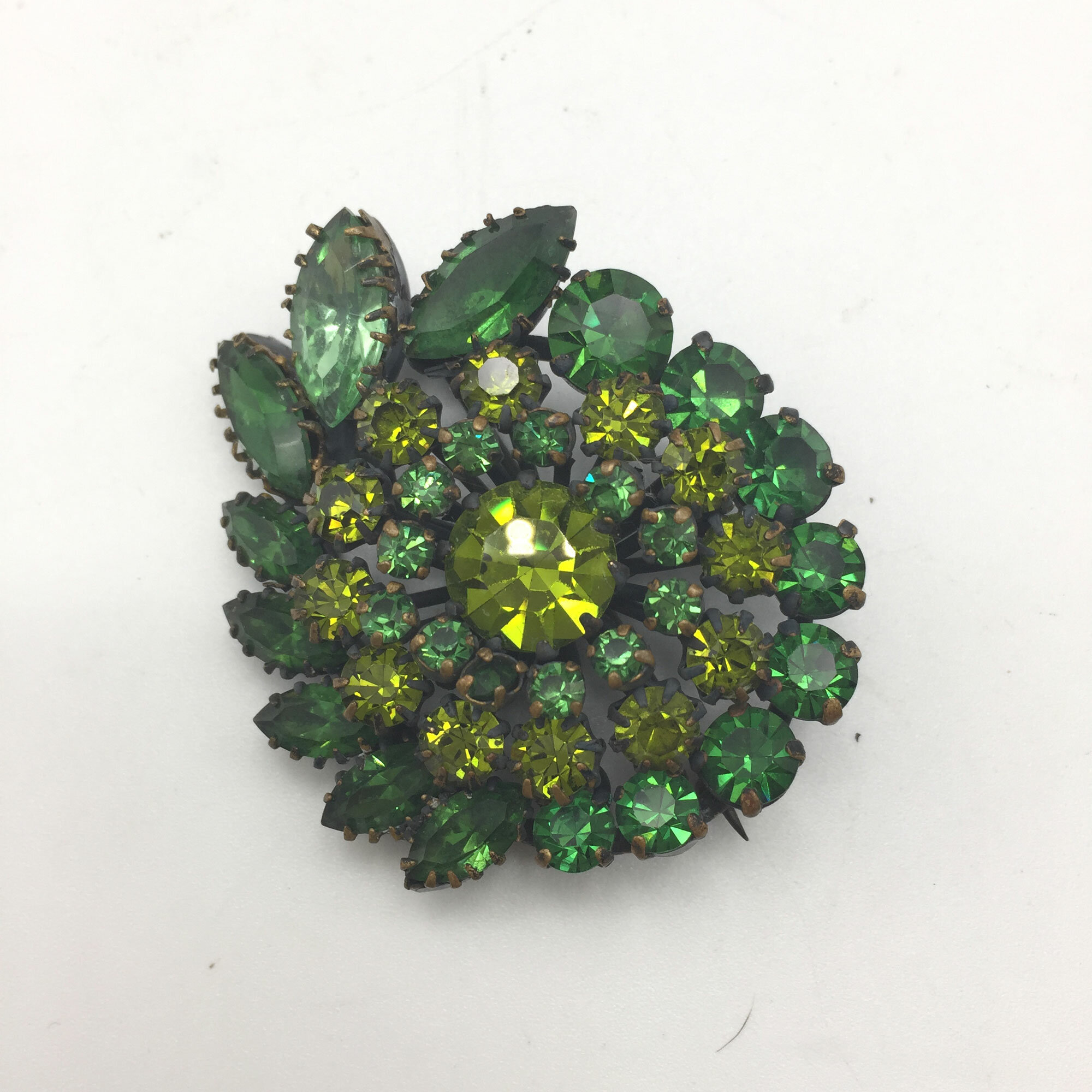
Striking green glass brooch 1950s
Price: £10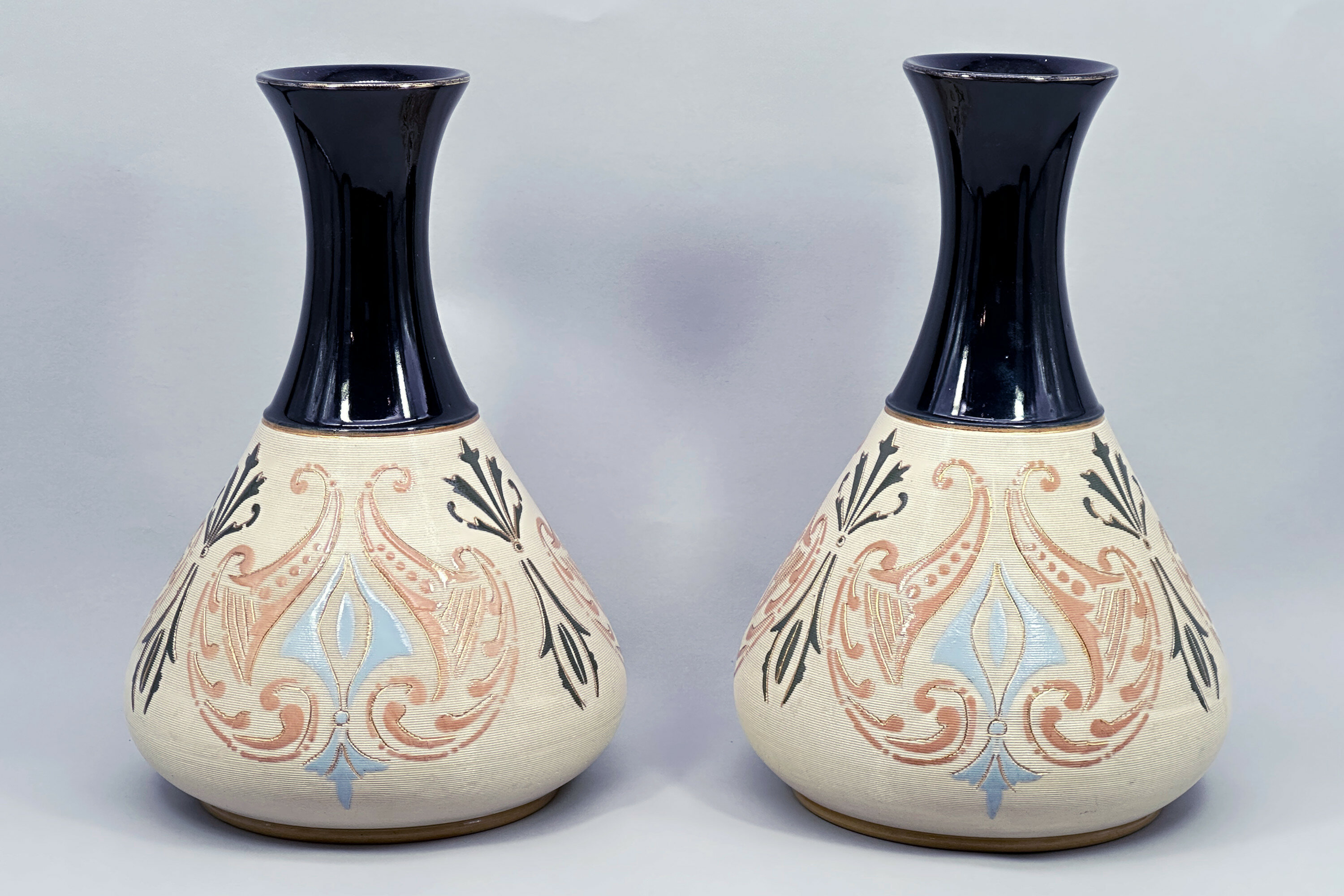
Pair of Lovatt and Lovatt Earthenware Vases, early C20th
Price: £95The Langley Mill Pottery was located in Langley Mill, Derbyshire on the Derbyshire – Nottinghamshire border. From its establishment in 1865 to its final closure in 1982, it went through five distinct periods of ownership, producing a wide range of stoneware ranging from utilitarian items and to high quality art pottery. This pair of vases dates from the third company that traded there, Lovatt and Lovatt. The Lovatt family had entered into partnership with the owner of the founding business at Langley Mill, James Calvert. From 1895 the business was in sole control of the Lovatt family and traded as ‘Lovatt and Lovatt’ until 1935. The early years of the twentieth century proved to be something of a zenith for them and a wide range of art pottery pieces were made which enjoyed great popularity. Production techniques were streamlined without a reduction in quality and in 1905, leadless glazes were introduced. These are proudly announced on the base of this pair of vases which are a fine example of the Lovatt and Lovatt style and probably date to 1913, indicated by the impressed numbers for that year.

West German Bay Keramik Pitcher with stylised floral designs, late C20th
Price: £55Founded by Eduard Bay in the 1930s and based in Ransbach Baumbach in the heart of the main West German pottery producing region, Bay Keramik grew to be one of the most prolific producers of ceramics in the ‘West German’ style and continued production into the 1990s. This piece retains its original paper label and the format of this allows dating to the 1970s/1980s. The jug has almost a slightly rustic feel and recalls much earlier German ceramic items. The numbers on the base indicate the form number but it has not been possible to identify this.
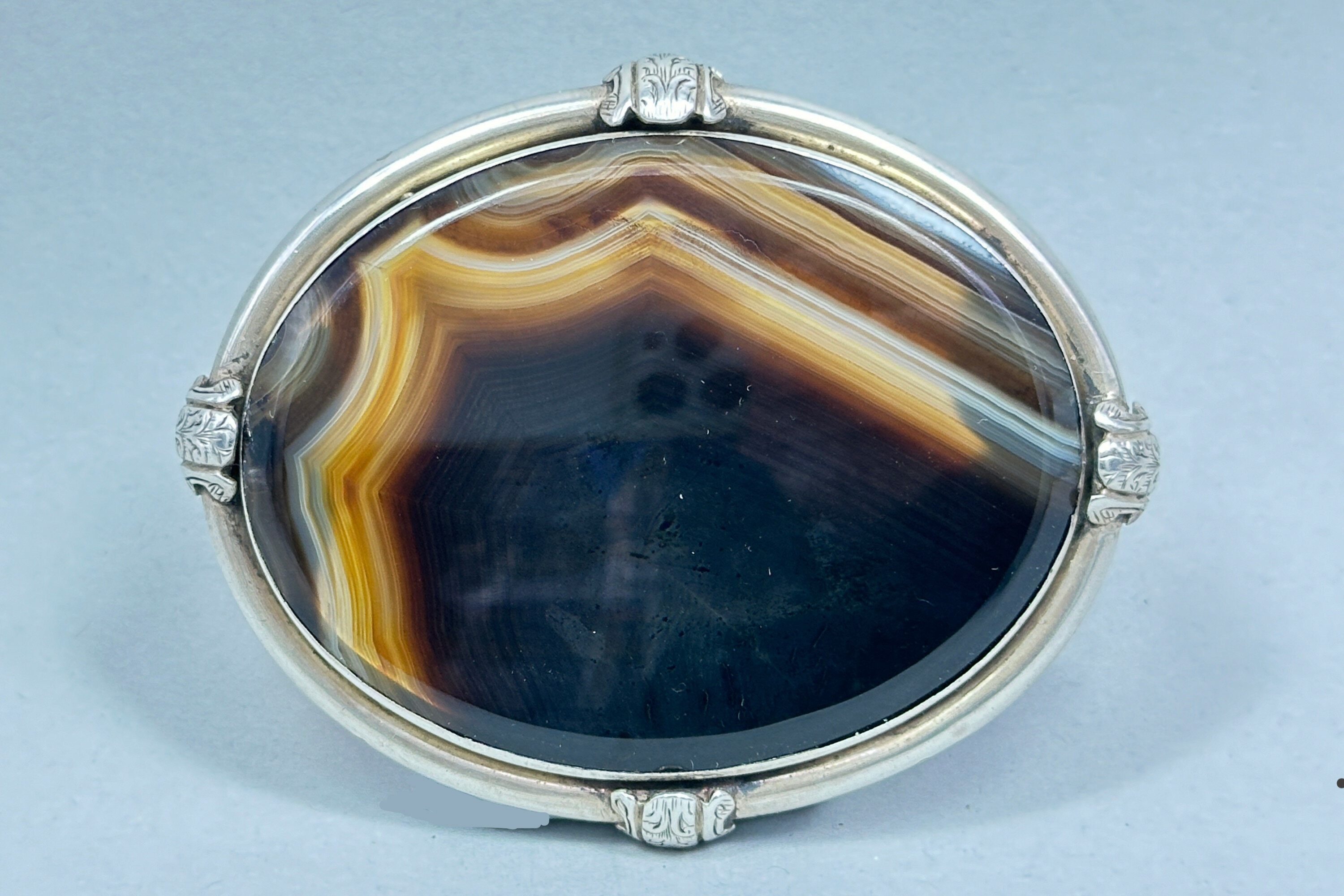
Victorian Silver Mounted Banded Agate Brooch, late C19th
Price: £100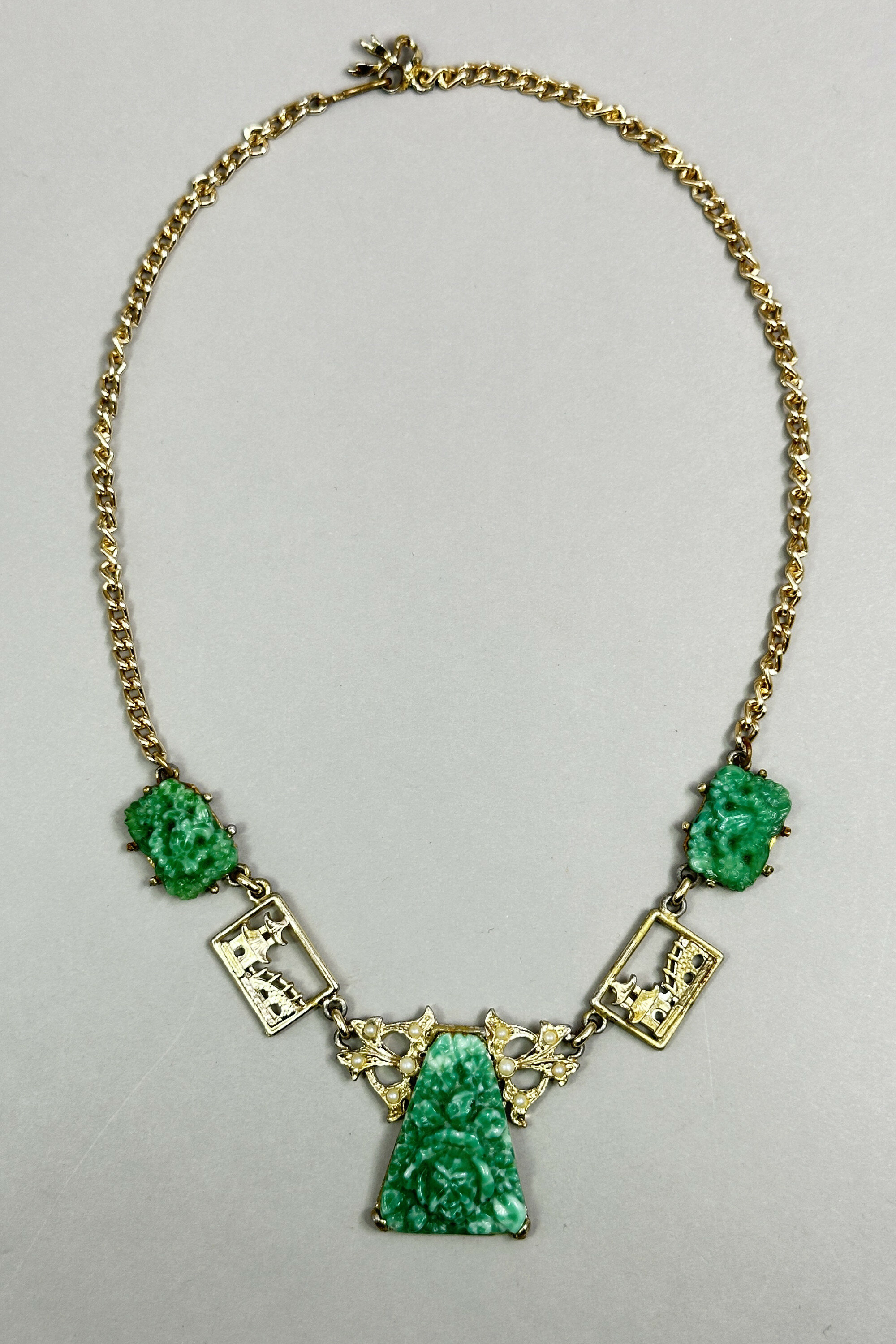
Chinoiserie necklace with peking glass plaques c1960
Price: £45
Exceptional strand of Scottish Moss agate beads
Price: £45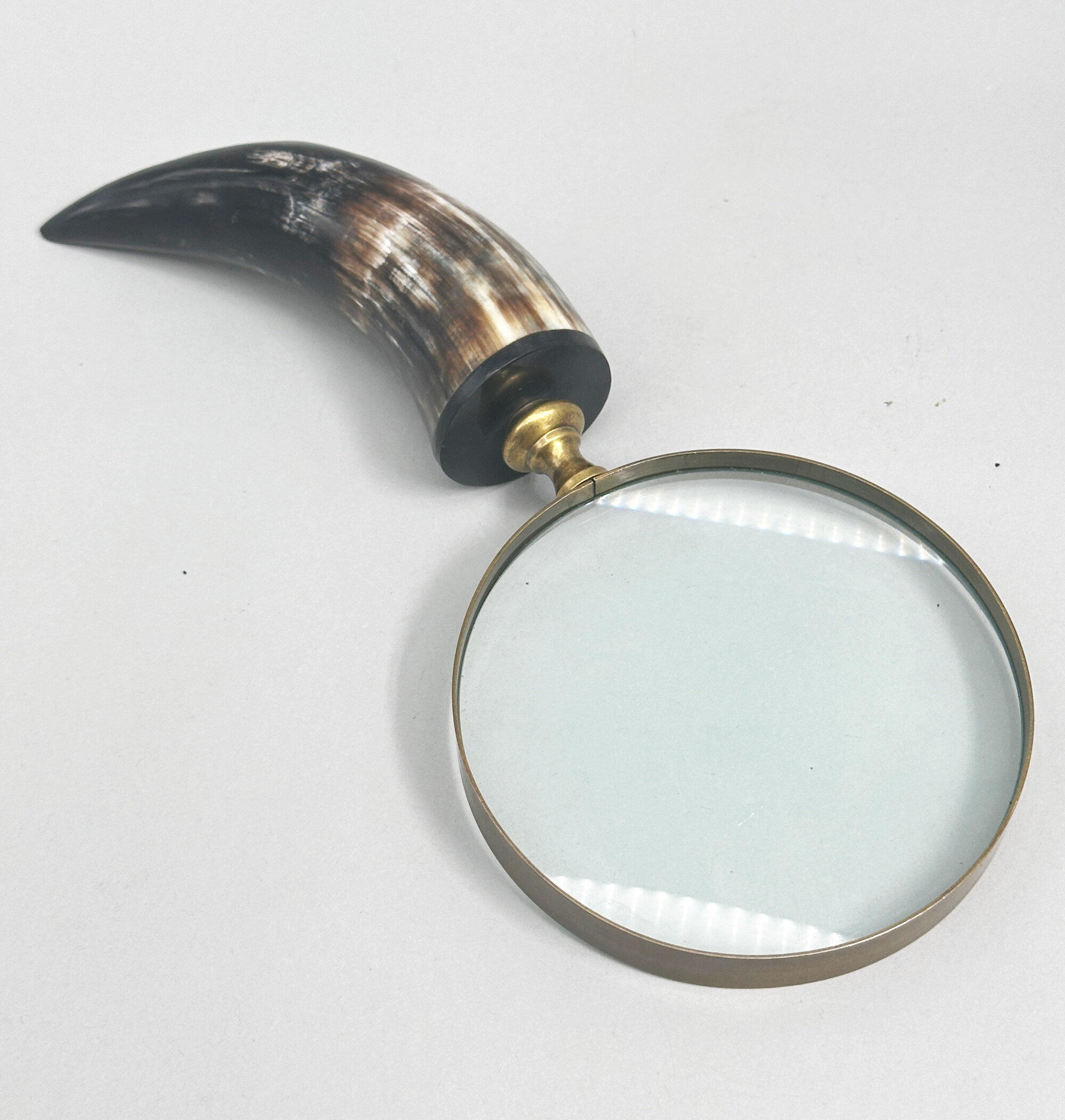
Edwardian large text magnifying glass with horn handle, early C20th
Price: £25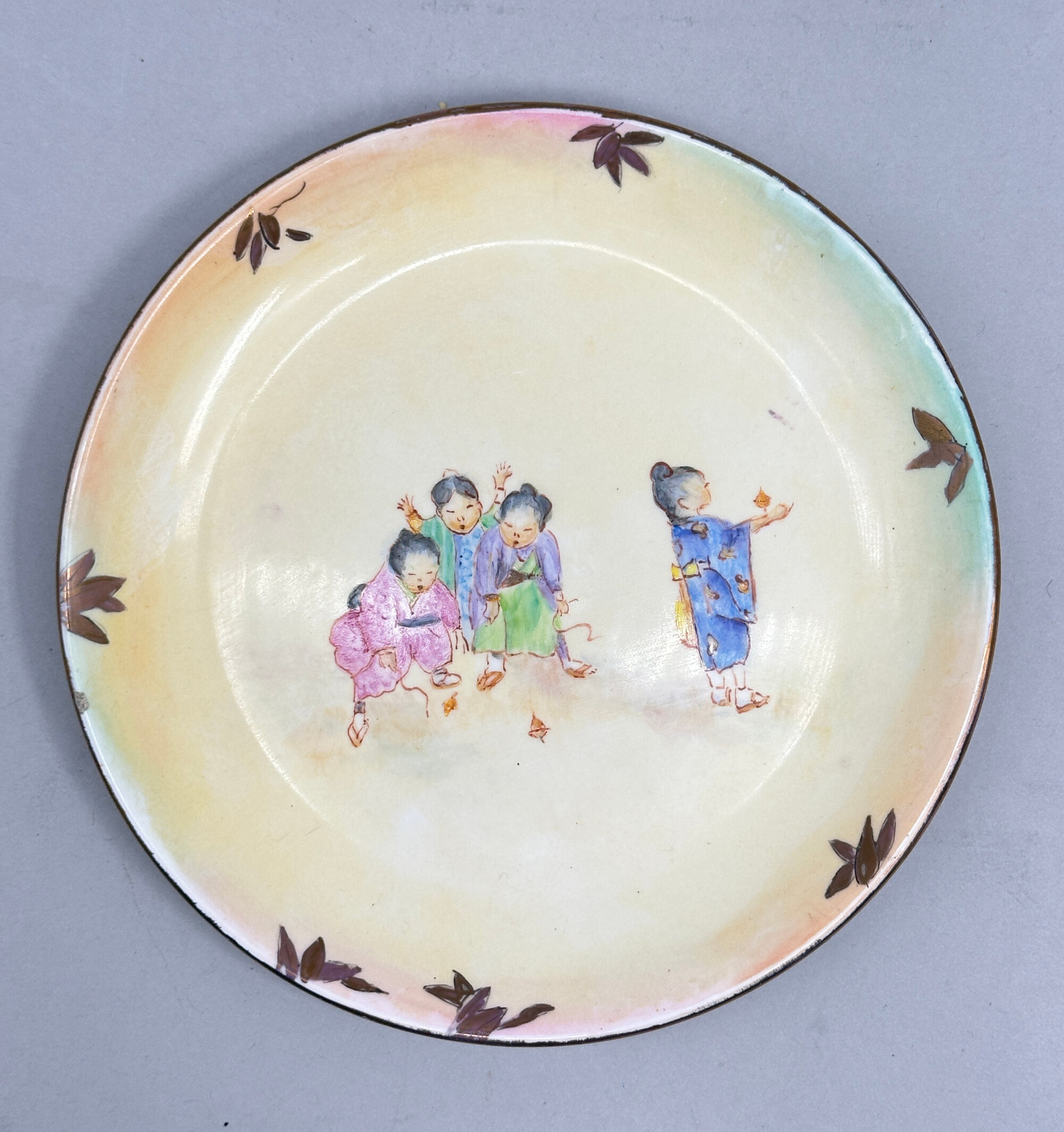
Oriental style ceramic plate, signed Alice Smith, possibly American mid C20th
Price: £10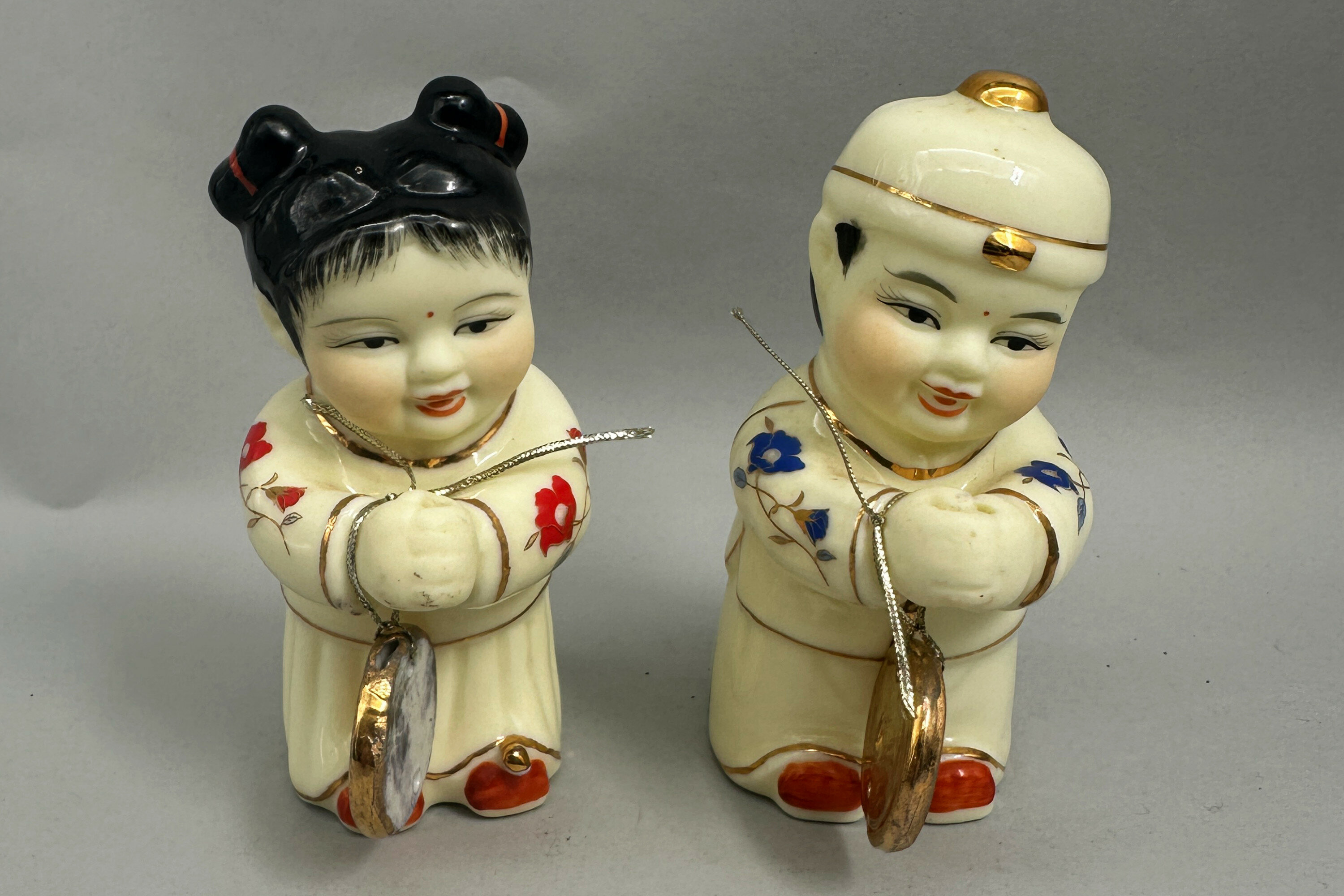
Decorative pair of Chinese ceramic figures of children, Yunu and Jintong , late C20th
Price: £45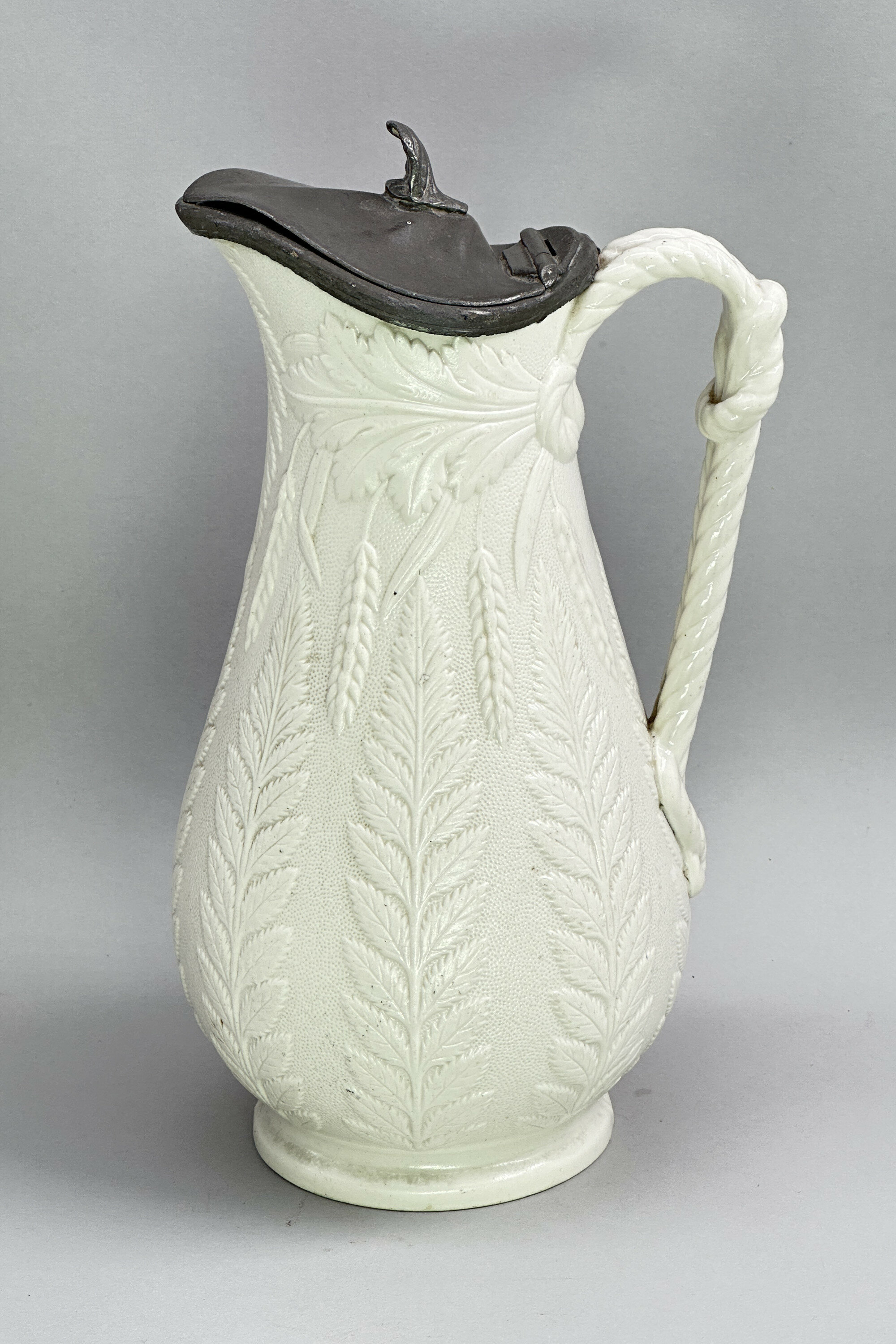
Antique English Staffordshire pitcher, William Brownfield and Sons, circa 1860.
Price: £55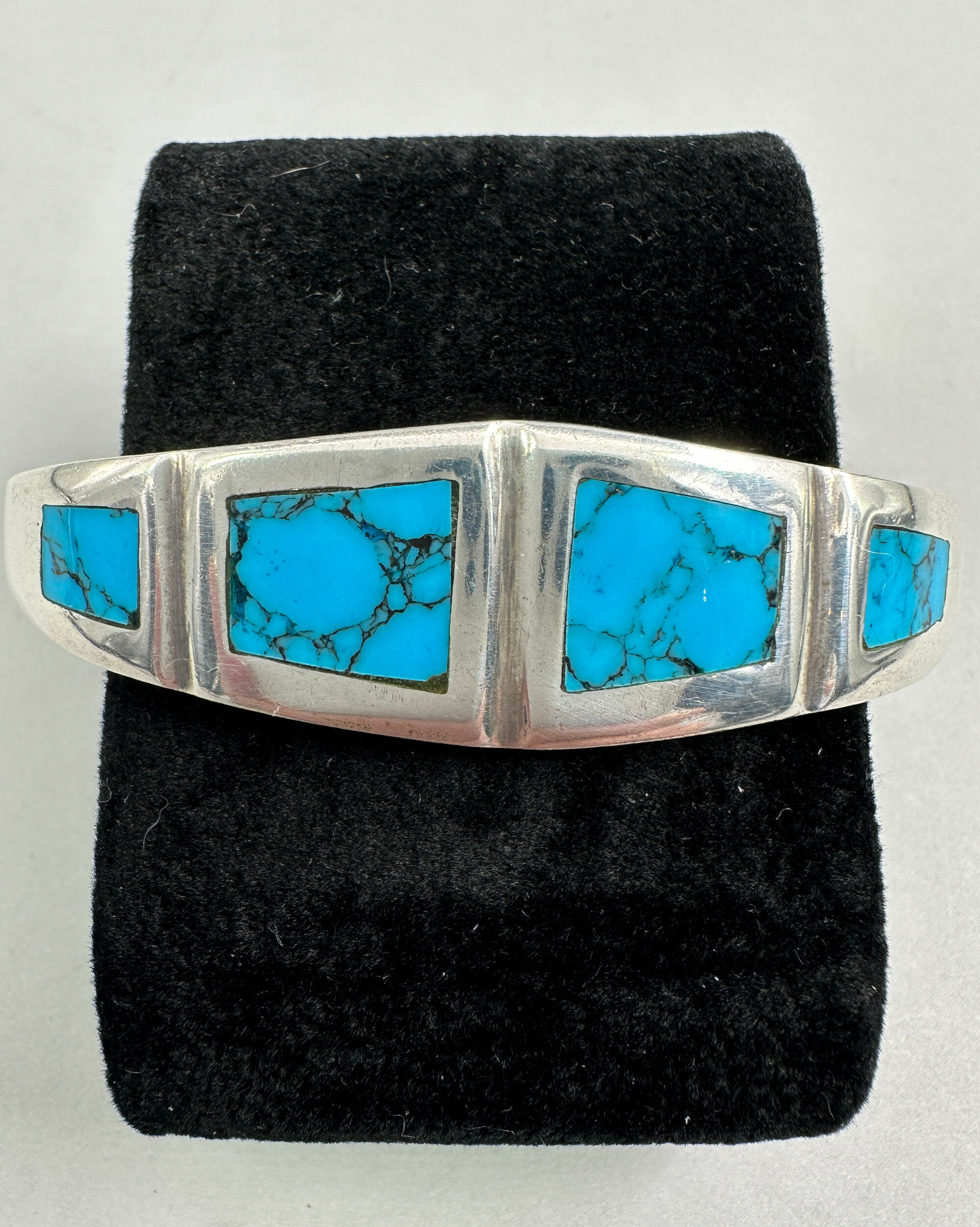
Mexican silver bracelet set with turquoise plaques, c1990
Price: £75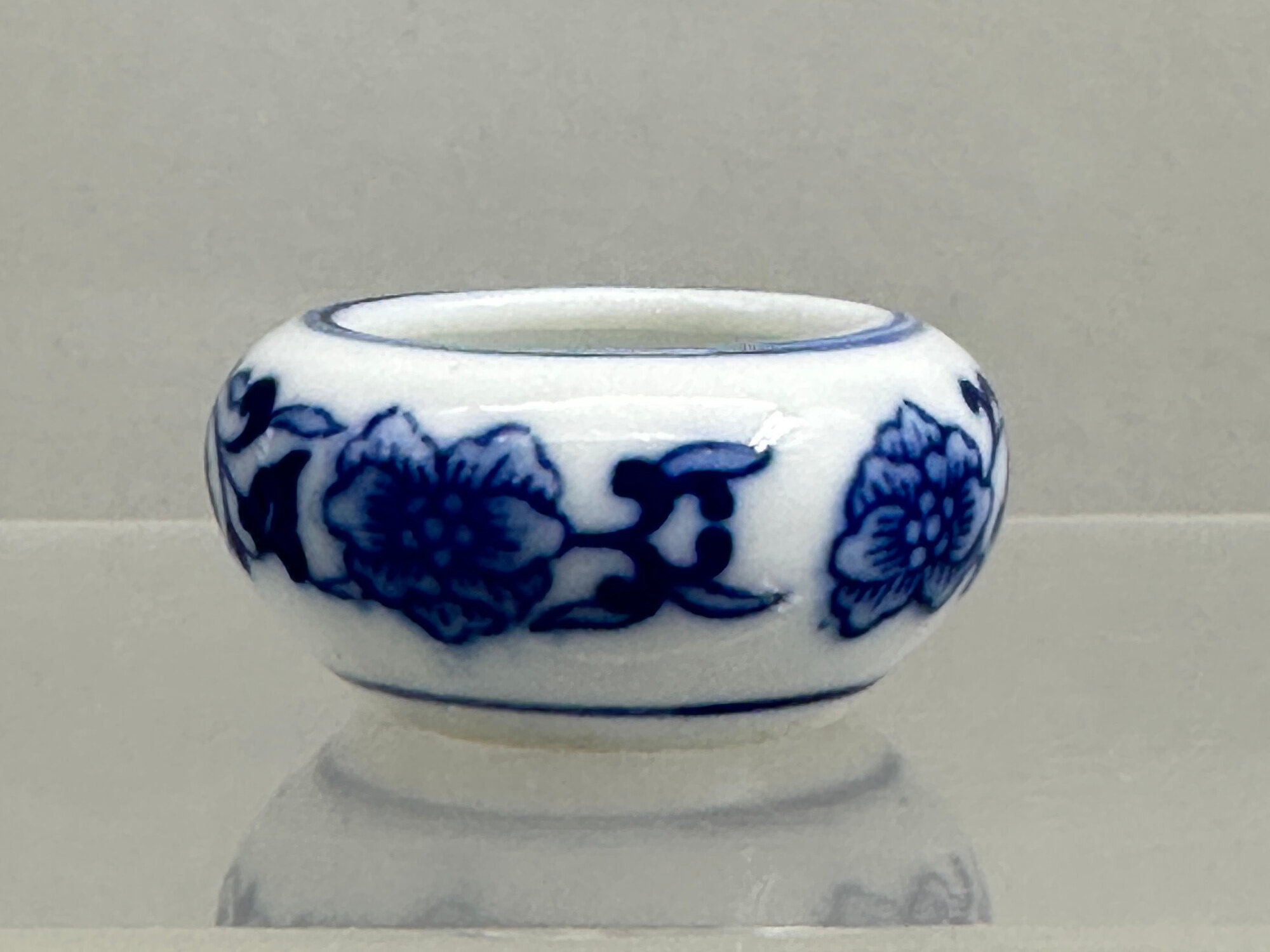
Small Chinese Blue and White Brushwasher, C20th
Price: £25
Long Art Nouveau necklace with multiple drops c1930
Price: £75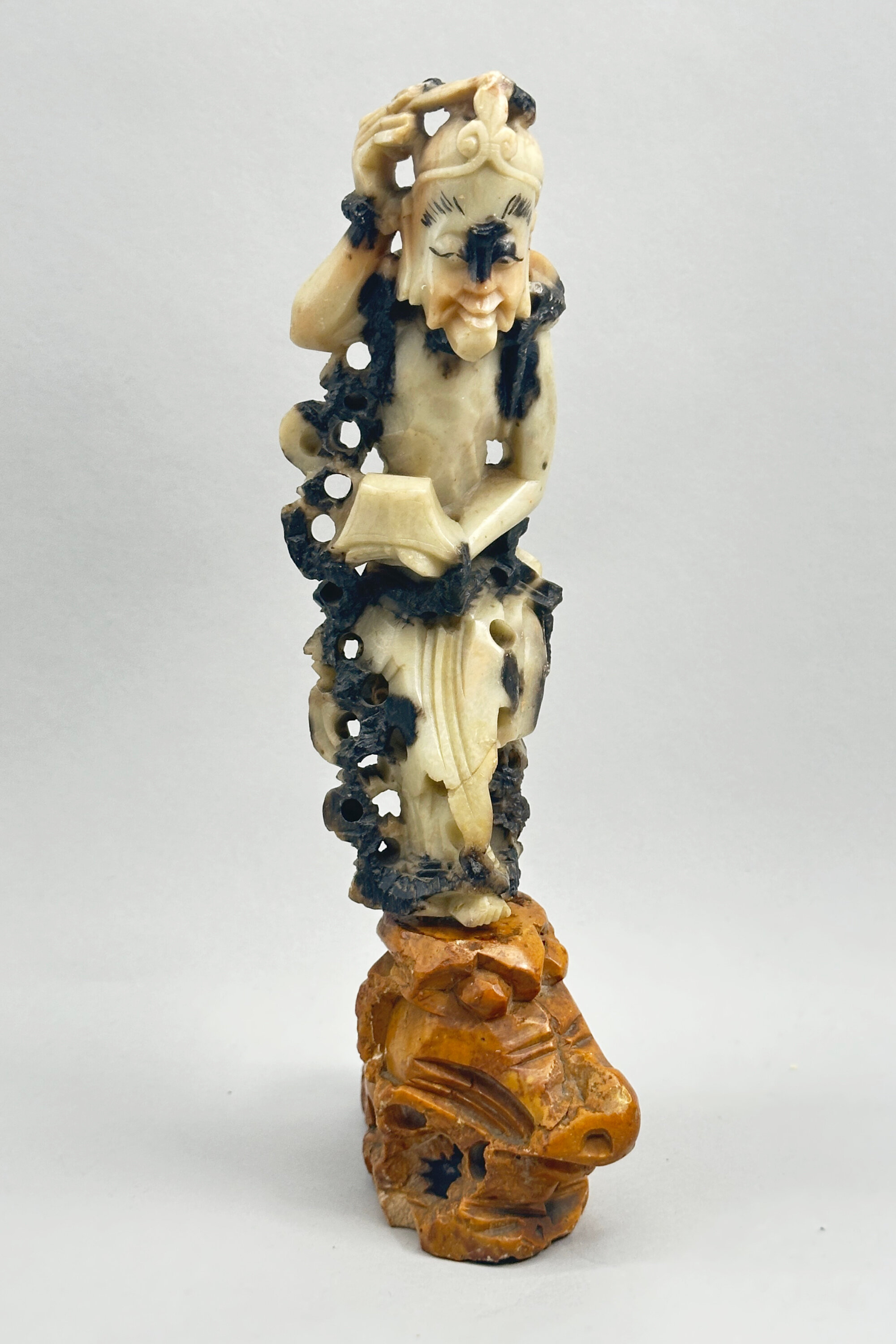
Chinese carving of a Beggar, possibly Shoushan stone, Soapstone stand, C20th
Price: £55
Art Deco rock crystal bead necklace
Price: £25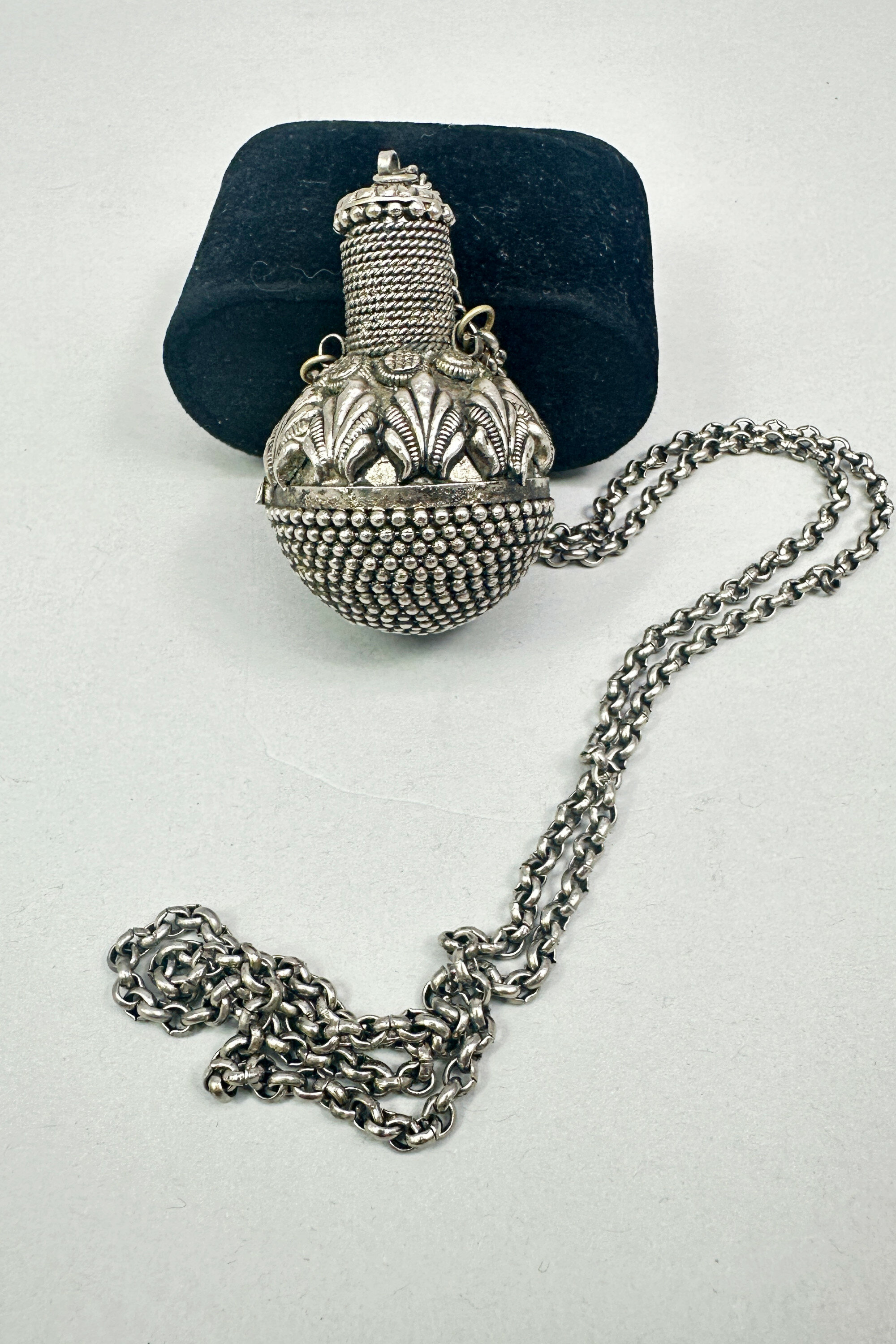
Silver metal Perfume Bottle Necklace, probably Indian early C20th
Price: £55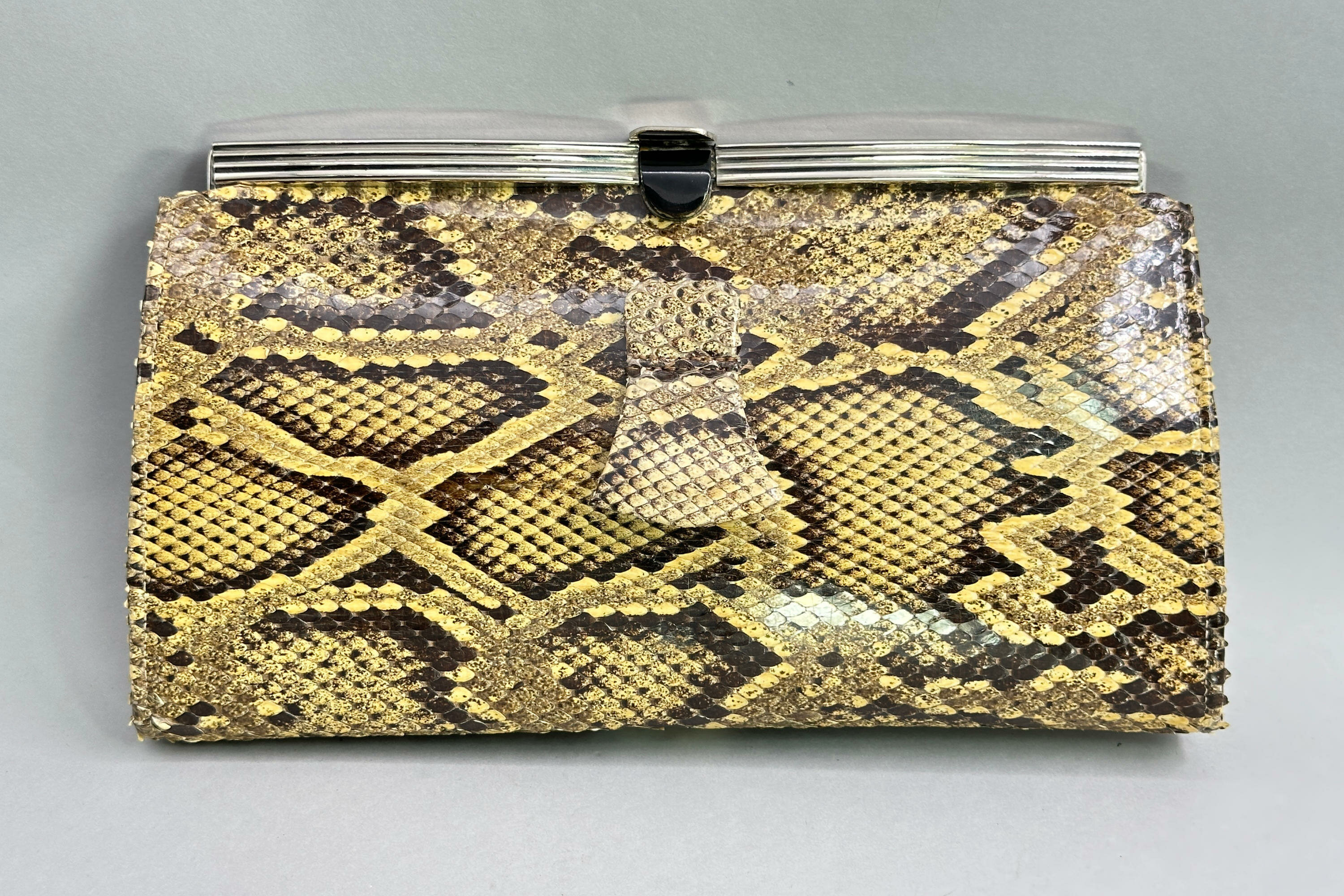
Art Deco Python Clutch
Price: £85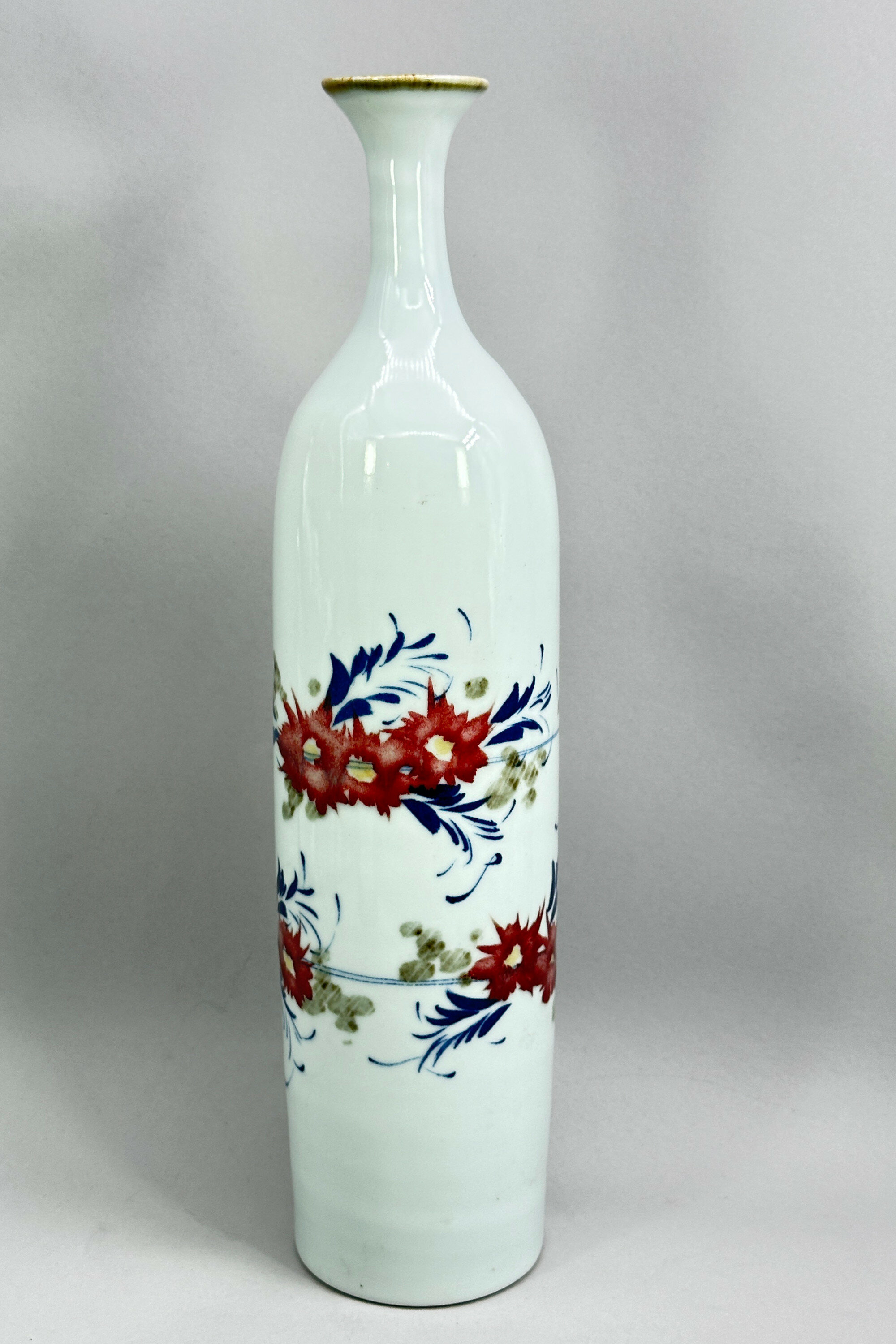
Japanese Studio Pottery Vase, signed, C20th
Price: £75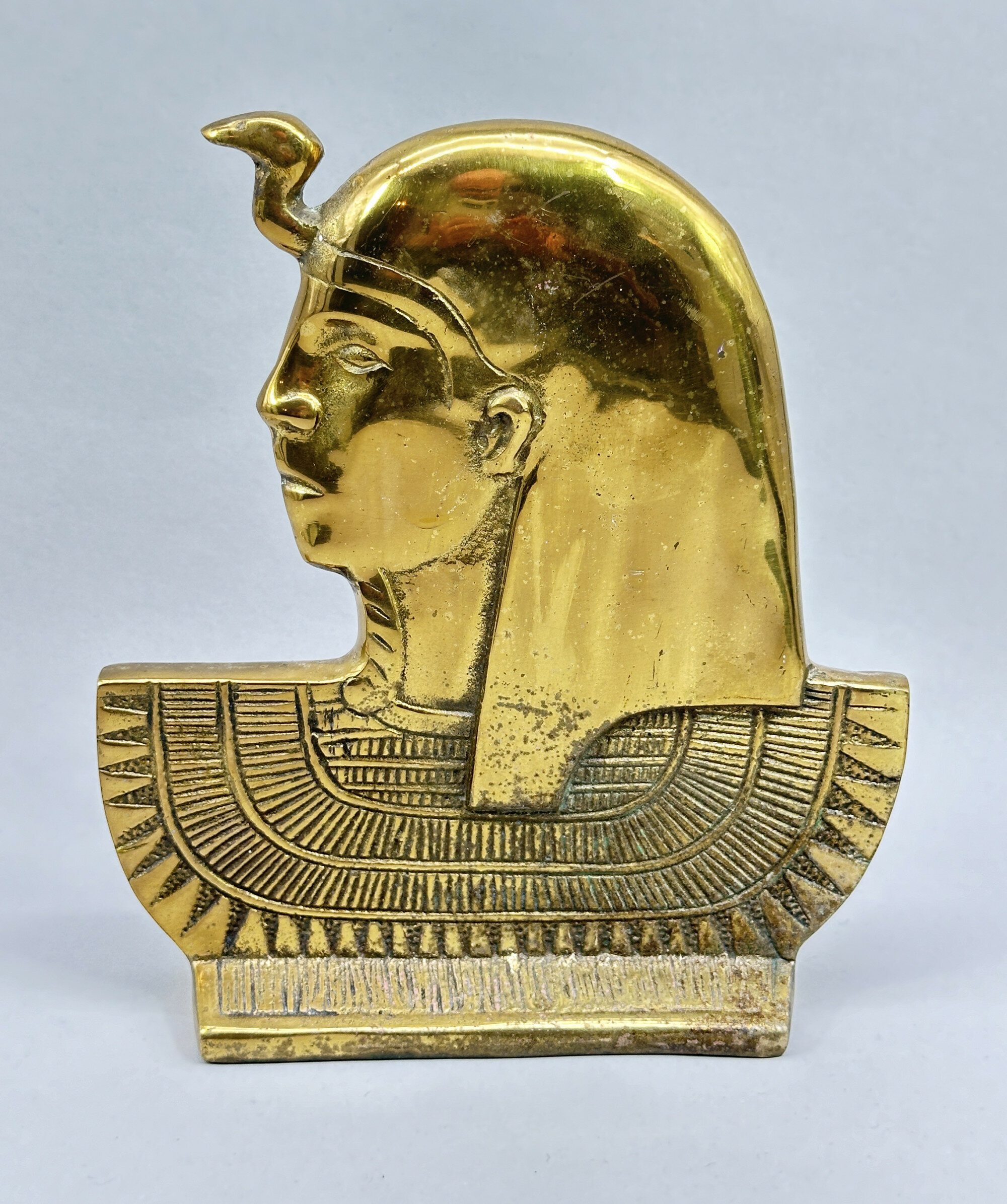
Large brass portrait bust of Ramses II
Price: £45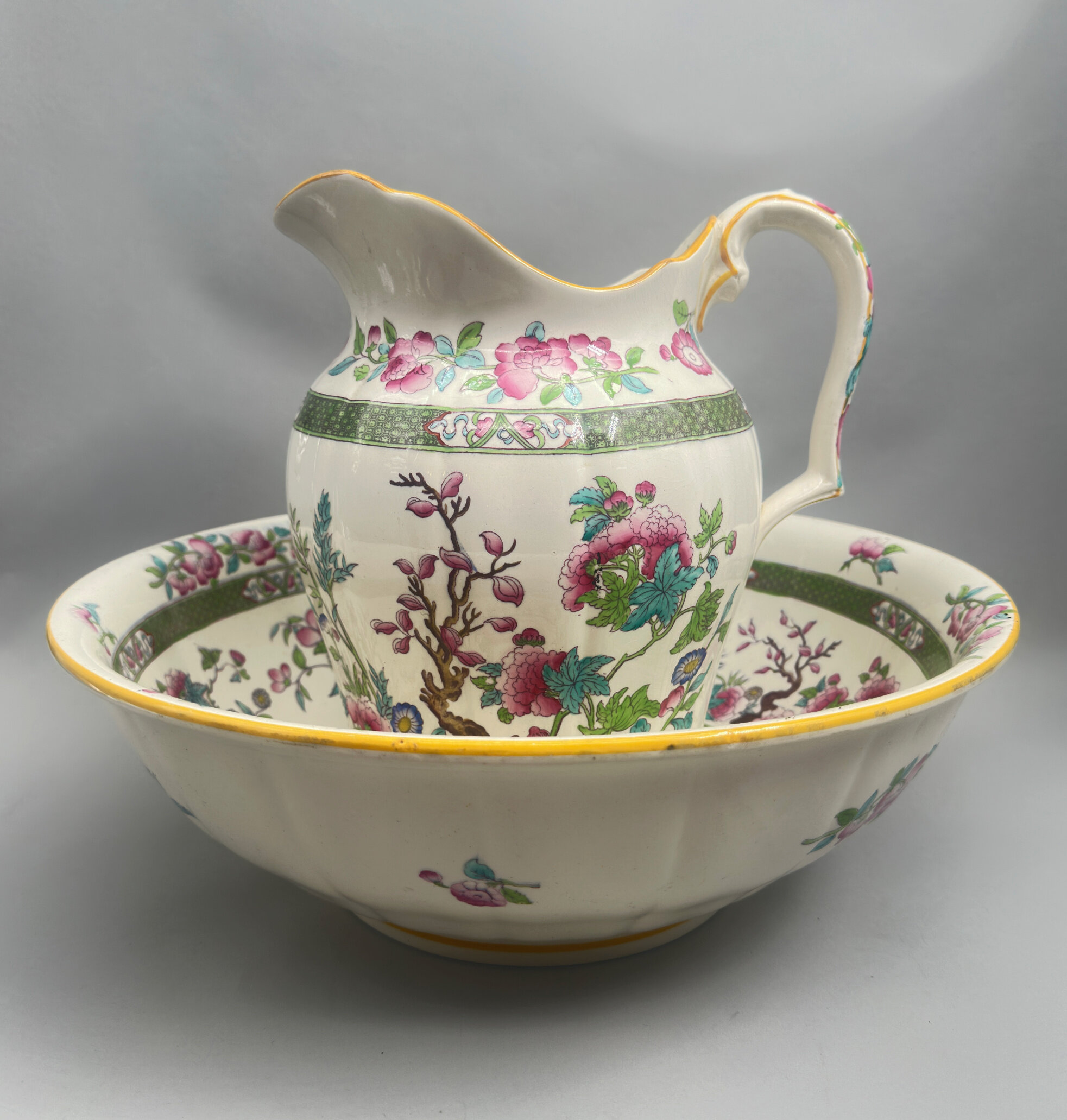
Minton Indian Tree Pattern Pitcher and Basin circa 1900
Price: £350………………………………………………………………………………………………….................................................................................
The celebrated firm of Mintons was founded by in 1793 by Thomas Minton (1765–1836) at Stoke-upon-Trent, Staffordshire, England as ‘Thomas Minton and Sons’, producing earthenware. The initial ranges were standard tablewares in blue transfer-printed or painted earthenware, including the ever-popular Willow pattern. By the mid nineteenth century and in partnership with Michael Hollins, Mintons began the production of decorative finishes for the interior and in particular floor tiles which enjoyed enormous demand and were the subject of numerous prestigious commissions including a contract for the flooring of the American Capitol. This was followed by the introduction of the plain white glazed ‘Parian’ wares and then the Italian inspired ‘majolica’ pieces with their richly coloured lead glazes. Mintons continued to follow popular trends, working with Christopher Dresser, recruiting Louis Solon from Sevres who had developed pâte-sur-pâte wares and finally contributing to Art Nouveau ceramics with a speciality in secessionist wares.
But the manufacture of tableware continued alongside all these other developments and Mintons adopted and adapted the popular ‘Indian Tree’ pattern which was first produced by Coalport in 1801. This design fused elements from Indian textiles and Chinese ceramics into an amalgam with immediate appeal. The pattern includes the crooked branch of a tree and a partial landscape including exotic flowers and leaves with a palette of colours emphasising green, blue, pink, and orange, resembling quite closely the Chinese export wares decorated in ‘Famille Rose’ enamels which had been exported to Europe in great quantities in the eighteenth century. Many of Coalport’s rivals, including Spode, Wedgwood and Royal Worcester produced their own versions of the design, but Mintons’ interpretation was held to be one of the most successful.
It was used by Mintons to decorate a variety of shapes, mainly dinner and tea wares, but the toilet pitcher and matching basin are seldom found in this pattern. Both the forms are extremely elegant, the pitcher with light fluting, a scalloped rim and a complementary handle, while the basin, also lightly fluted, employs simple lines with a turnover rim which follow the shape of a Chinese original. All the standard elements of the pattern can be seen, in particular the twisted tree, and the diaper work borders again reflect Chinese originals.
Both pieces are marked with the pattern number ‘T 216’ and a Minton stamp, the form of which allows fairly accurate dating. The globe topped by a crown with the banner ‘Mintons’ was used from 1873-1912 but ‘England’ was only added after 1891, giving a circa date in the late nineteenth or early twentieth century, probably around 1900. The original toilet set, which would have included the pitcher and basin along with, probably, a chamber pot, a soap dish, candlesticks and other accessories, was clearly a ‘deluxe’ item at the time and its quality is still apparent today when it can be enjoyed simply for its decorative appeal and as a reminder of a past era of grandeur.
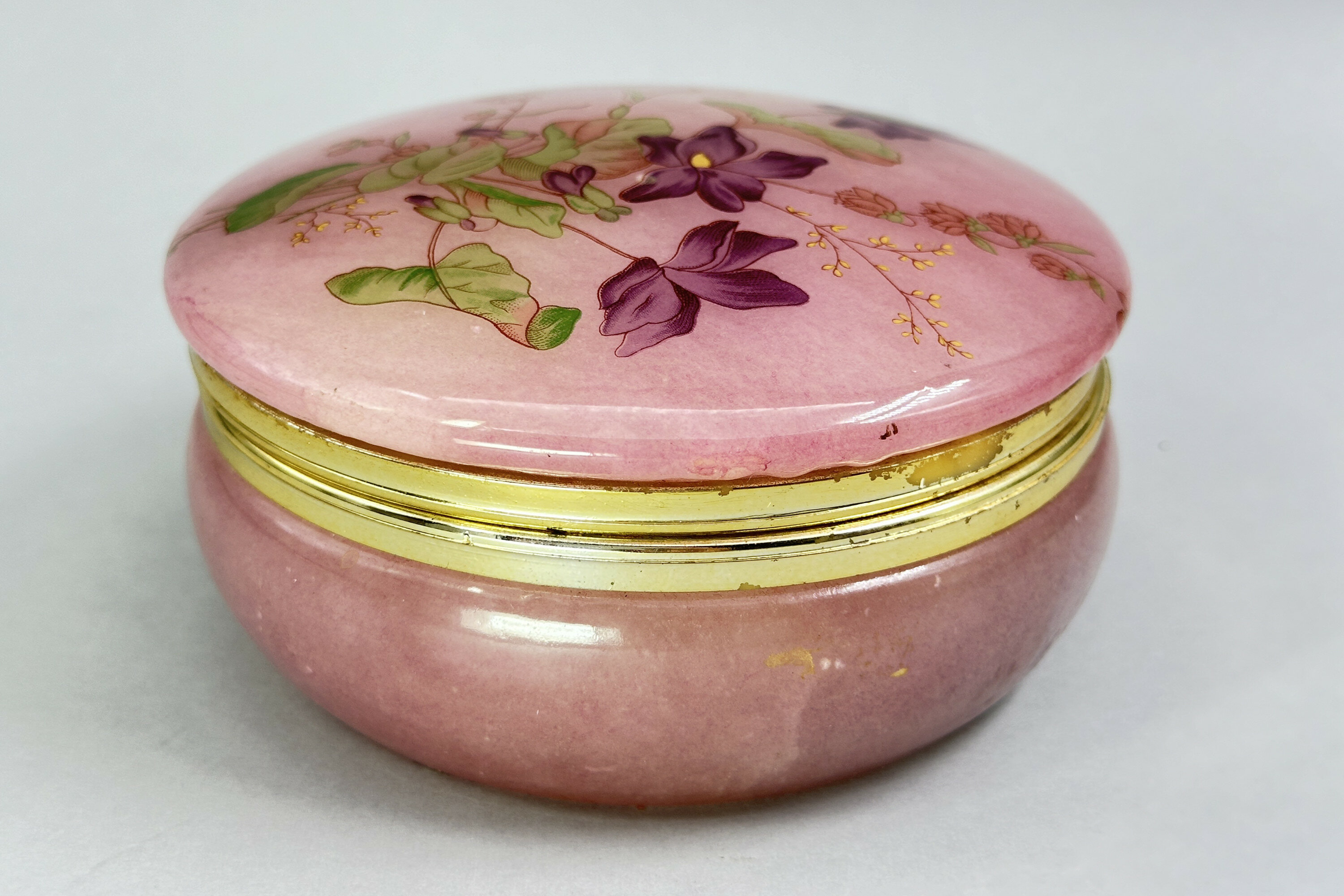
Pink Alabaster Box and Cover, Italy late c20th
Price: £25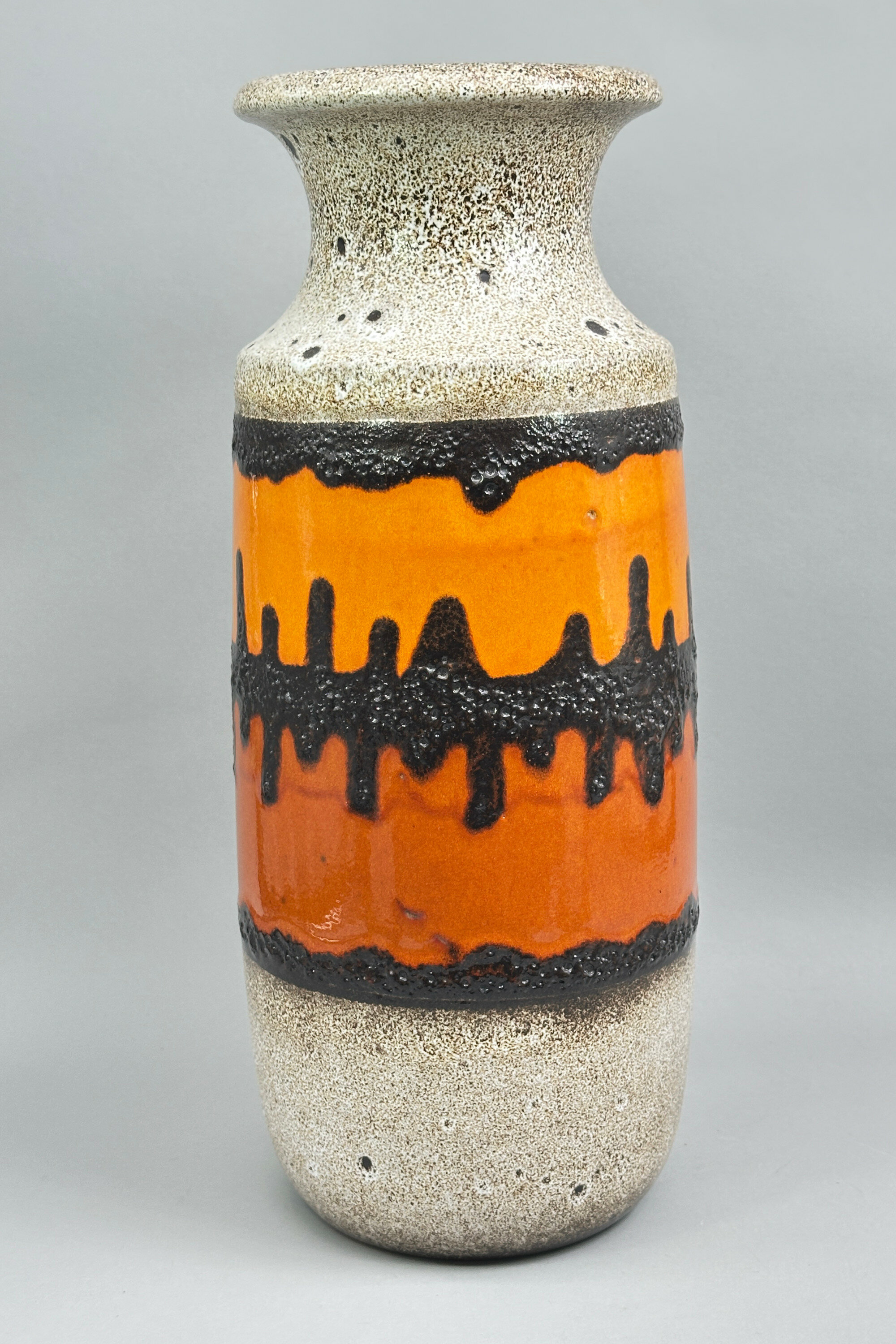
West German Studio Pottery Vase, Scheurich 259-41, 1970s
Price: £150……………………………………………………………………………………….....................................................................................… .
It took time for Germany to rebuild after the Second World War and it was not until 1949 that the country regained its national identity. The production of ceramics slowly revived and began to gain momentum in the 1950s eventually reaching a total of over one hundred companies and studio potteries. Some of the concerns produced a substantial output including Carstens, Bay, ES, and Dümler & Breiden but the most prolific of all was Scheurich. In 1927 Alois Scheurich established with a partner a company named ‘Scheurich and Greulich’ (S&G) which focused on producing low cost ceramic and glass items (see image 7). The success of this business provided the springboard for the creation of ‘Scheurich KG Keramikfabrik’ in 1954. While it commenced production rather later than some of its competitors it soon grew to overtake them and the glaze colourings for which it became best known were produced in the 1970s. Eventually the firm changed direction yet again and is now known for producing ceramic garden ornaments which have an international appeal.
Most of the Scheurich pieces are marked, nearly always with two sets of numbers ‘XXX-XX’ and the wording ‘W.GERMANY’, although there are variants. The firm’s name can appear in addition, as here, where we see as well ‘SCHEURICH KERAMIK’, and it is thought that this indicates a later dating to the 1970s/1980s. The first three numbers are the model number and the last two the height in centimetres, here ‘259-41’. ‘259’, as with nearly all the model numbers, was made with a wide variety of glaze colourings and effects. Equally, similar colours and patterns were used on different models. The shape is one of the firm’s most successful. The cylindrical body narrows gently towards the base and has a well defined shoulder with a concave neck and an inturning rim. The bright orange at the centre is bordered with and divided by irregular black ‘crusty effect’ bands. These are an excellent example of the apocryphally named ‘lava’ glaze for which Scheurich was so well known. Either side of this are two sections of grey speckle glaze which complete the whole. The vase is glazed brown inside and at the base which has the factory markings in raised lettering. Similar glaze combinations can be found on other pieces but the result is rarely as successful as here and the colour scheme used enhances the classic simplicity of the shape, loosely derived from a Chinese original.
This is a vase to appeal to decorators and collectors alike and is very much a ‘one off’ example of these popular wares standing rather apart from its many companions.

DeNicola brooch and earrings 1950s
Price: £20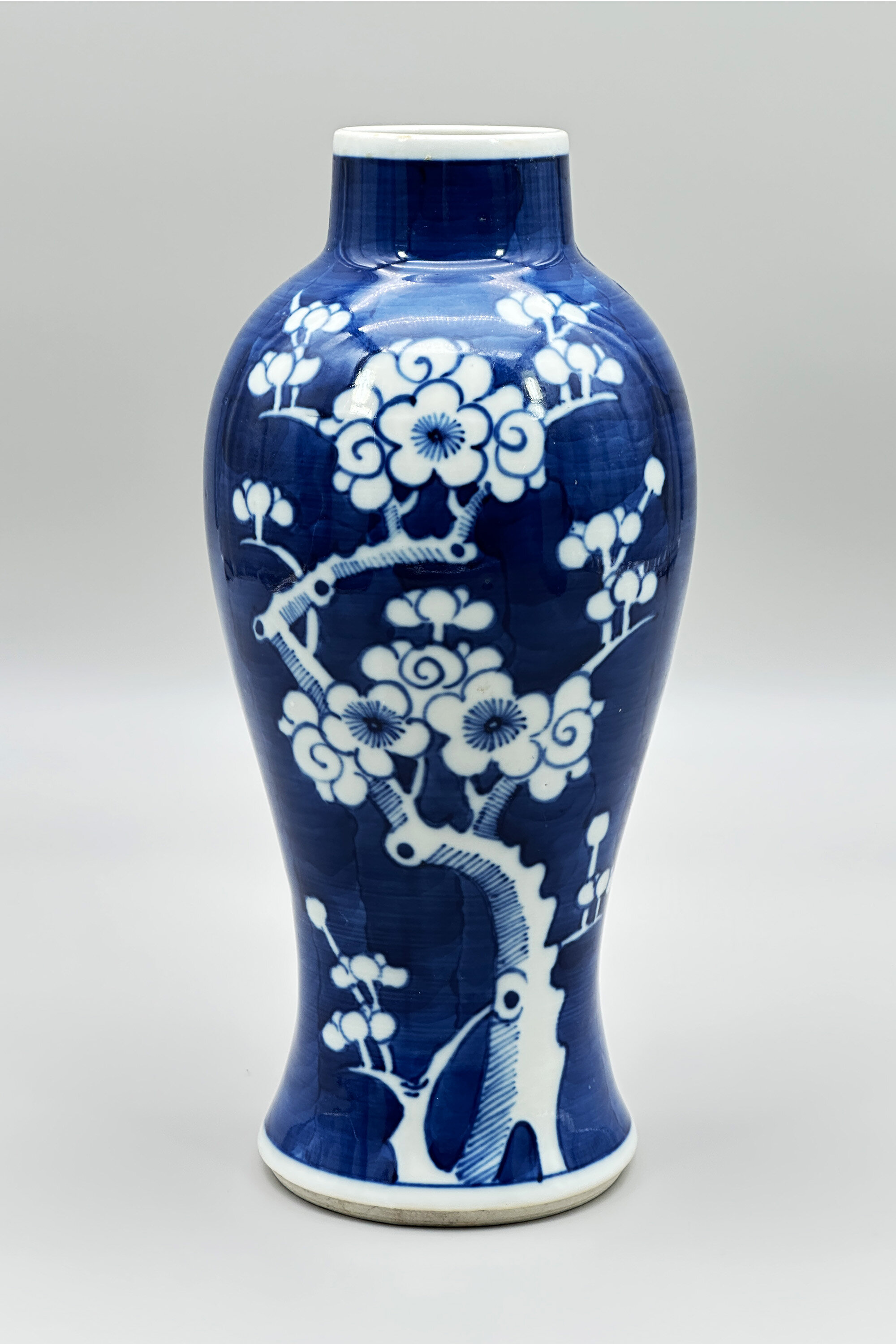
Chinese Blue and White Vase decorated with flowering Prunus circa 1900
Price: £55Flowering prunus or plum blossom is one of the most iconic of the decorative designs used by Chinese potters and first appears in the Kangxi period (1662-1722). Kangxi ginger jars in the pattern were highly prized by Victorian collectors with one example, the legendary ‘Huth’ jar, fetching 5900 guineas, a little over £6000, at auction in 1905, a price equivalent to over a quarter pf a million pounds today. The tree symbolises perseverance and renewal and was usually shown against a pattern of ‘cracked ice, representing the end of Winter and the beginning of Spring. Branches of plum blossom convey the ‘Five Blessings’ : longevity, wealth, health, love of virtue and a peaceful death. The number five was an auspicious number for the Chinese and is reflected in the five petal form of the prunus flower.
Once evolved, the design was continuously repeated by Chinese potters and is even produced today. Many of late nineteenth century pieces display a rather more slapdash interpretation of the pattern as here where the ‘cracked ice’ of the eighteenth century pieces is replaced by the repeated brush strokes of a blue wash ground and the painting of the tree itself is sketchy. The style of decoration and the paste of the foot indicate a circa date to around 1900, but this modest interpretation of centuries old pattern still possesses a charm of its own.
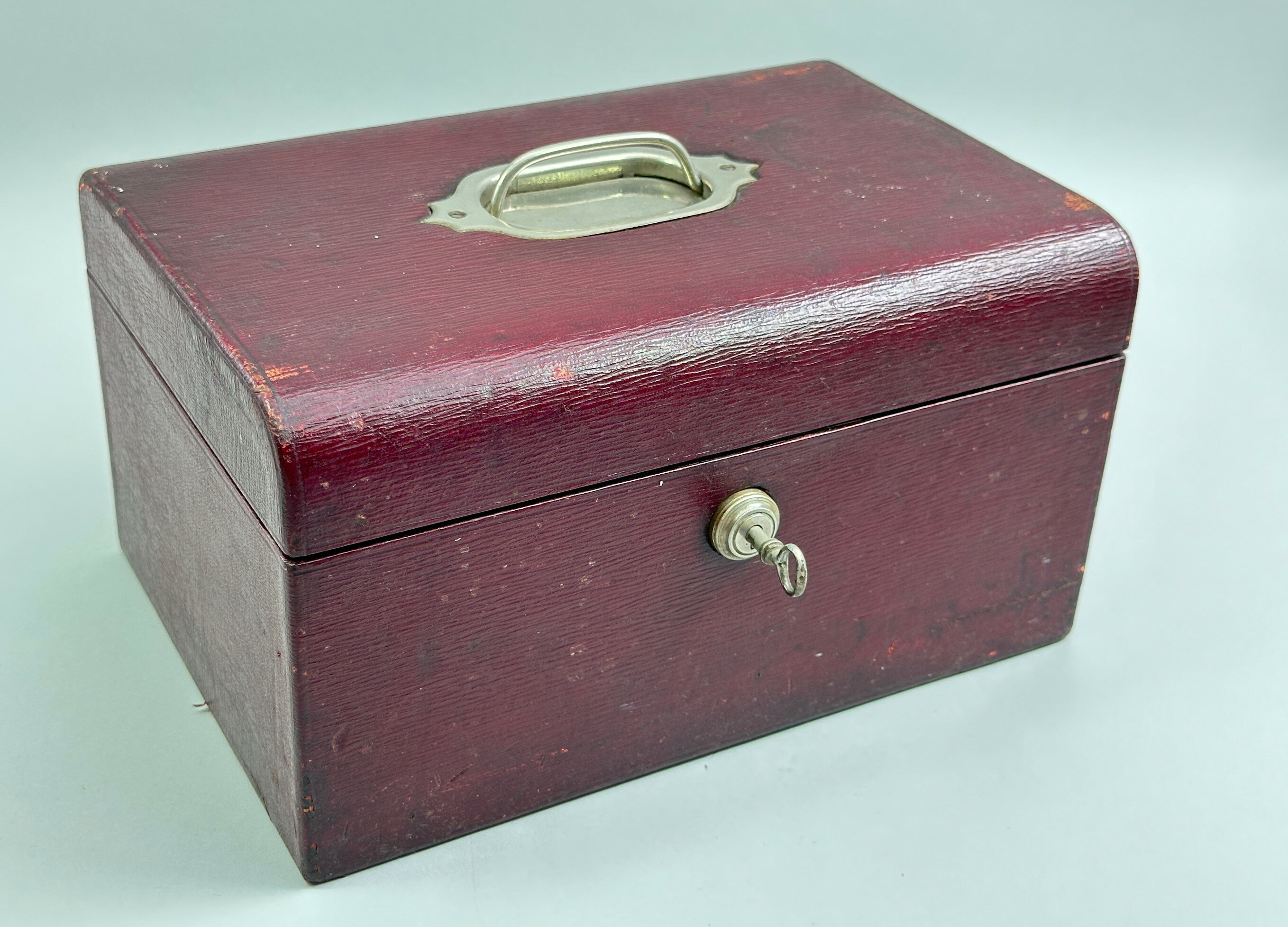
Burgundy Leather Jewellery Box with Bramah Lock, early C20th
Price: £95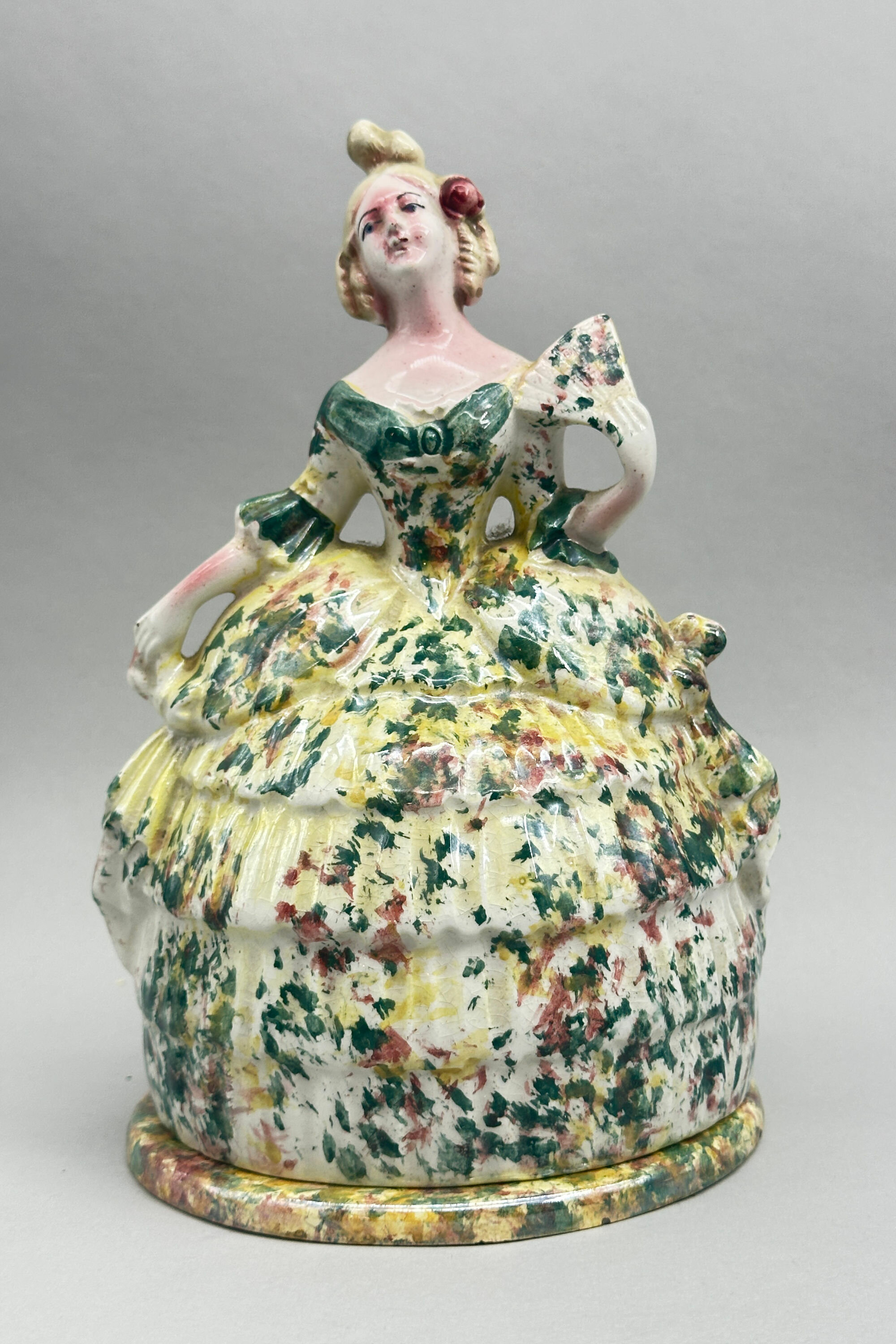
Lustreware Vanity Box, Lady in Crinoline, probably continental early/mid C20th
Price: £35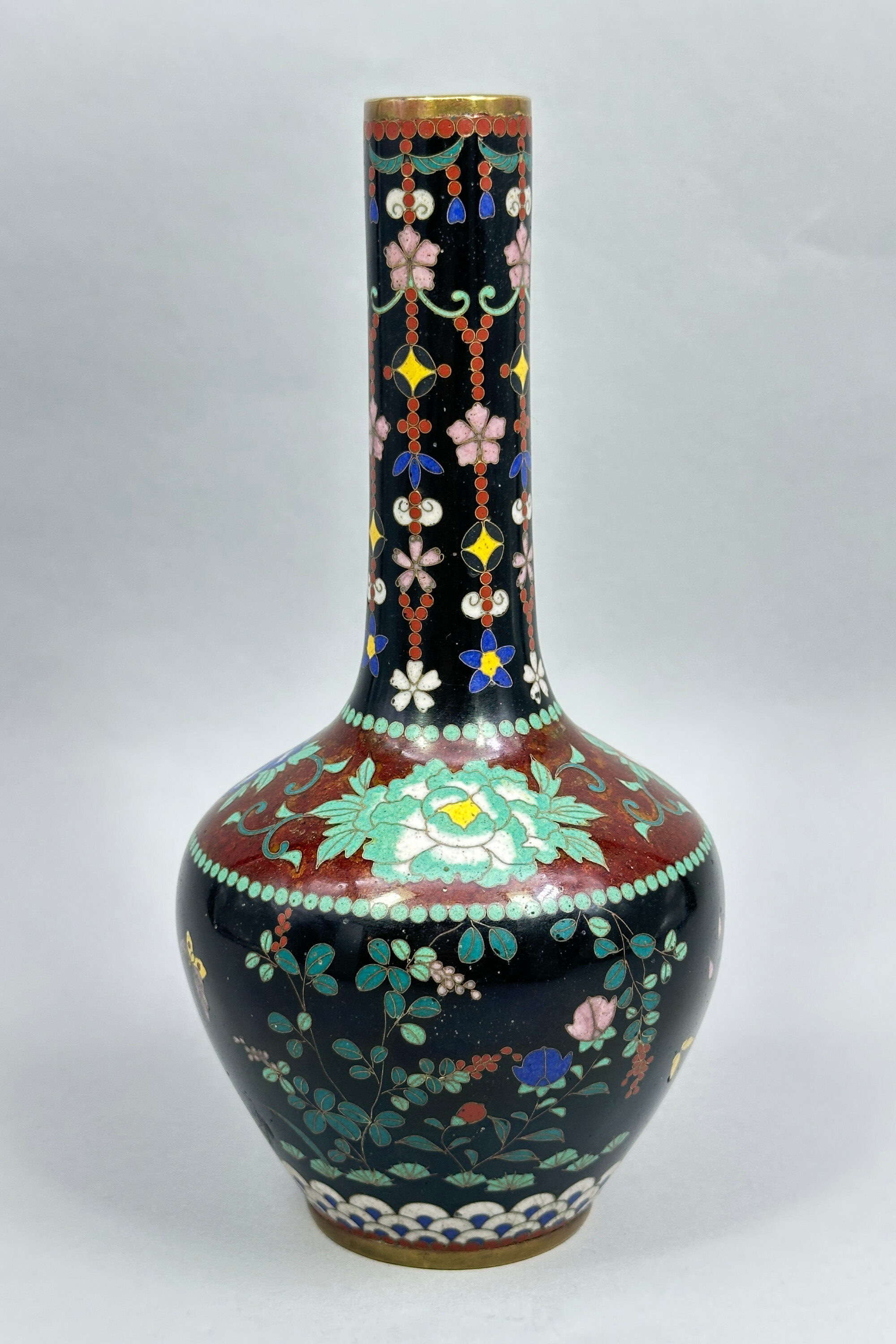
Fine quality Japanese Cloisonne bottle form Vase with black ground, late C19th
Price: £45
Incredible long jade necklace with large carnelian pendant
Price: £135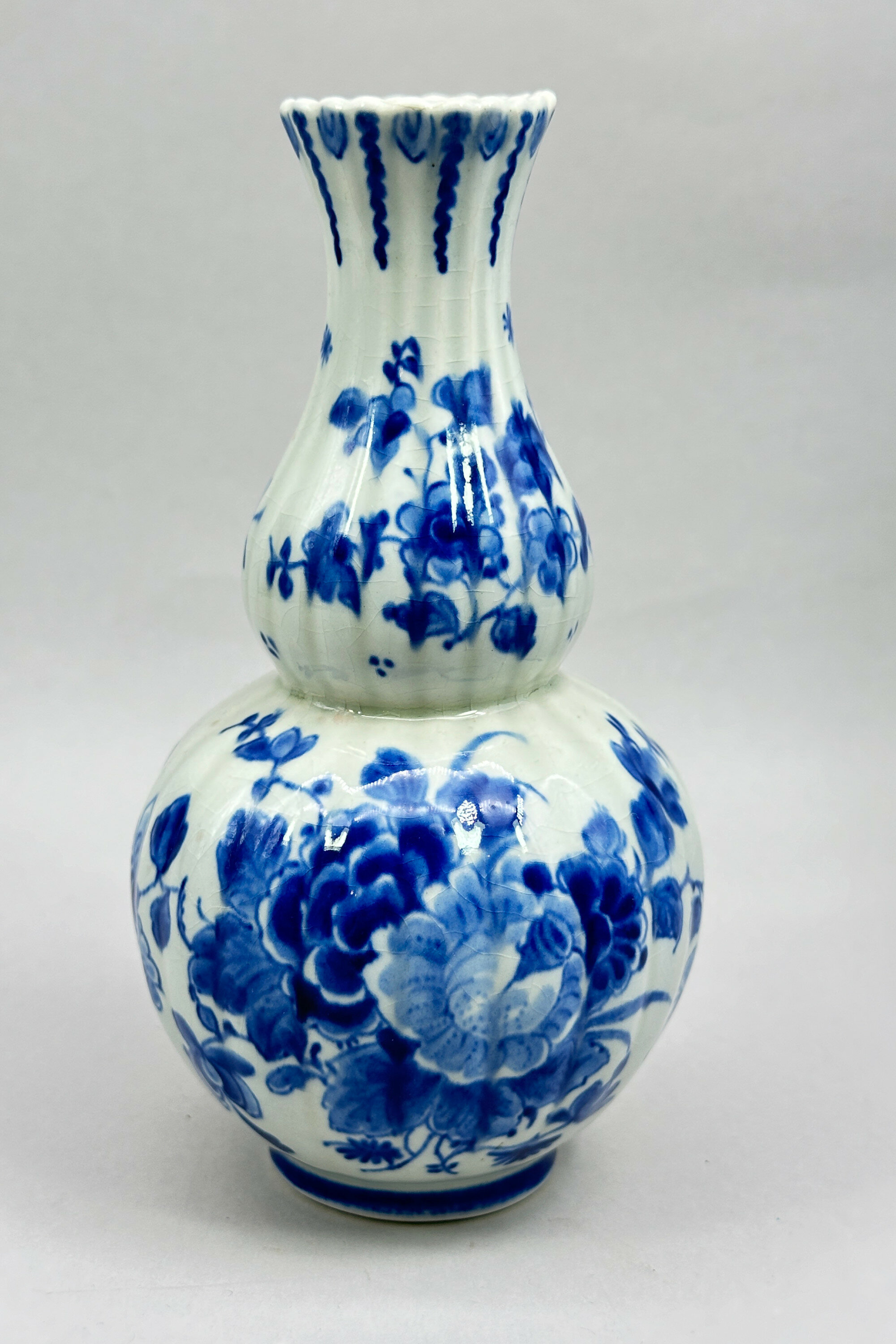
Dutch Delft Blue and White Gourd Vase in C18th Style, late C20th
Price: £25This vase is typical of one of these later creations and copies an eighteenth century original which itself was based on Chinese pieces. The marks underneath, although some of them are blurred, offer a clue to the dating. Below an ‘A’ at the top can be seen a vase which stands for ‘De Porcelyne Fles (The Porcelain Bottle) a factory which was established in 1653 and continues production today. There follow the initials ‘JT’ as a monogram standing for Joost Thooft who bought the factory in 1876 and below this ‘Delft’. At the bottom are usually found the painter’s initials to the left and letters to the right which are the date mark. On this vase these are unclear but the painter’s initials read ‘MA’ which appears to stand for M.H.van Aalst who worked for the firm from 1941to 1983. This would fit with a likely dating here to the second half of the twentieth century, but the artist has successfully recreated the work of his predecessors and produced a piece of great charm.
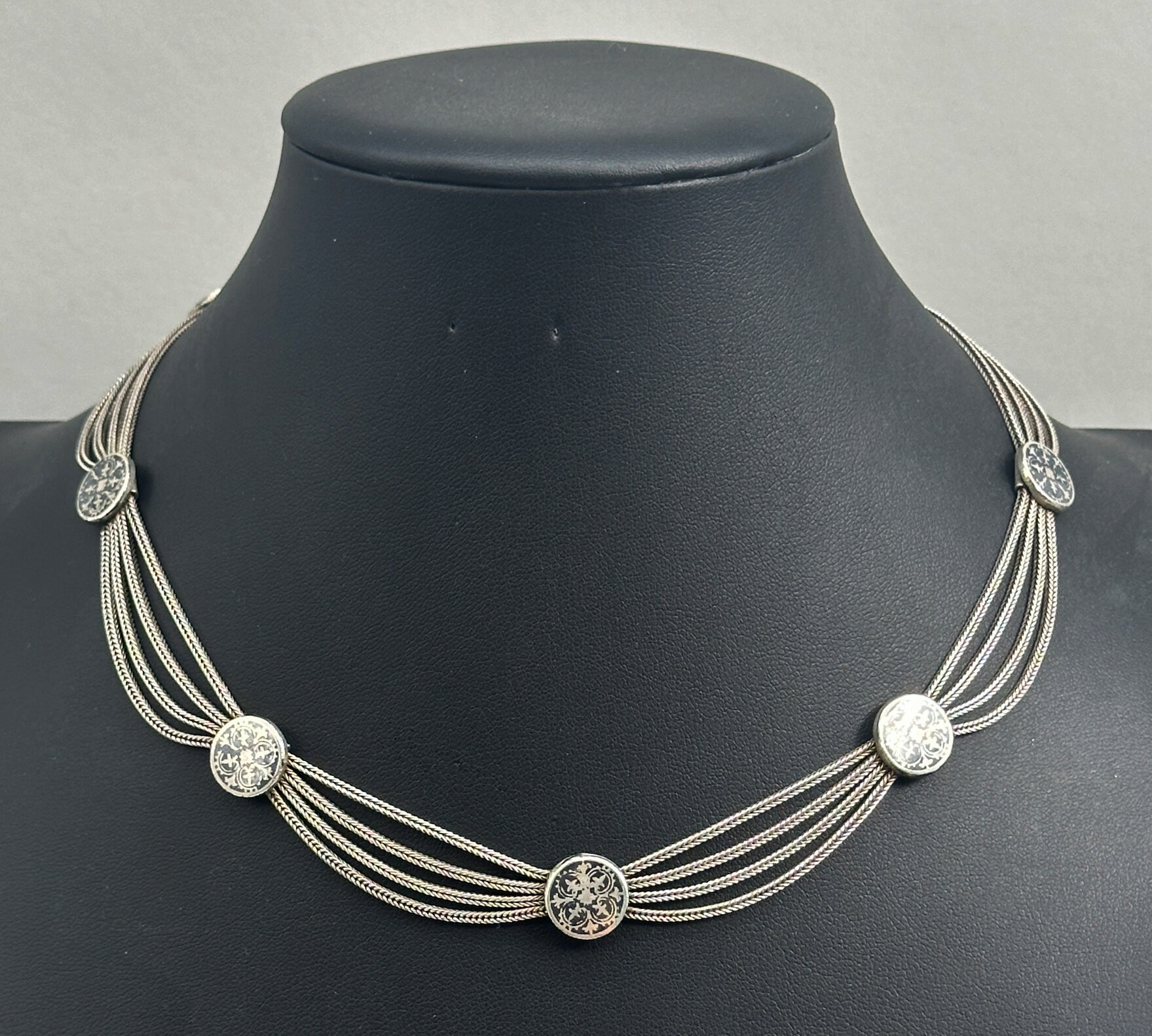
Islamic Silver Necklace with Niello work plaques, c1930
Price: £75The technique used is that of ‘niello’ work. (The word derives either from the classical Latin word ‘nigellum’ or the later mediaeval words ‘nigello’ or ‘neelo’.) Niello is a black mixture, usually of sulphur, copper, silver, and lead and used as an inlay on engraved or etched metal, especially silver. Added as a paste, it hardens to a black colour after firing and is then polished. Here it is the ground that formed from niello while the design shows though in silver, a less common version.
There is much skill in the craftsmanship here and the result is a piece of classic and timeless simplicity.
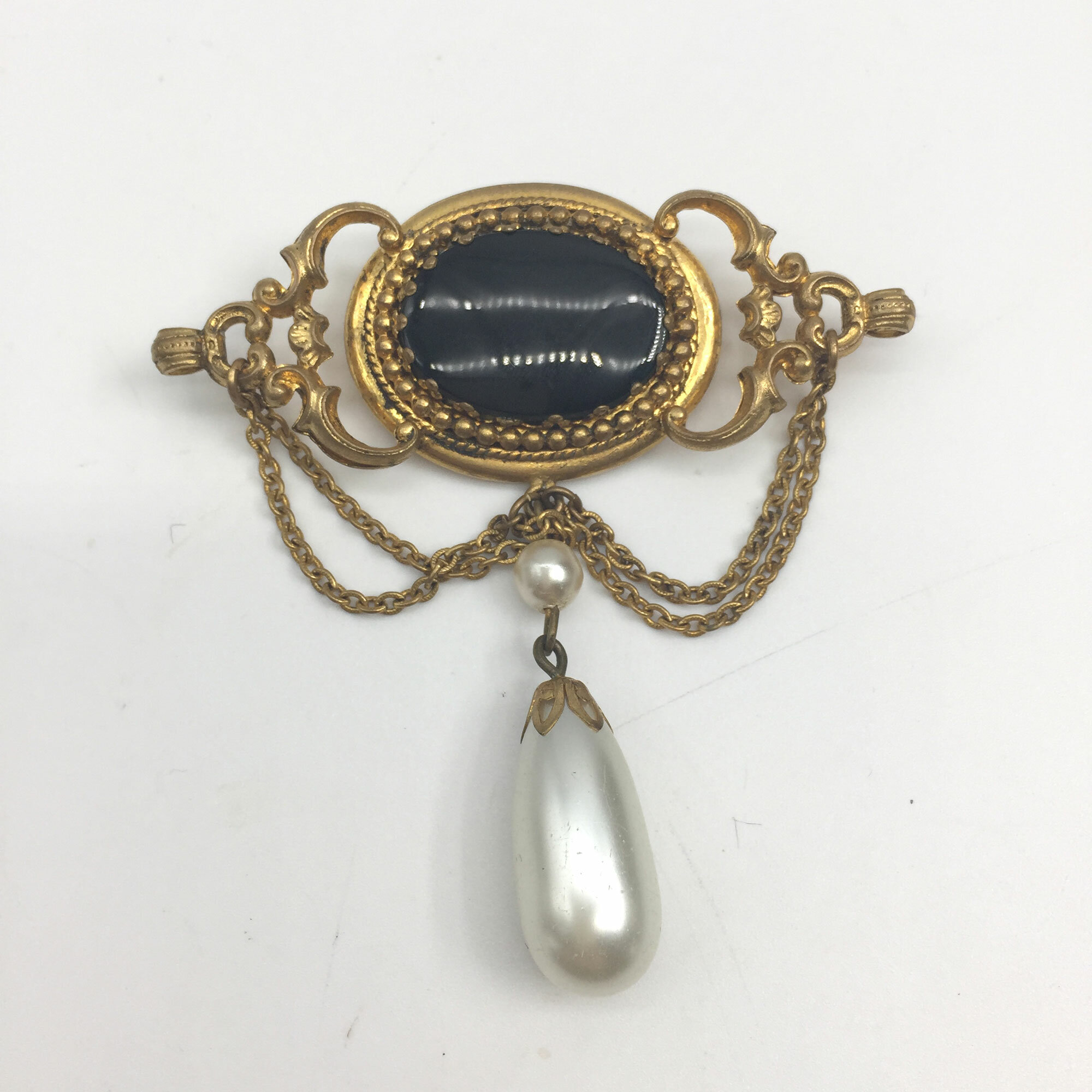
Striking Art Deco brooch
Price: £15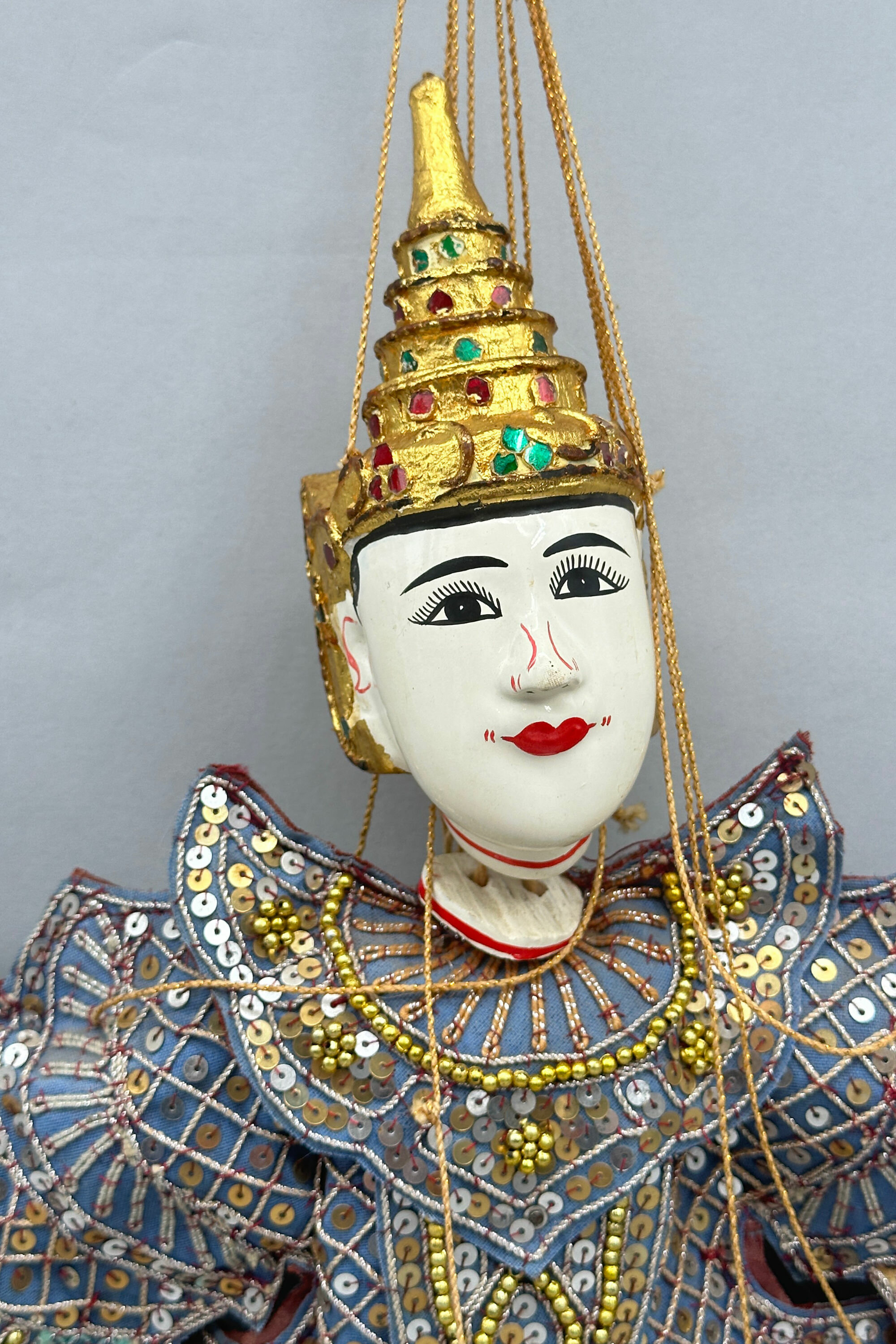
Marionette Puppet of a Dancing Lady or Princess, probably Burmese late C20th
Price: £45The style of the dress suggests Burmese work and very similar fabric decoration can be seen in the cloth wall hangings also included in this sale. Burma has a tradition of marionette puppetry (marionettes are a specific form of puppet where the figure is controlled by strings or rods) which dates back to the late eighteenth century and is still popular today with visitors to the country, now called Myanmar. Termed ‘Yoke thé’, the Burmese marionette tradition allowed political commentary under the guise of of an entertainment display. The standard ‘troupe’ comprised twenty seven characters, both animal and human, and this lady figure is probably the ‘princess’ (‘Minthami’). She is a fine example of the genre and probably dates to the 1990s when General Khin Nyunt of the ruling junta lent official support to marionette actors and troupes in an attempt to revive a tradition which had fallen somewhat into decline.
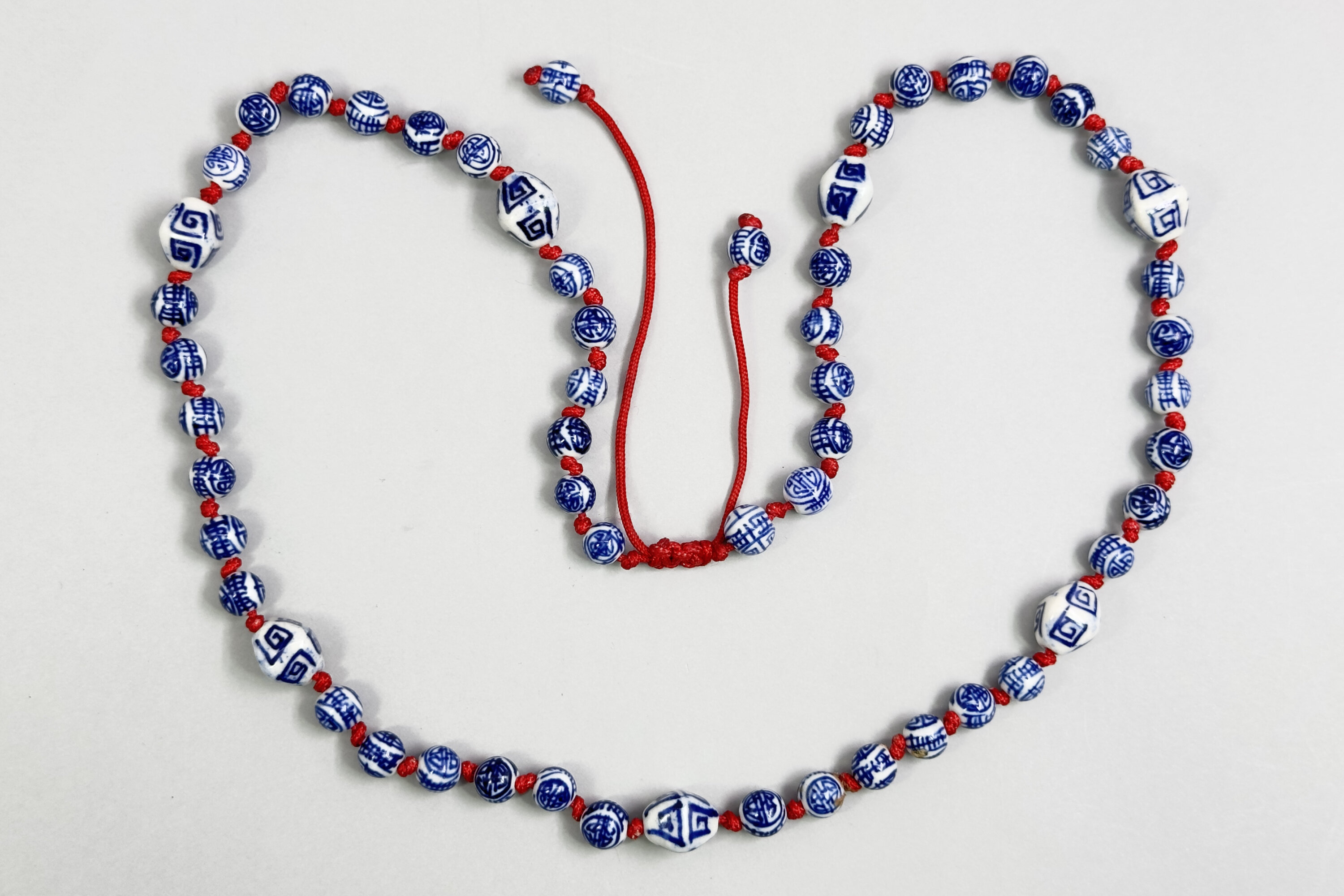
Chinese Blue and white ceramic beads, C20th
Price: £15PLEASE NOTE THAT THERE IS FREE UK SHIPPING ON THIS ITEM. For international buyers the shipping cost will be reduced by the UK shipping cost, so don't worry if you are outside the UK, you still receive this benefit!

Unique 40 strand micro coral bead necklace, India 1910
Price: £150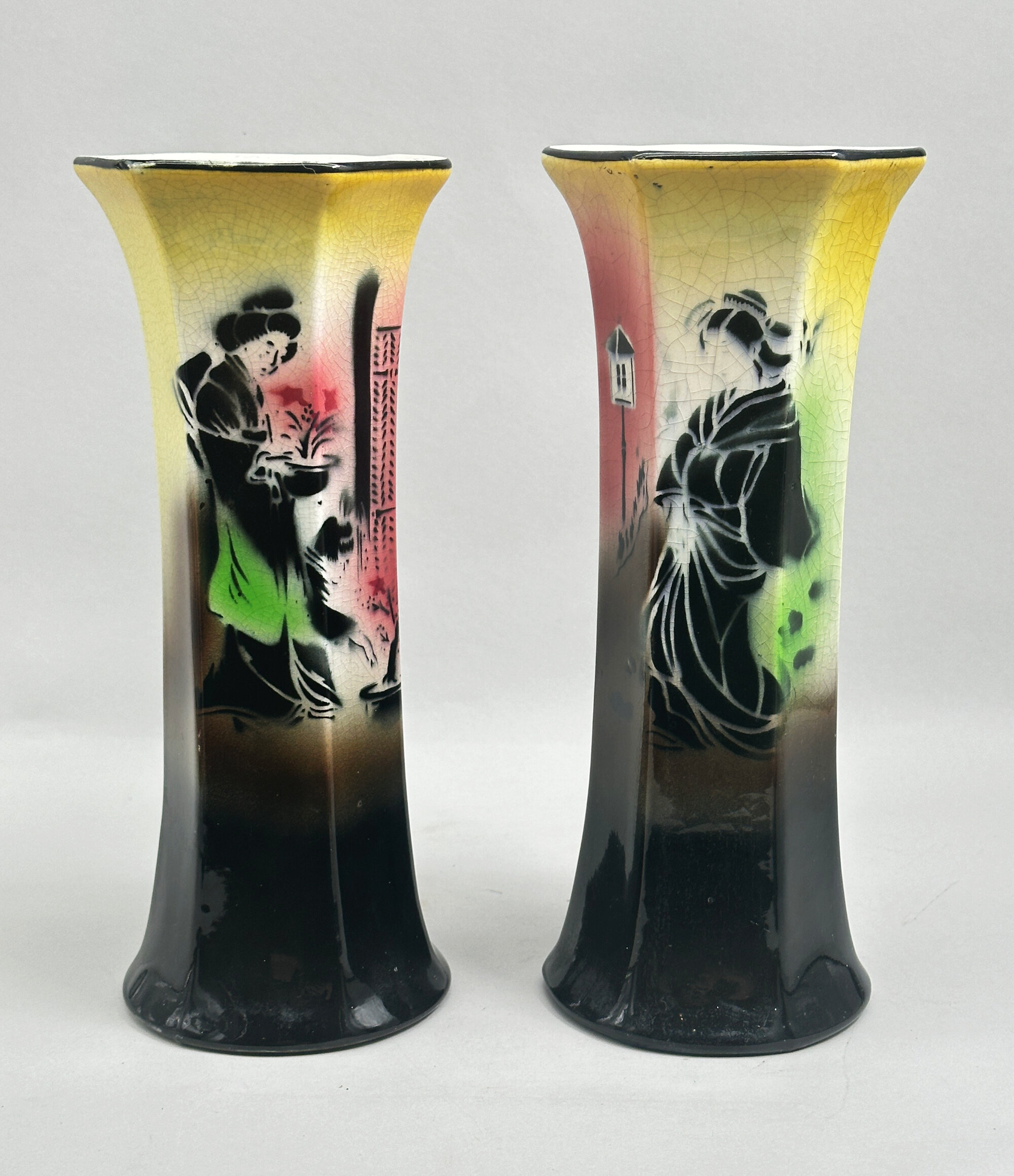
An unusual pair of Art Deco style Japonaiserie ceramic vases, probably French 1920s/1930s
Price: £75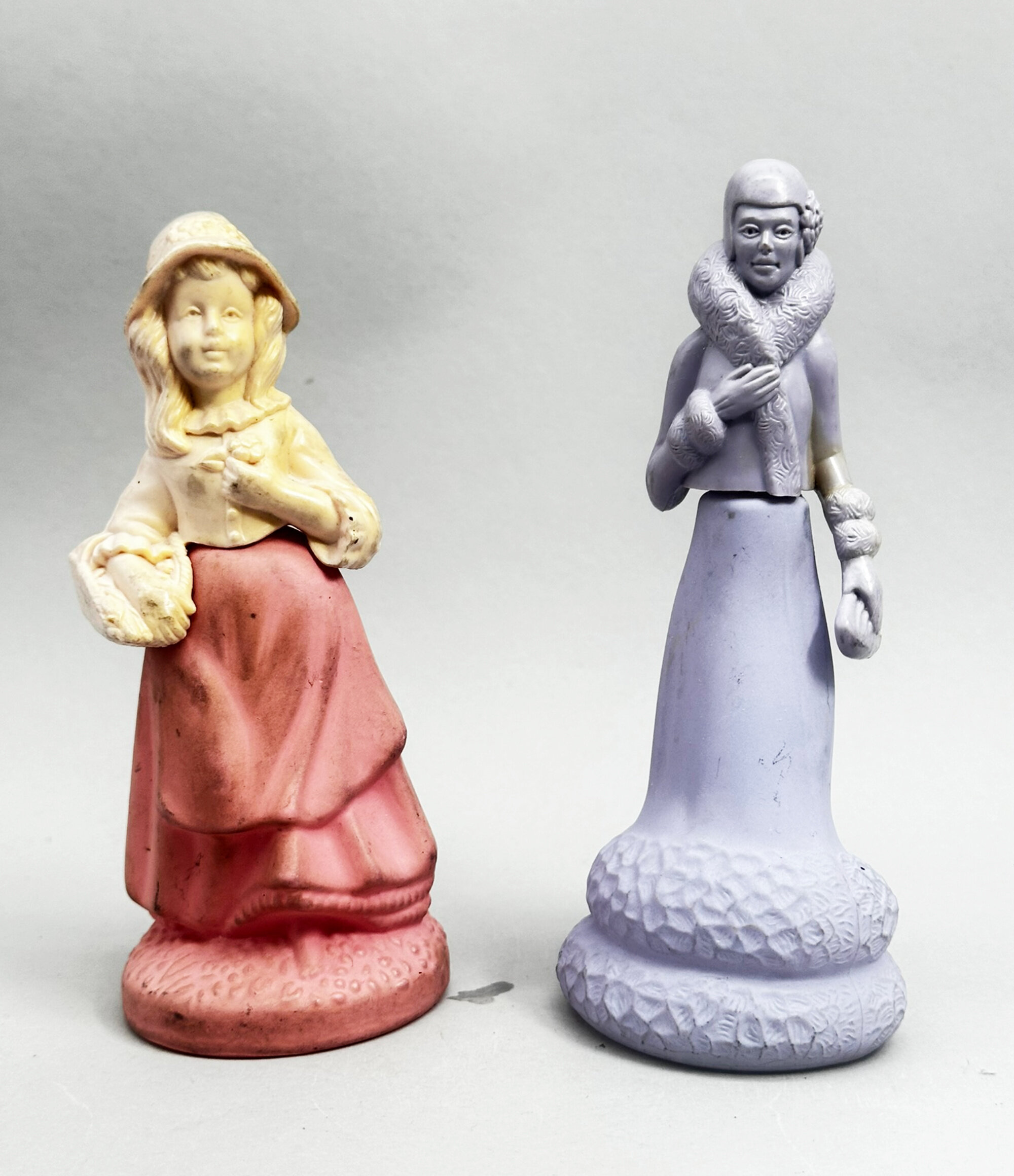
Two Avon Perfume Bottles, Lady and a Girl, 1970s
Price: £20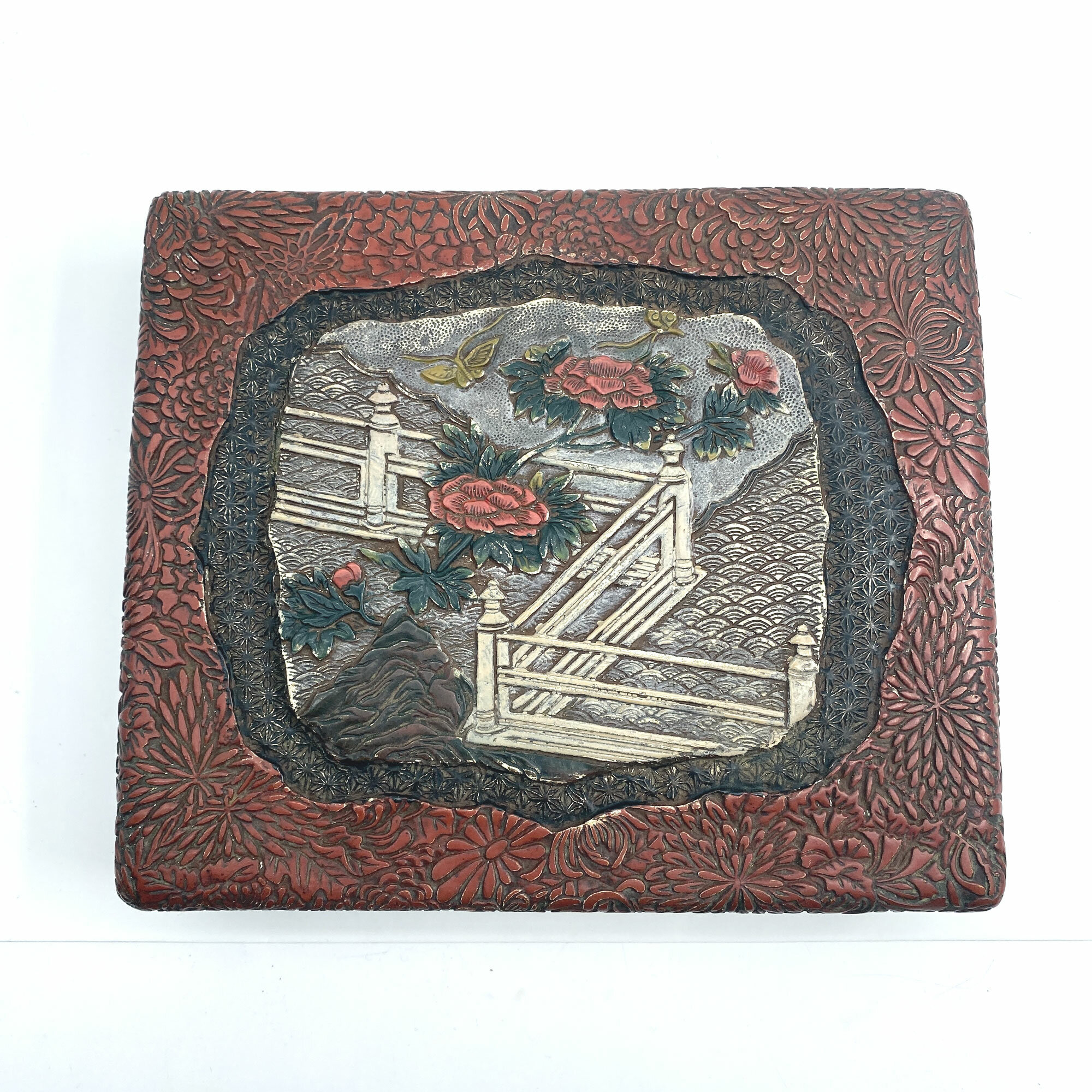
Japanese red lacquer Box and Cover with inset bone plaque, late C19th
Price: £75
A Pair of Royal Doulton Ewers, marked, early C20th
Price: £150
Art Deco large cuff bracelet
Price: £75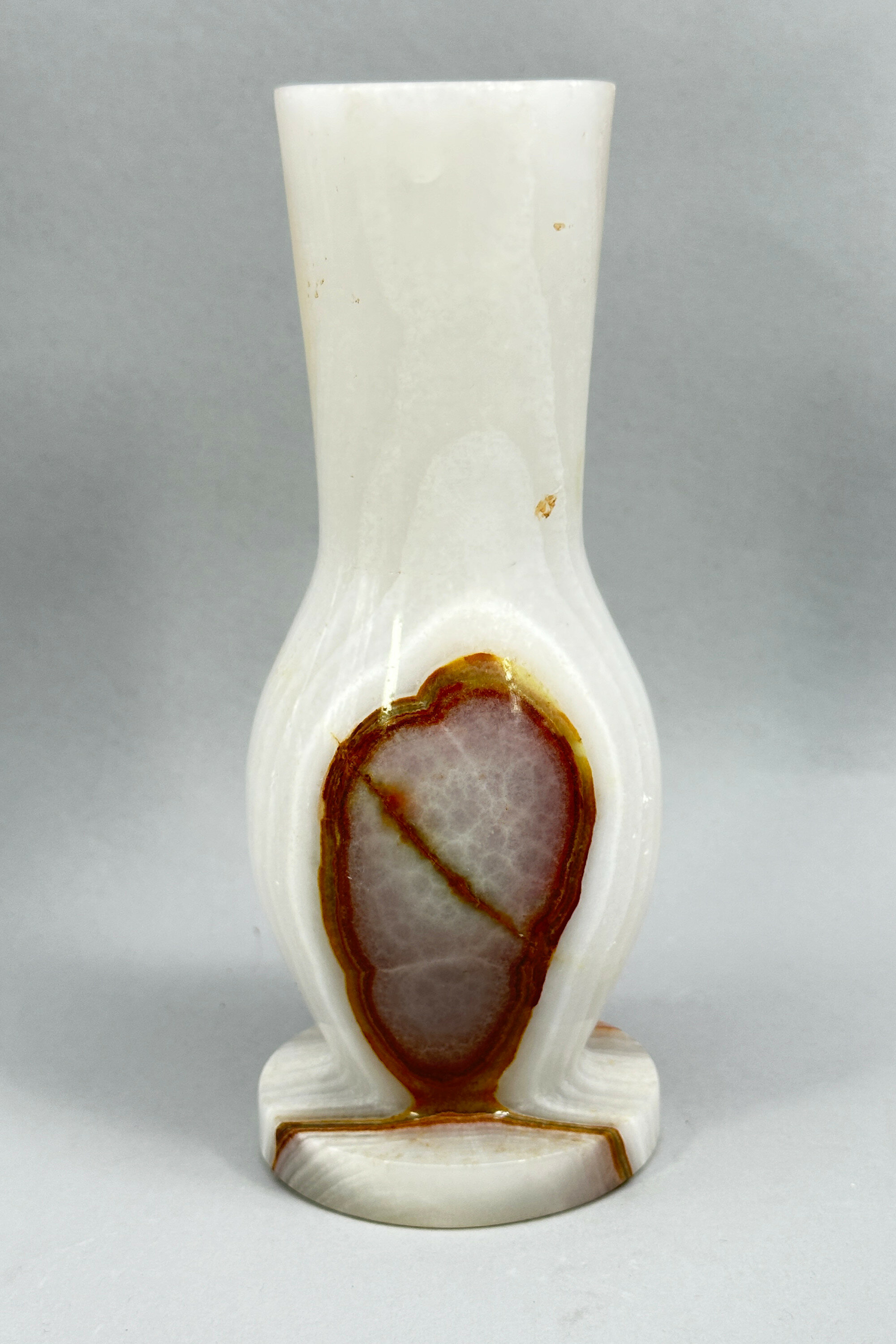
Pedestal footed Onyx Vase, mid to late C20th
Price: £25
Pair of French Blue Ground Square Vases Choisy Le Roi, late C19th
Price: £45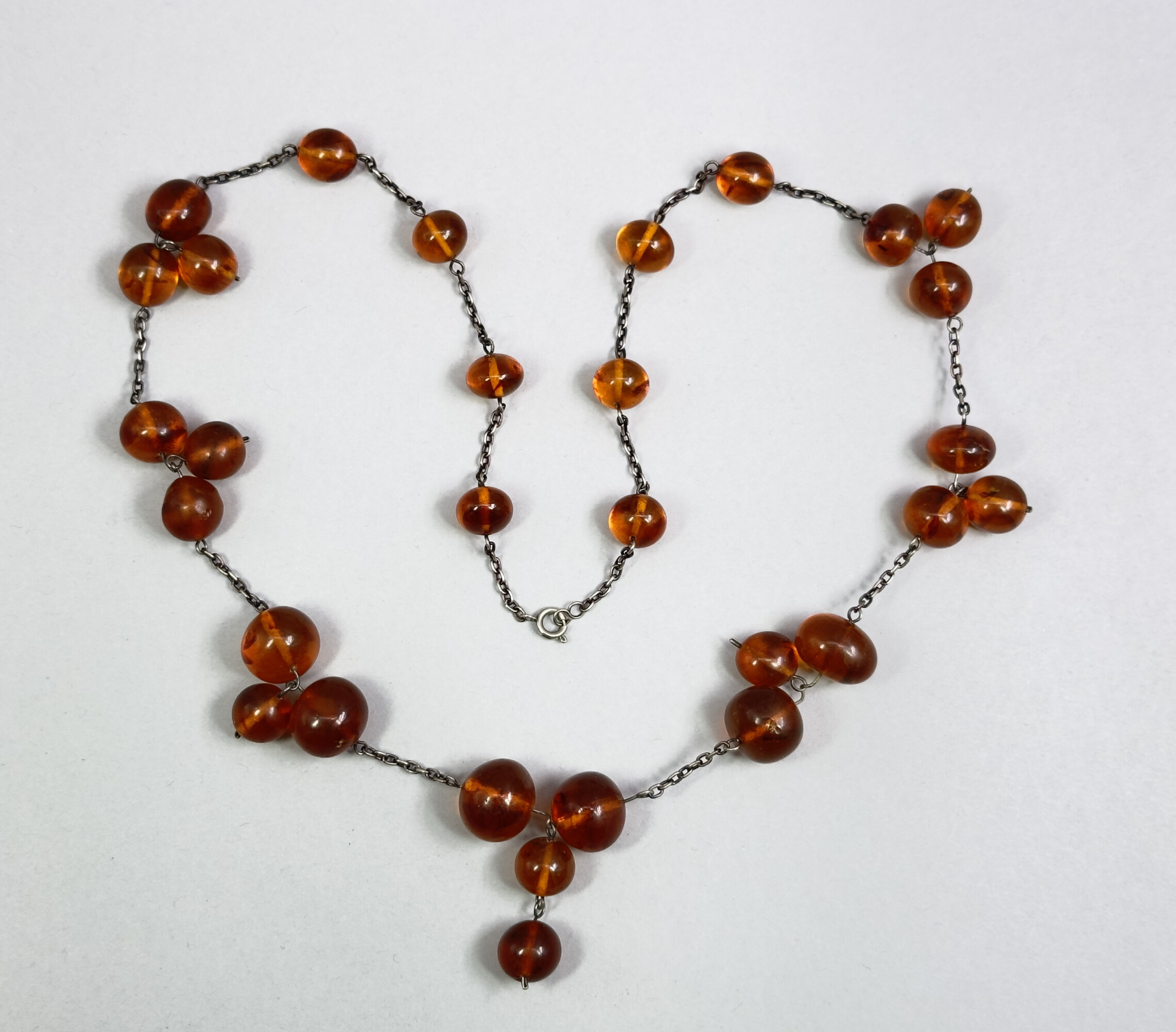
Amber statement necklace with round drops c1960
Price: £50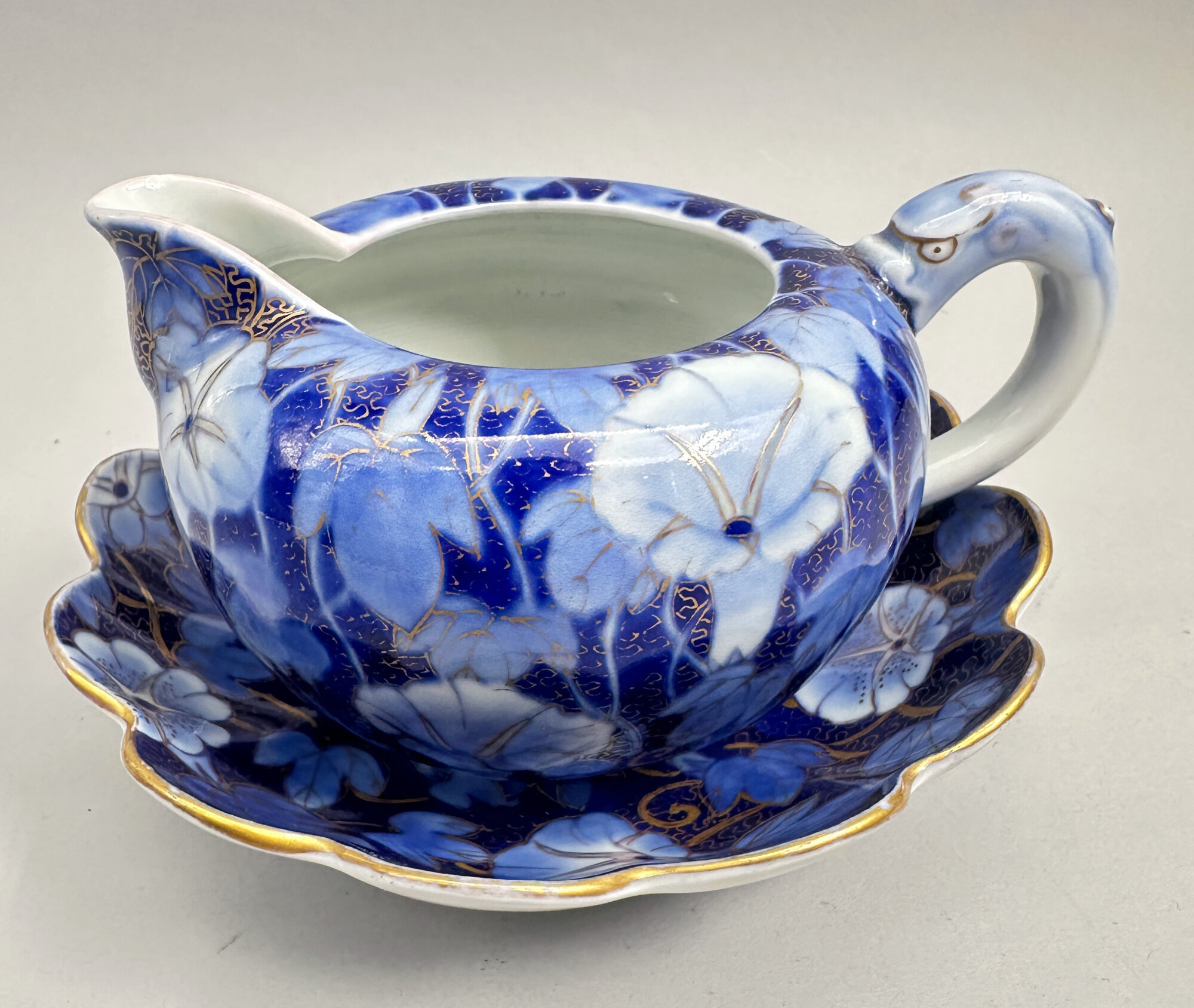
Japanese Fukagawa Jug and Stand decorated lotus, signed, circa 1900
Price: £45The Fukagawa kilns produced the best quality Imari items made in Japan in the late nineteenth century for export to the West. Their history starts with Ezaiemon Fukagawa who in 1856 became head of his family's porcelain business and in 1875 founded Koransha (The Company of the Scented Orchid) in Arita, Japan, to produce tableware for export. In 1894 the modern Fukagawa company was founded by Chuji Fukagawa, with the Fukagawa trade mark of Mount Fuji and a stream, as its trade mark. Dating of these pieces is therefore towards the end of the Meiji period (1868 - 1912) probably around 1900. While the decoration is similar to that found on other Fukagawa pieces there are few, if any parallels, and tea ware pieces by the firm are not very often seen.
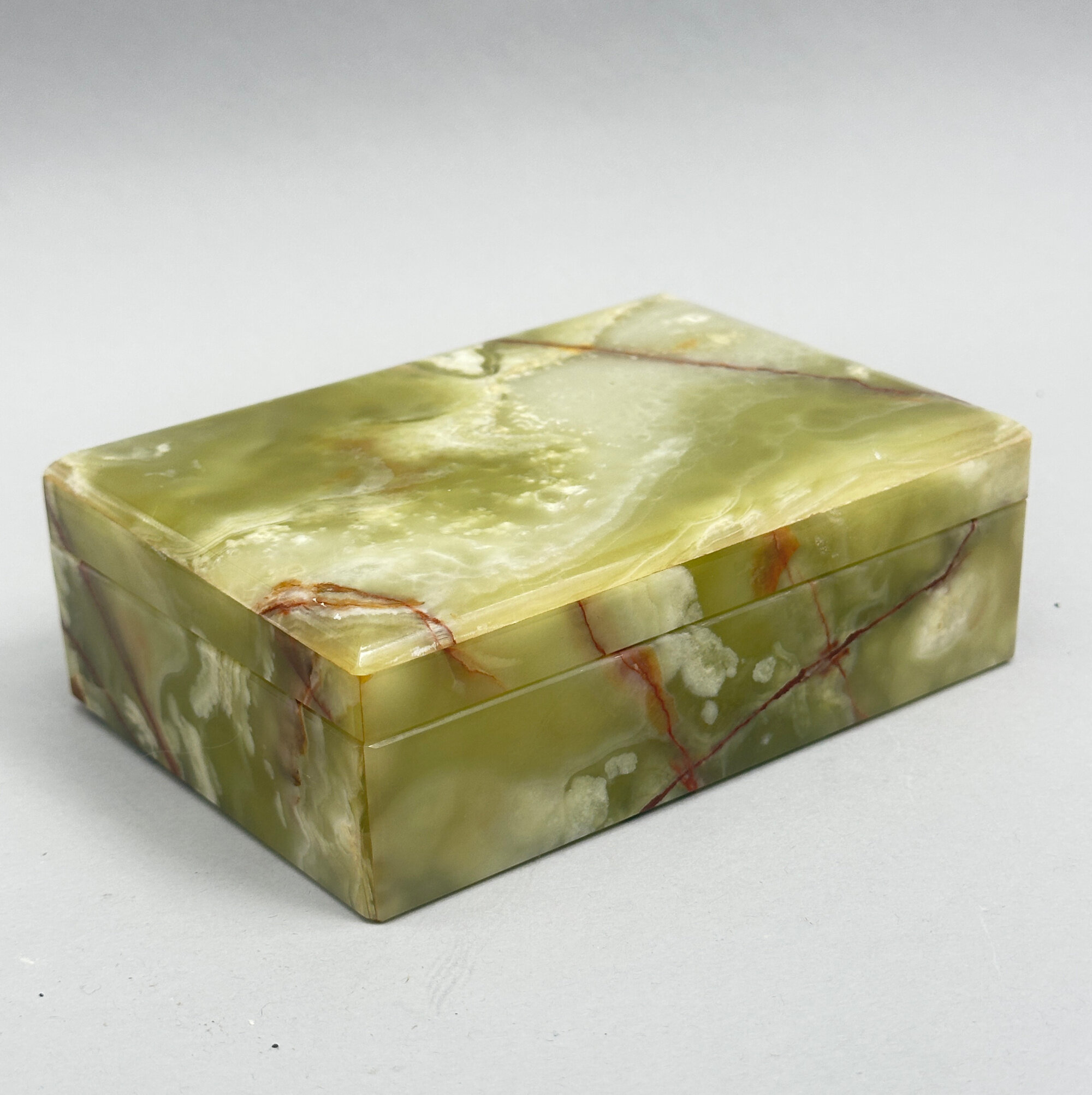
Rectangular Green Onyx Box and Cover, 1960s
Price: £35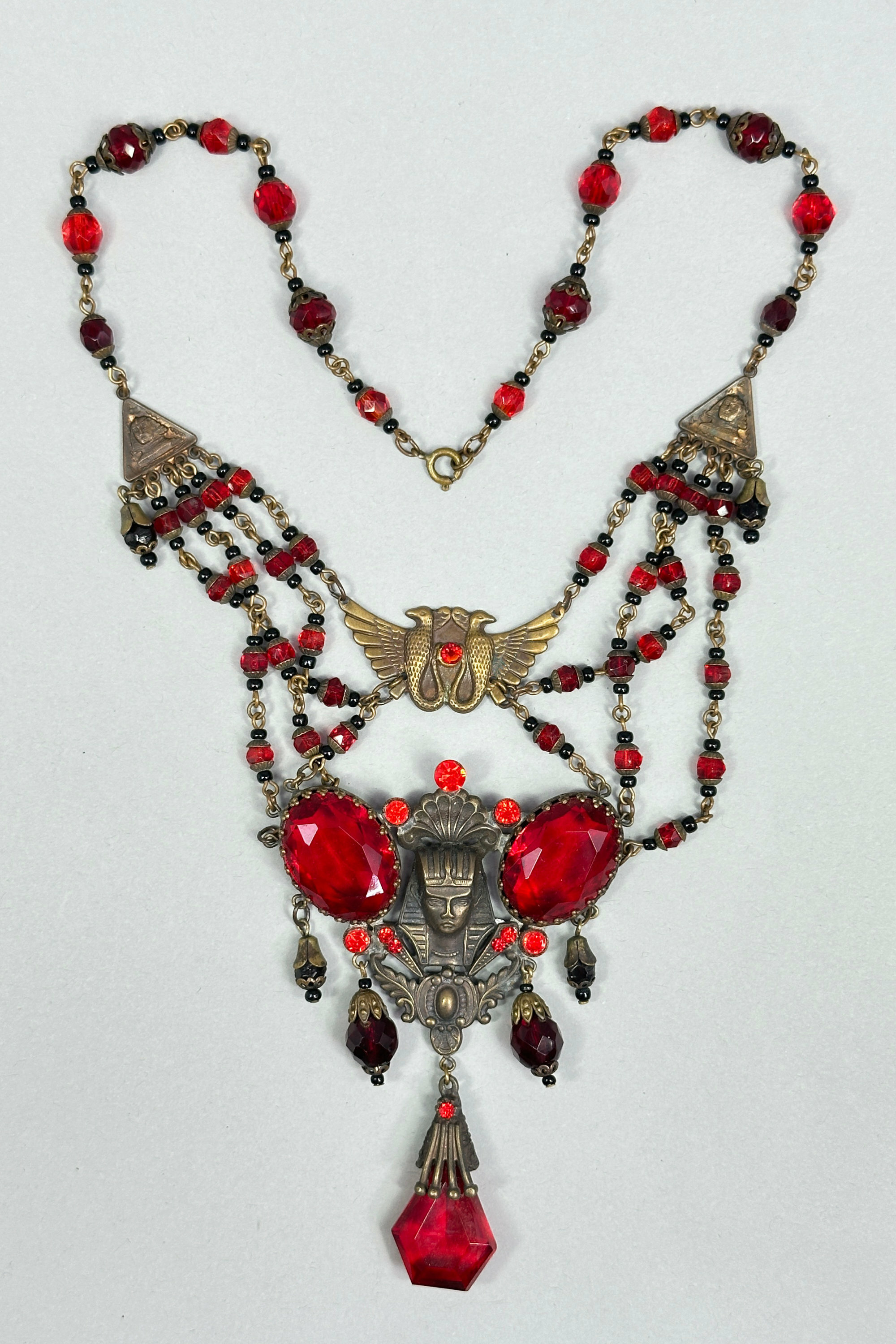
Early Egyptian Revival necklace with ruby glass stones c1900
Price: £175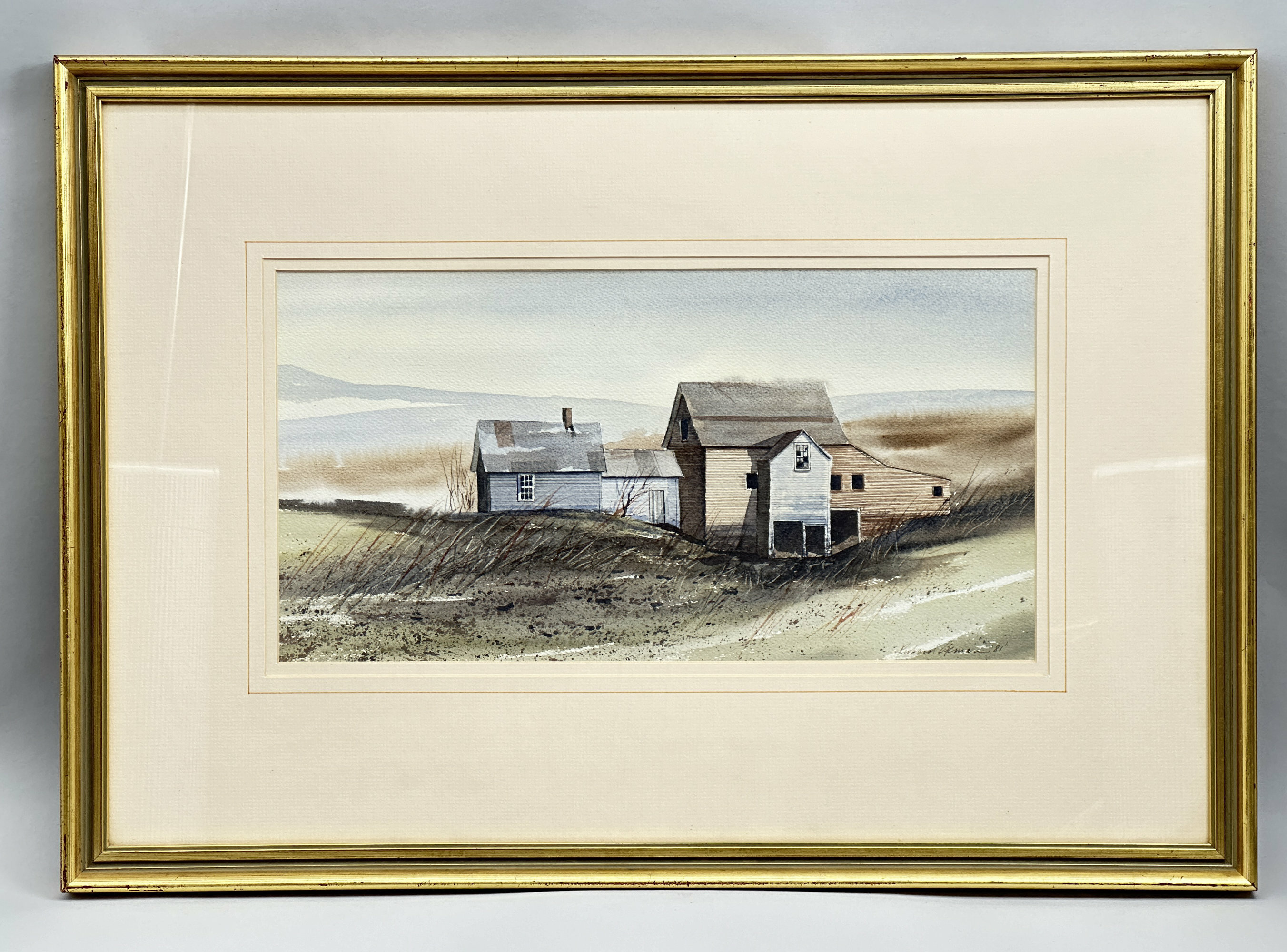
Signed Watercolour of Farm Buildings, Richard Akerman (1942-2005), dated 1981
Price: £110..............................................................................…………………………………………………………………………………………..............................…
Richard Akerman was born in London in 1942. He attended the Hornsey College of Arts and Crafts in the early 1960s, studying a general fine art course which incorporated printmaking and sculpture. His first exhibition was at the Obelisk Gallery in Crawford Street, London, where his work was displayed alongside works by famous surrealists such as Man Ray and Salvador Dali, implying that the style of his early work matched that of his more famous contemporaries. Years of travel followed in both Europe and the Far East and this seems to have turned him to painting in a more coventional style. A succession of watercolours was to follow with subjects ranging from still life and flowers to garden and architectural subjects. His work became immensely popular through the prints made from his original paintings, indeed such was the demand for them that he rivalled Monet as a subject for reproduction in this medium becoming, in a sense, quite a household name with exhibitions of his work internationally.
The path to success, however, was not straightforward and one account of him, written by his son Marcus, mentions running a hot dog stand alongside joining the artists with their weekend displays of works for sale on the railings at Kensington Gardens. Convivial and outgoing (a self portrait captures him well : see image 9), Akerman was married with three children and spent the latter years of his life in Spain where he sadly died after an accident in 2005.
But his work survives him and the prints produced in his lifetime can still be obtained today, giving an accesible overview of his output. The style is approachable with an attractive use of colour and often slightly impressionistic brushwork. But there are works executed in a more precise style, for example a signed watercolour ‘Hot House Flowers’, exhibited by the Edinburgh Gallery in 1994 (see image 10) and this is seen in the work we have on offer. The location of this group of farm buildings is uncertain but Akerman painted similar scenes which appear to be located in Kent and this may well be the case here. Original watercolours by Akerman are not so easily found but what increases the rarity and interest of our picture is that the artist’s signature, done in a slightly more precise hand than the signatures found in the reproduction prints, has the date in addition (’81). We have been unable to find any other example of this and it leads to the possibility that this is a work which the artist painted for himself. Certainly there are no reproductions of it. If so, then it is of particular interest and more than worthy of inclusion in a collection C20th British watercolourists with the addition of being an original creation by an artist who enjoyed such great popularity with the general public.
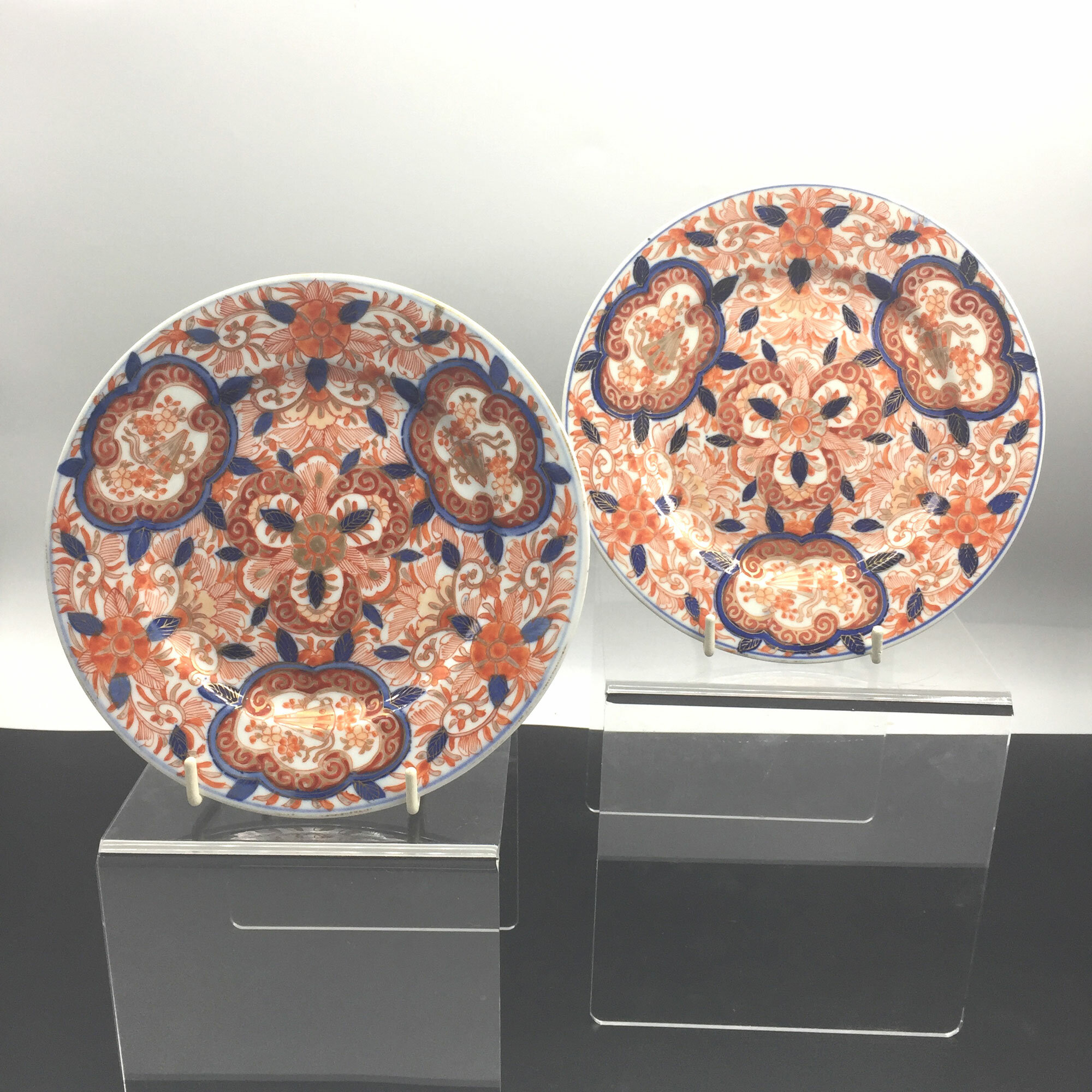
Pair of Japanese Imari Plates, Meiji Period circa 1880
Price: £150
Chinese Straw Thread Picture on Silk, framed in original box, late C20th
Price: £45
Taxco collar necklace by Rubi Ramirez c1950
Price: £350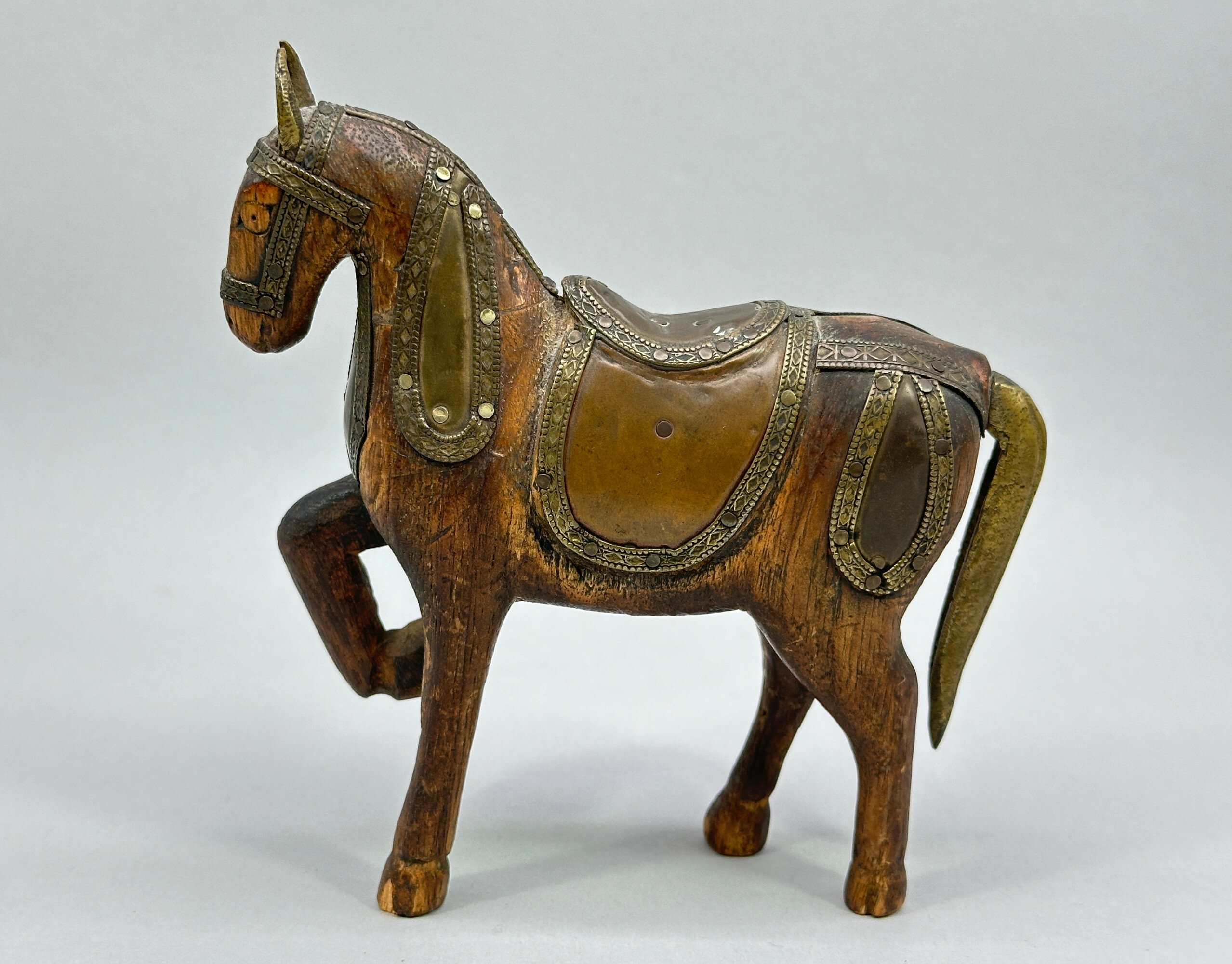
Indian wooden toy model of a Horse with metal fitments, early C20th
Price: £25
Chinese Cloisonné Bowl with a wavy edge, 20th Century
Price: £25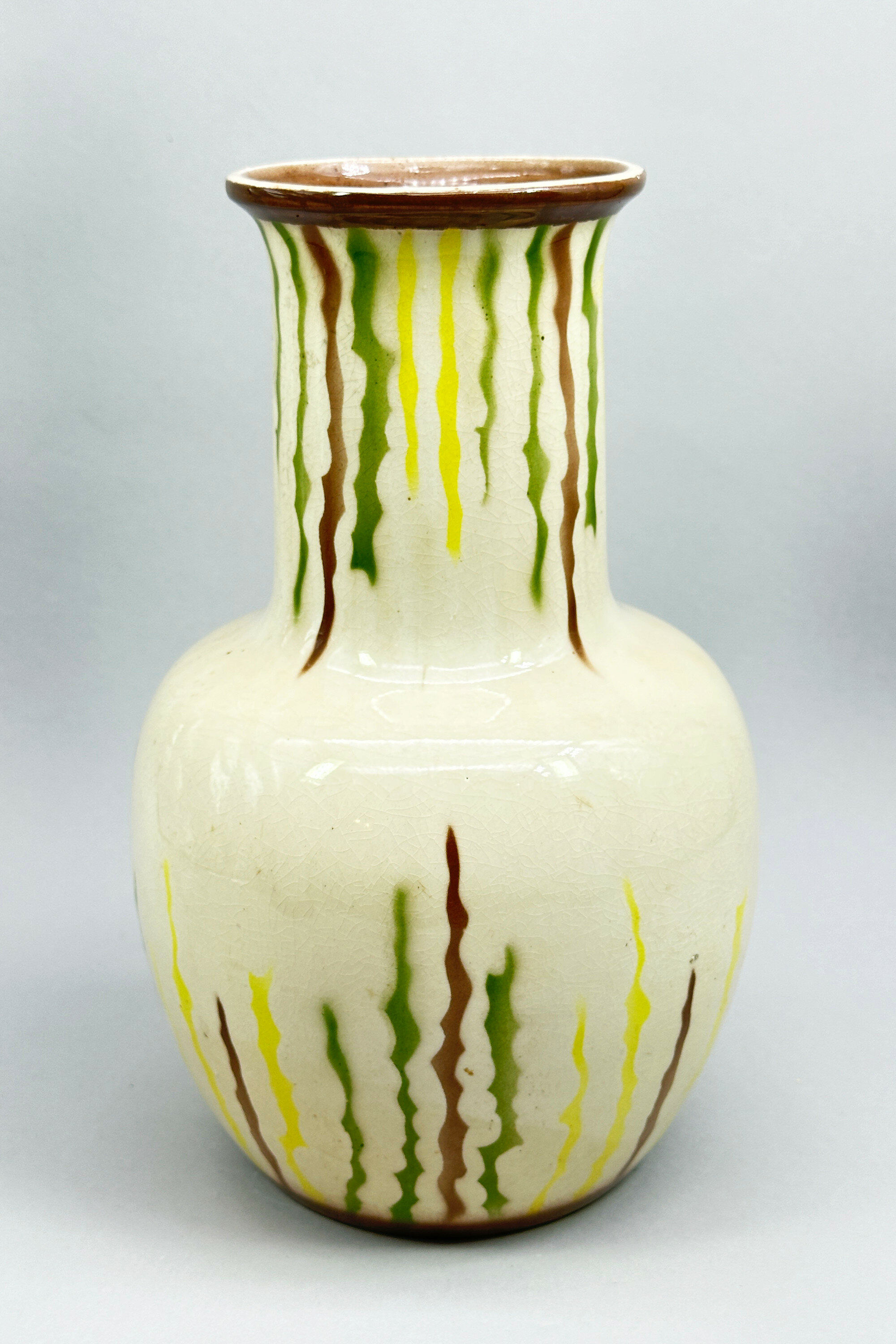
Art Deco style Vase signed E.Radford, mid C20th
Price: £75There were, in fact, two craftsmen working in the C20th British pottery industry with the name Edward Radford, father and son. Radford senior worked for Pilkington’s Royal Lancastrian Pottery in Manchester from 1903 until his retirement in 1936, acting as their main thrower. Radford junior joined his Father in 1905, but the First World War intervened, in which he won a Military Cross for his actions at Passchendaele in 1917 and afterwards he settled in Stoke on Trent, the heart of Britain’s pottery industry. An association developed with H.J.Wood’s Alexandra Pottery in Burslem who produced a range of wares bearing his name in the 1930s, although Radford himself may have acted as more a salesman than the designer. Production continued after the war and even after Radford’s retirement in 1948. The form of mark used here implies the later dating but may have been used earlier. The impressed figures indicate model number. Even if this vase is post war, the style is emphatically that of pre war Art Deco period with the simple lines of the form accompanied by semi abstract decoration vaguely reminiscent of Clarice Cliff combining to produce a piece of timeless attraction.
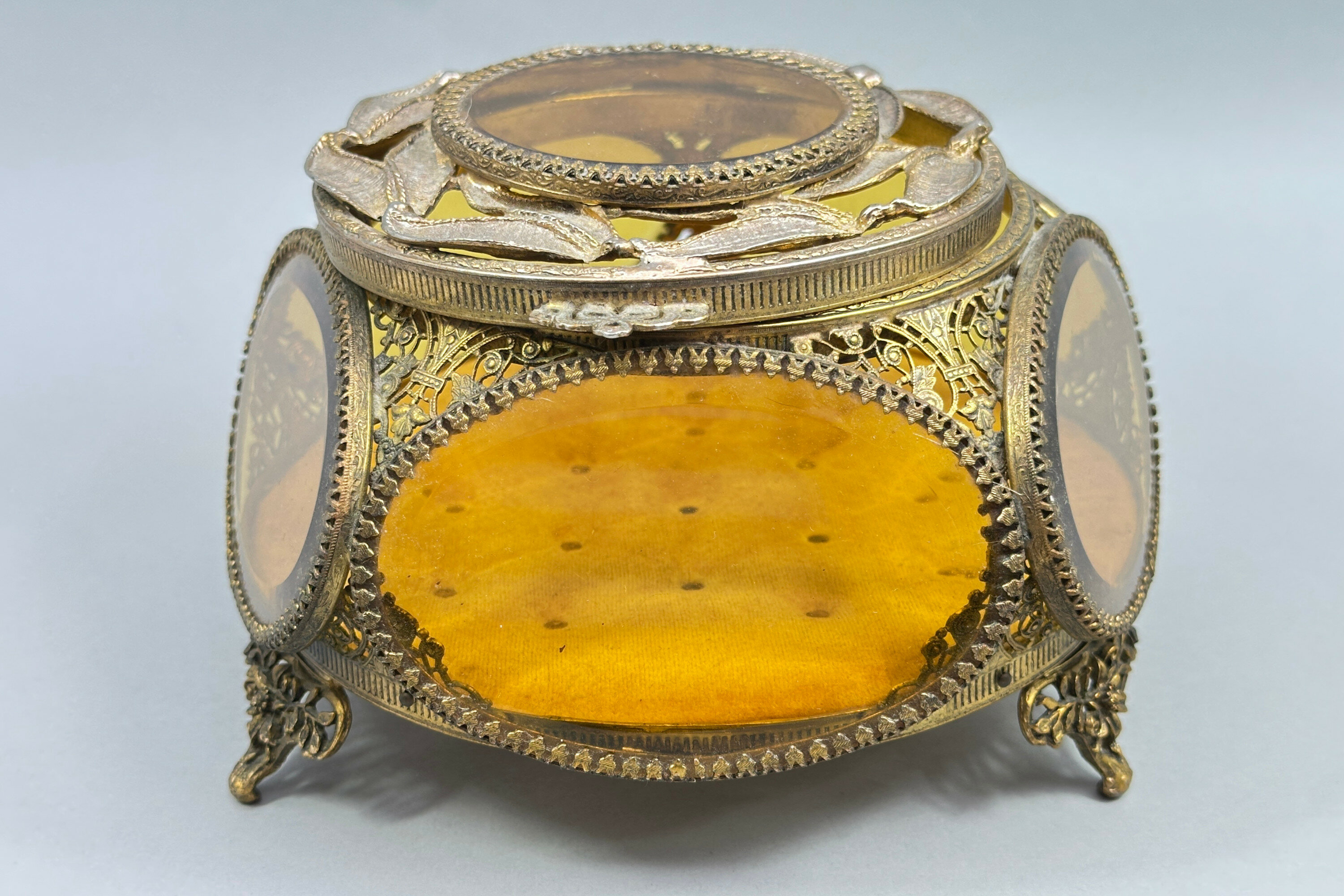
French Regency style Bevelled Amber Glass & Filigree Ormolu Casket, mid twentieth century
Price: £55Various pieces in this style where amber glass panels are combined with elaborate gilt metal work can be found. Most were intended as dressing table ornaments, as here. Sometimes termed 'Hollywood', after the American made products in this style of which Lot 1 in this sale is a prime specimen, these items were designed to add a touch of luxury to the bedroom. They are usually regarded as French and thought to have been made between the 1920s and 1940s. This is a particularly nice example with no damage to either the glass or the metalwork.
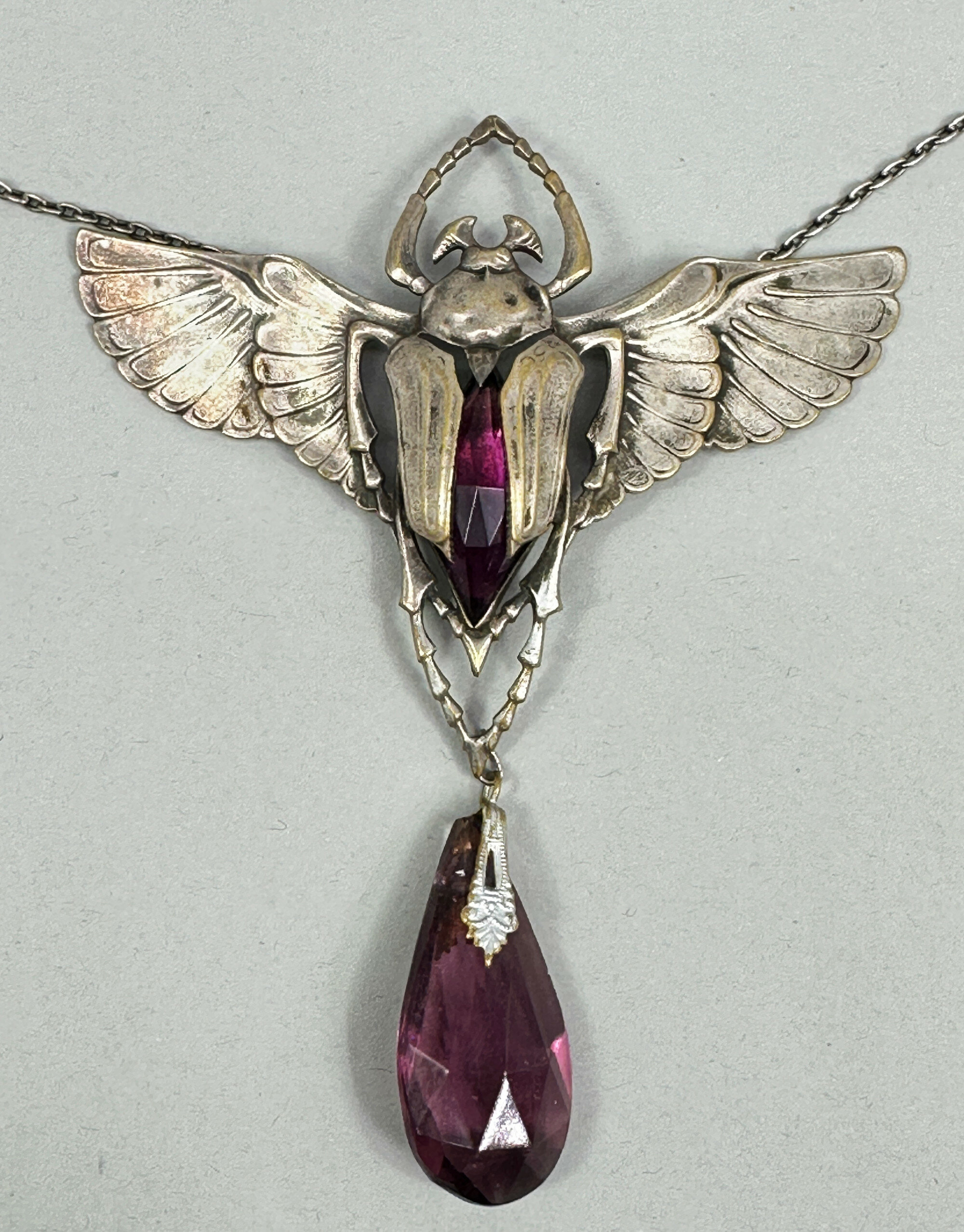
Egyptian Revival winged scarab statement necklace c1920
Price: £45
Set of two vintage Chinese painted eggs in glass display boxes
Price: £25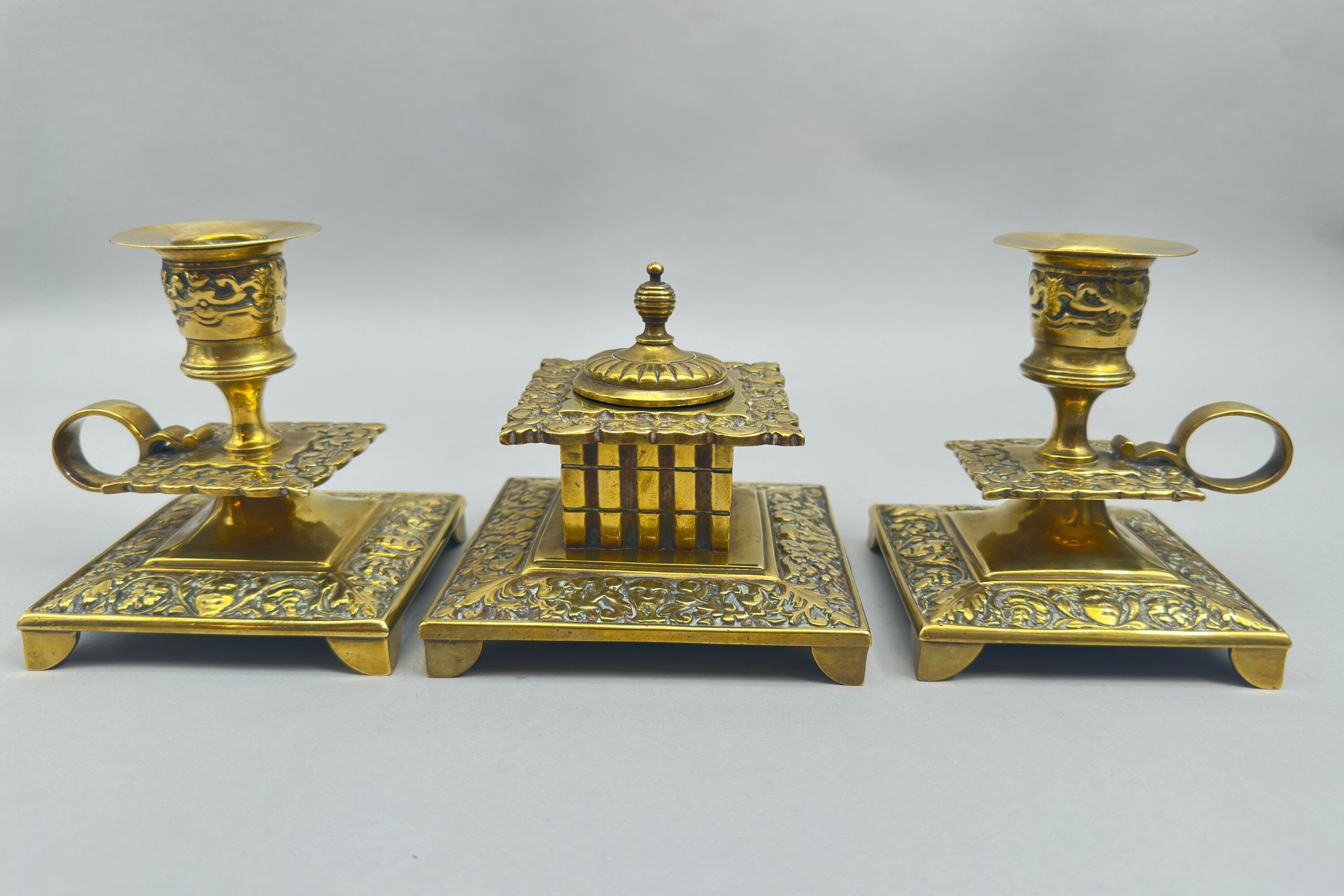
Renaissance Revival Brass Desk Set, English c 1900
Price: £55
Fun group of two porcelain brooches with paid of small earrings 1960s
Price: £15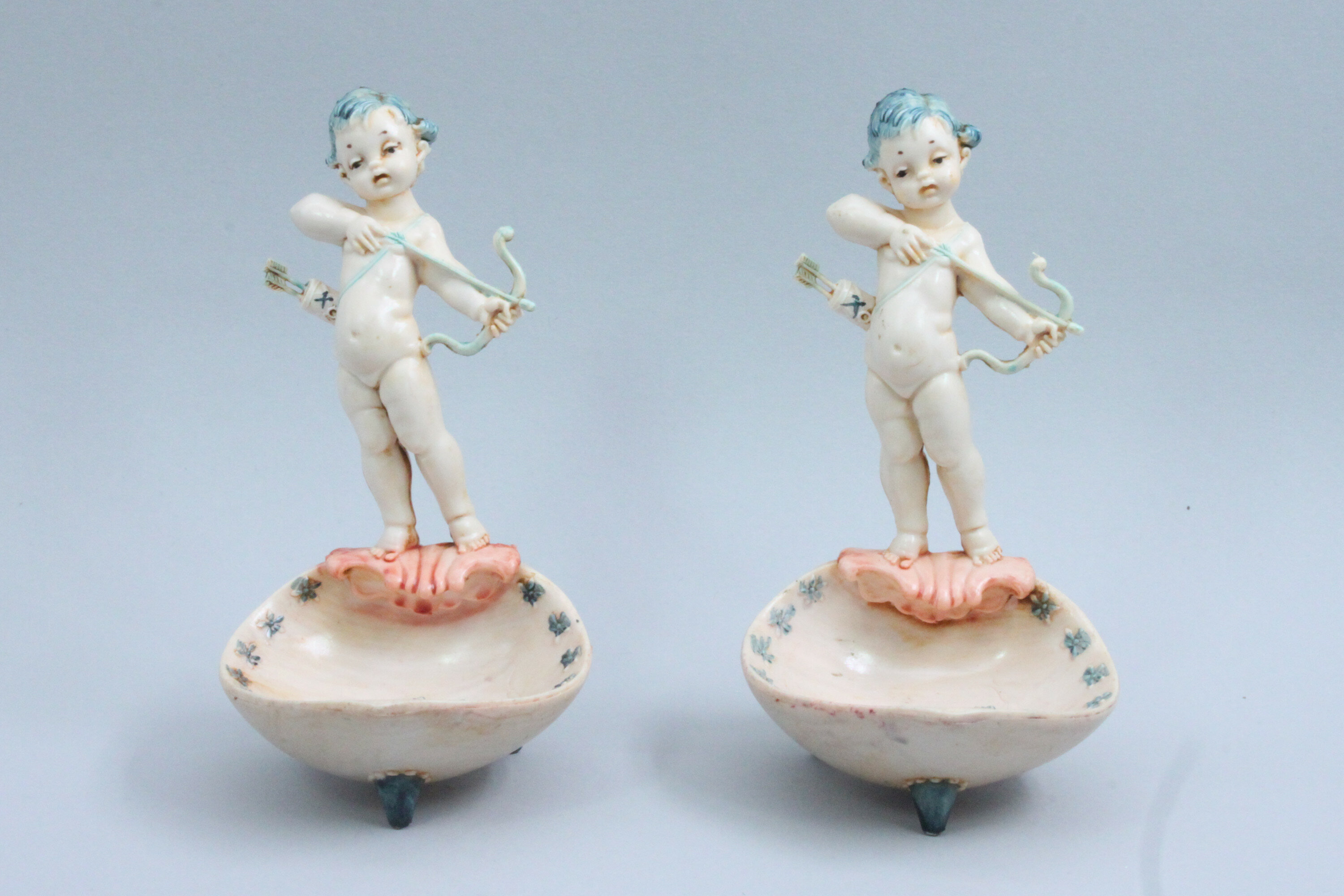
Pair of Bakelite Salts, Italian Fontanini, mid C20th
Price: £45The well known Italian firm Fontanini, now famous for producing nativity Sets, was founded by Emanuele Fontanini as a small local business in a single room in the tiny Tuscan town of Bagni di Lucca. Working at first in papier mâché, the business turned to the use of bakelite once it became available, marking their pieces with a spider emblem and the wording ‘depose Fontanini up until the 1970s after which these were replaced by the Fontanini name, the date of manufacture, and a small fountain, which allows fairly accurate dating here. Manufacturing is now caried out by the fourth generation of the family.
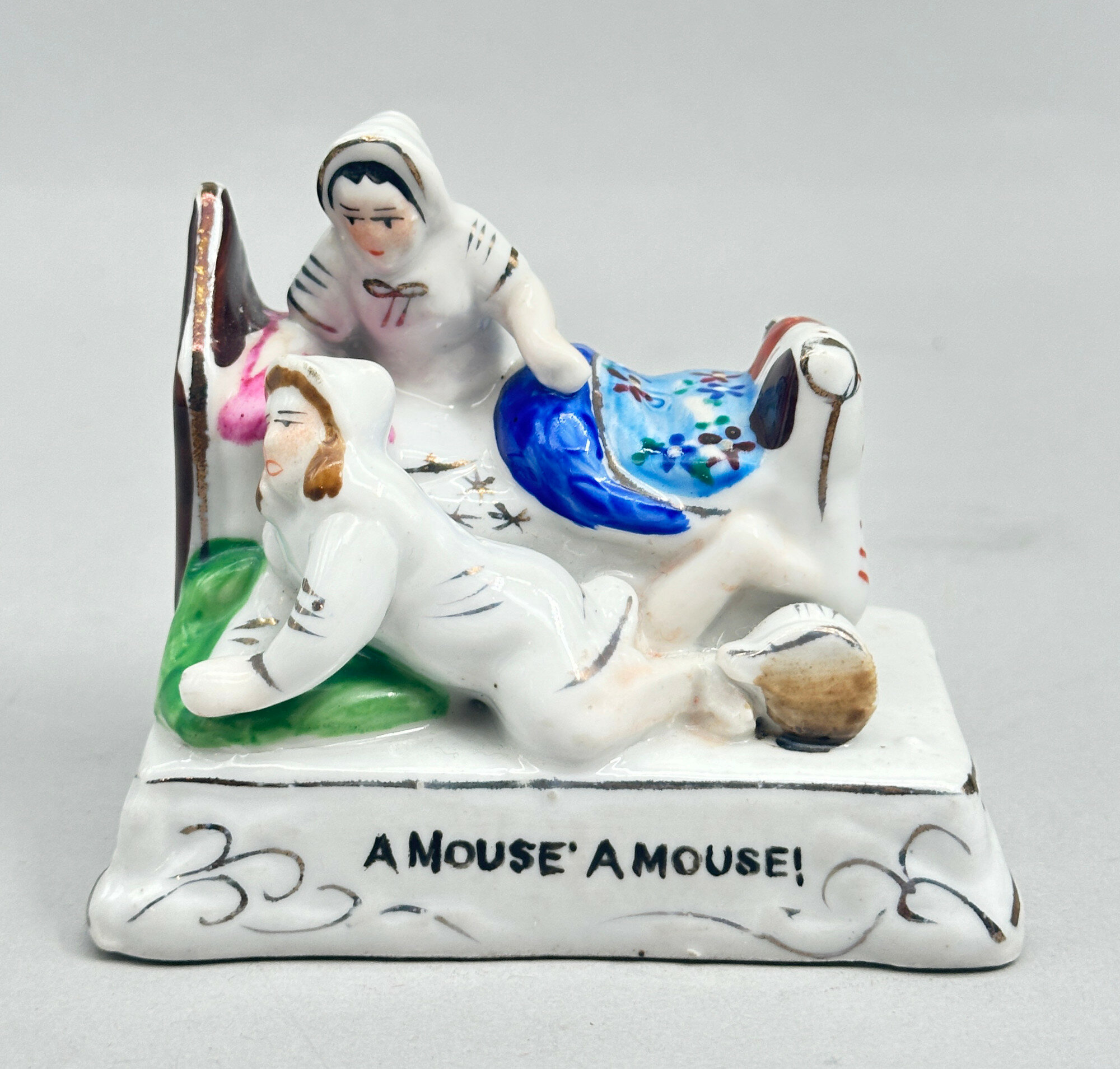
Fairing Figurine – A Mouse A Mouse, German, late C19th
Price: £25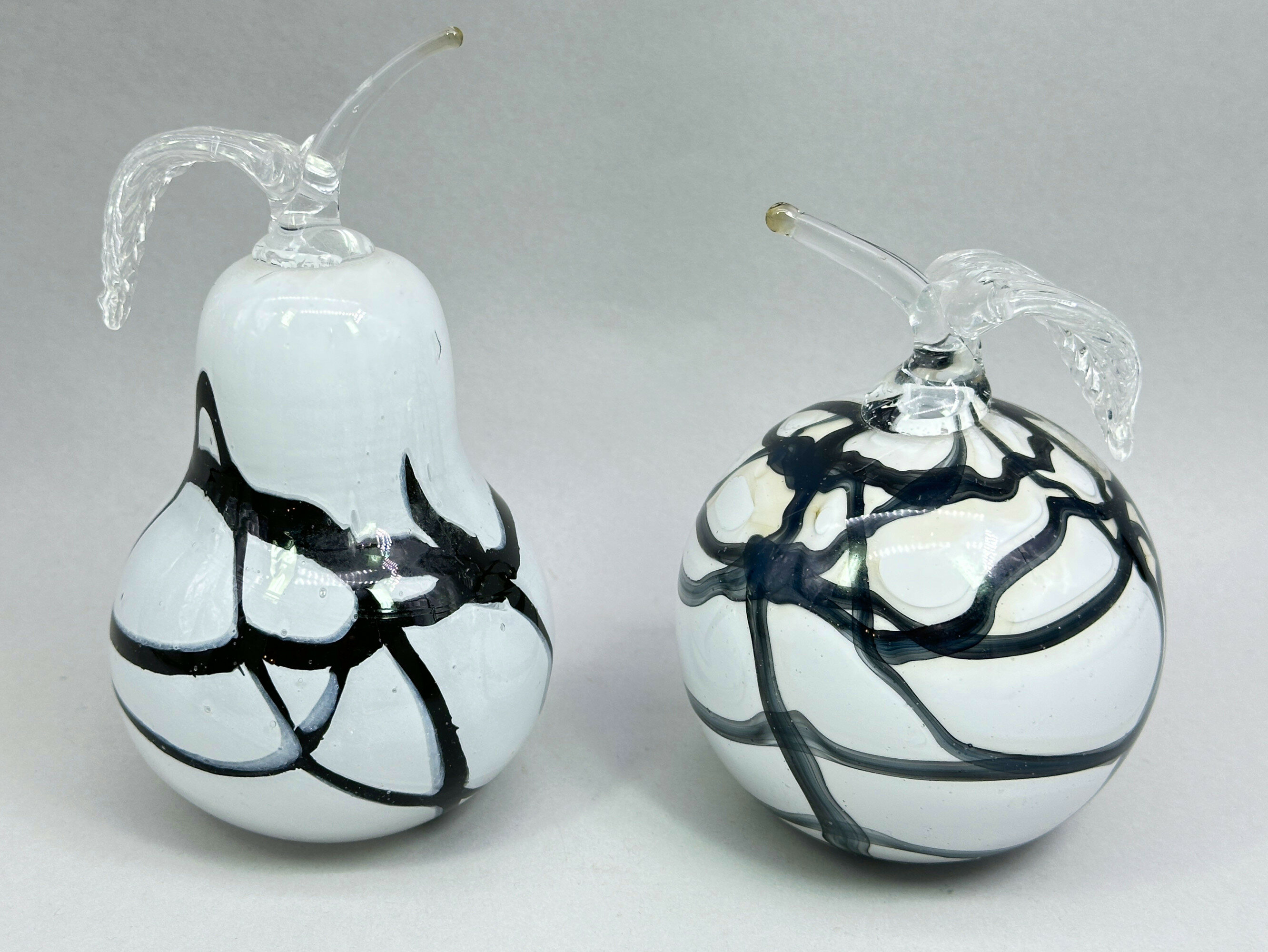
Two Amelia Art Glass Vases, Apple and Pear
Price: £30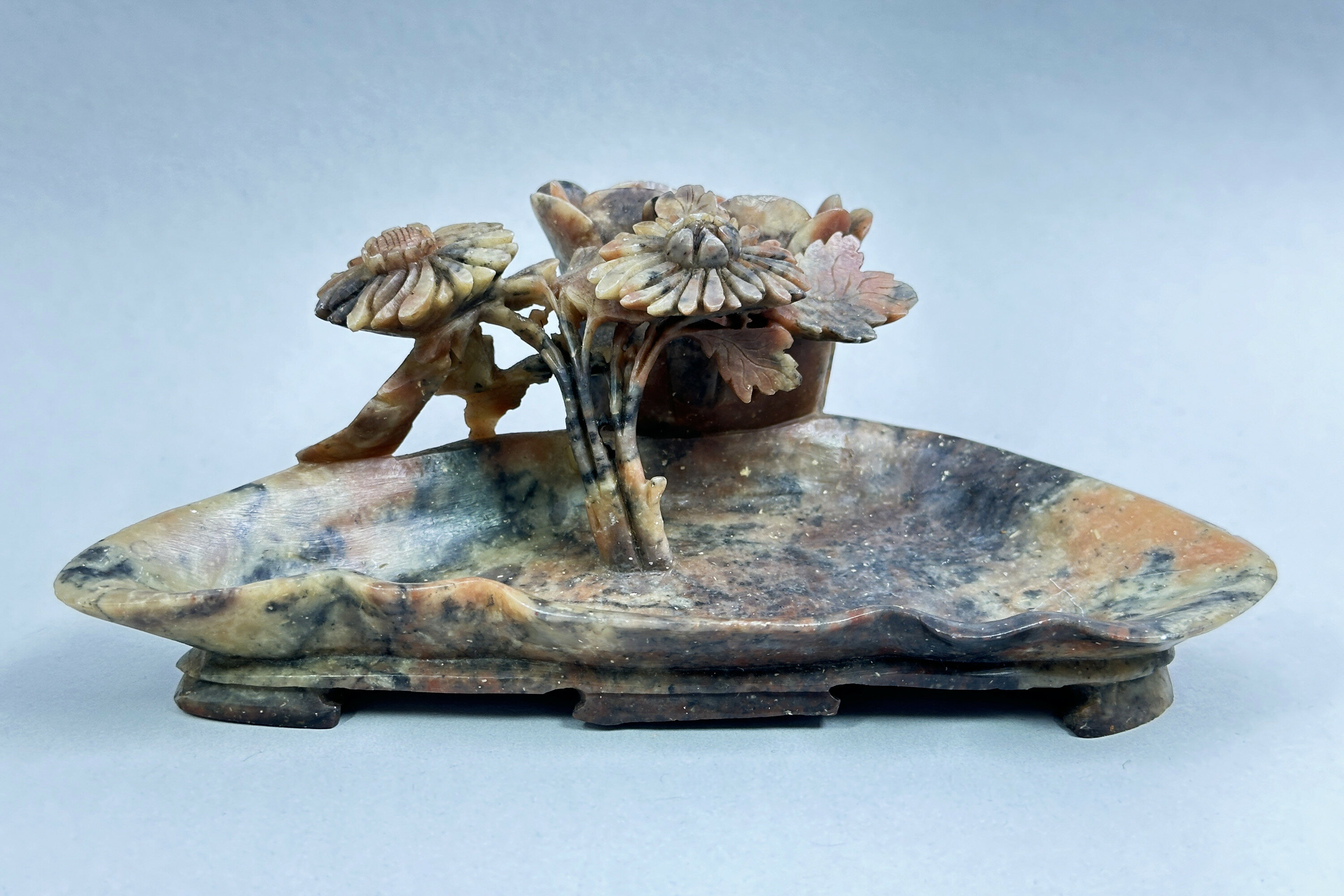
Chinese Soapstone Brushwasher with flowering lotus, early C20th
Price: £95
Chinese Bone Netsuke carving of a man holding a musical instrument, early C20th
Price: £25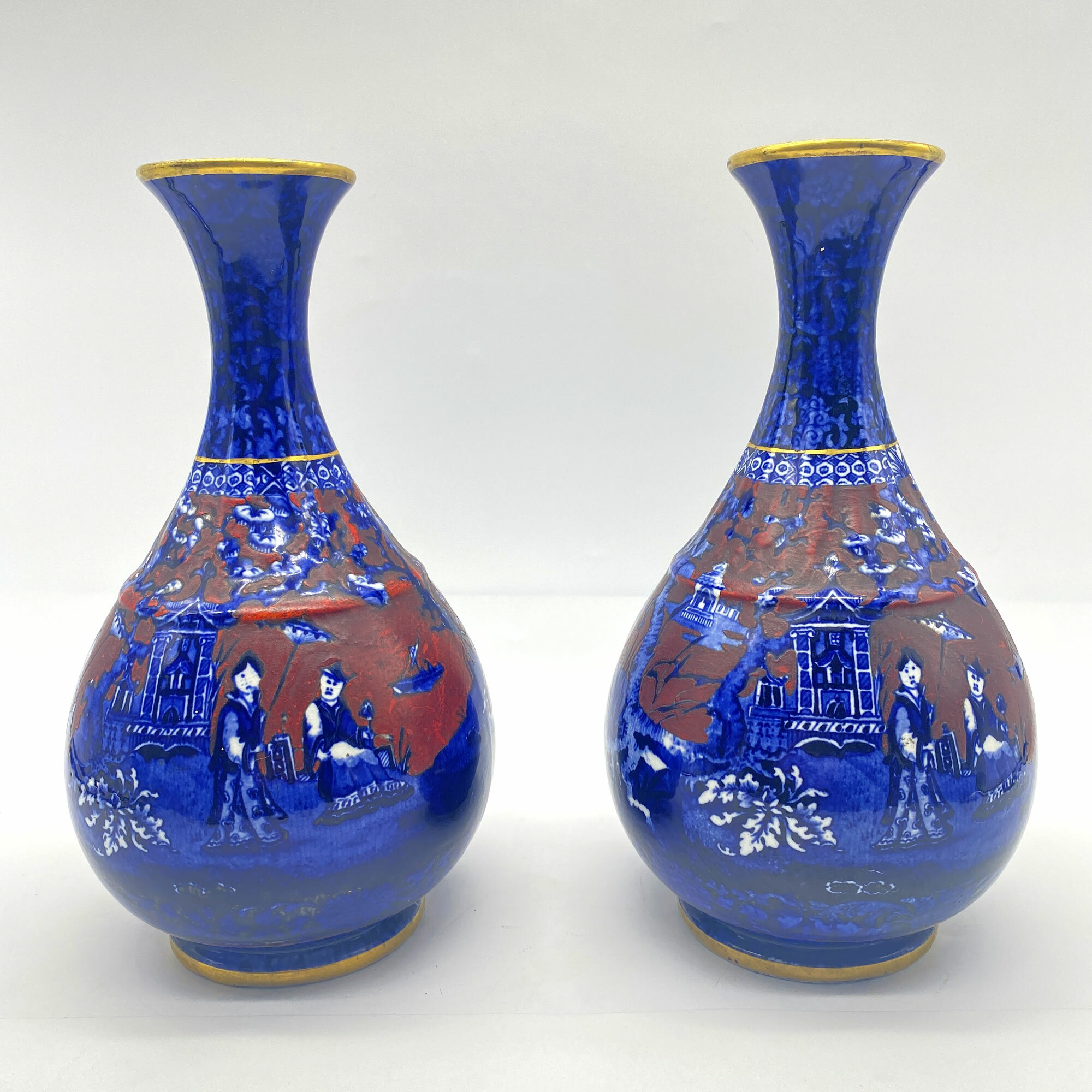
Pair of J Kent Chinoiserie Foley Ware Vases c1920s
Price: £75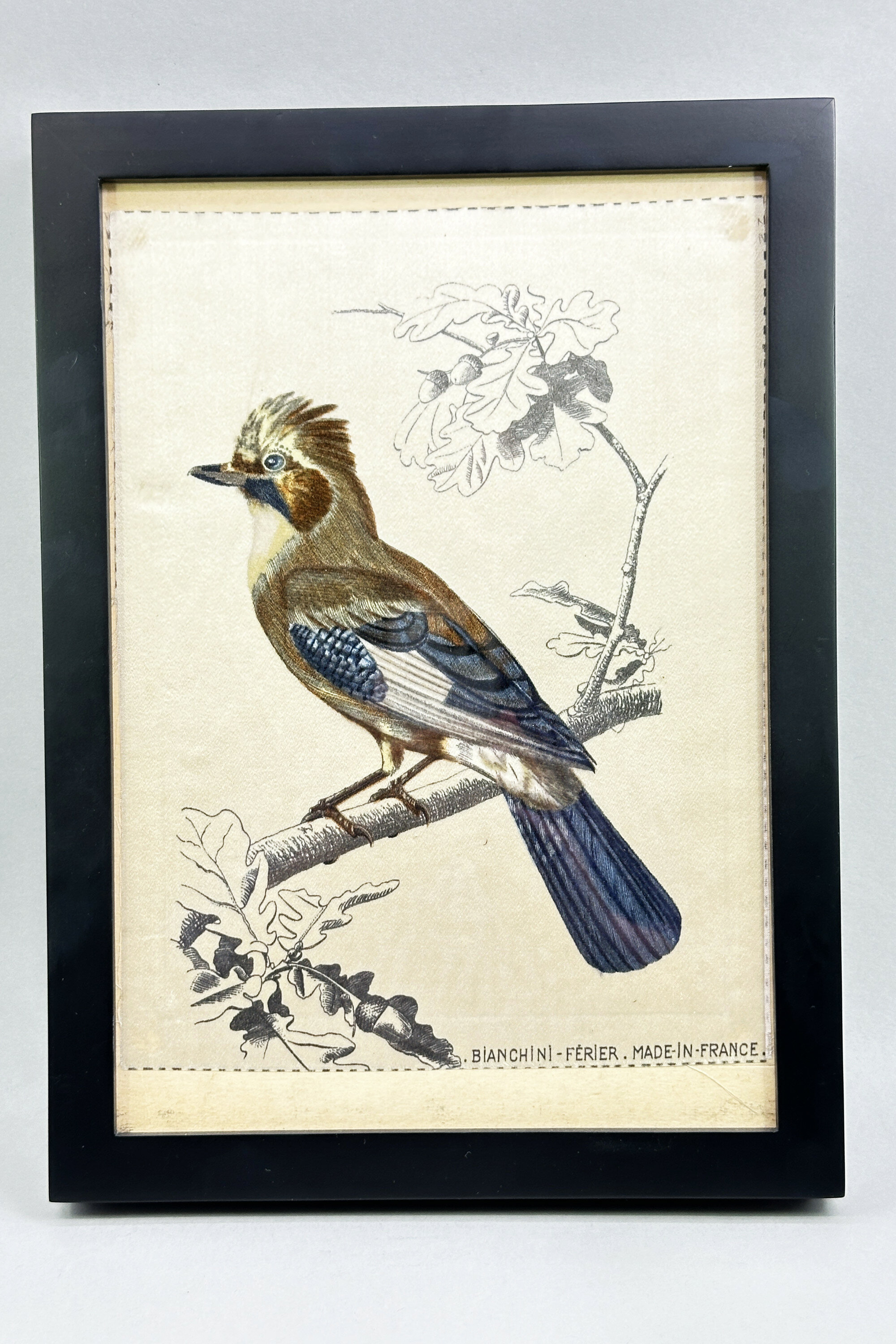
Silk Print of a Bird, Bianchini-Ferier, France, early C20th
Price: £25Bianchini Ferier was a silk weaving manufacturer based in Lyons. Founded in 1888 by Francois Atuyer, Charles Bianchini and Francois Ferier, it first produced fine silk damasks mainly for the clothing industry. After gaining a silver medal at the Paris Exposition Universelle of 1889 it went on to enjoy great success and many well known artists created designs for it in the early C20th, most notably Raoul Dufy. Production continued until the early 1990s when the firm was acquired by Tissages Bauman.
This print resembles designs in the firm’s archives from the late C19th and was probably created in the early C20th. It was designed for framing and the dotted line definition of the composition can be seen at the edges. Presented now in a modern surround it provides an excellent example of the firm’s work and a reflection of the Art Nouveau style so popular when it was produced.
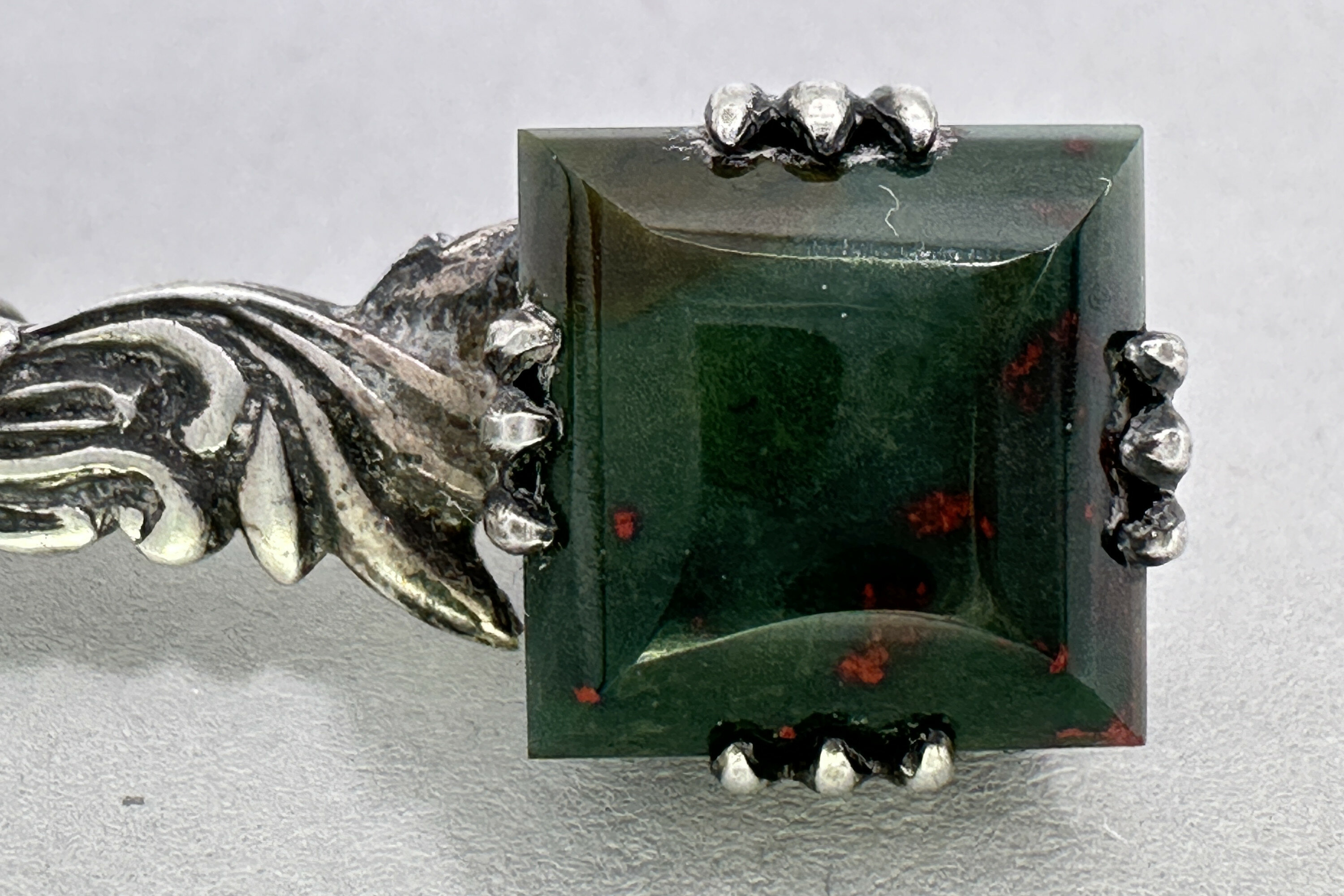
Edwardian Scottish bloodstone bar brooch c1910
Price: £20